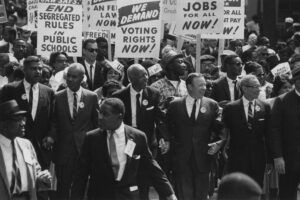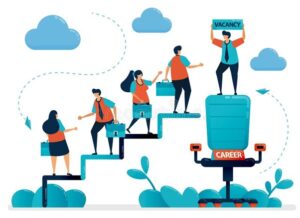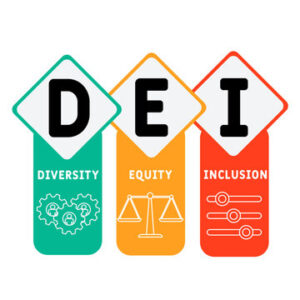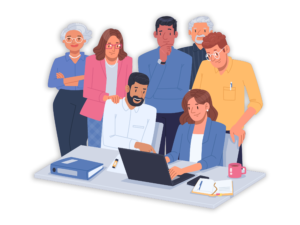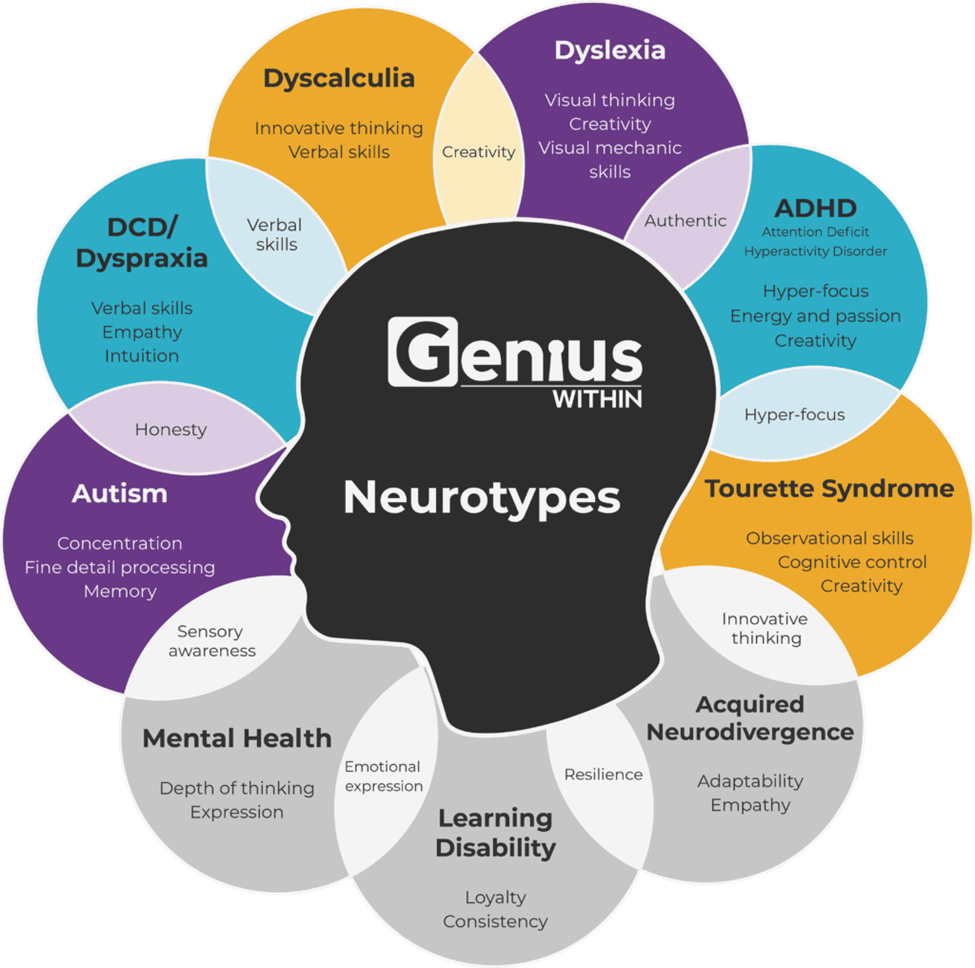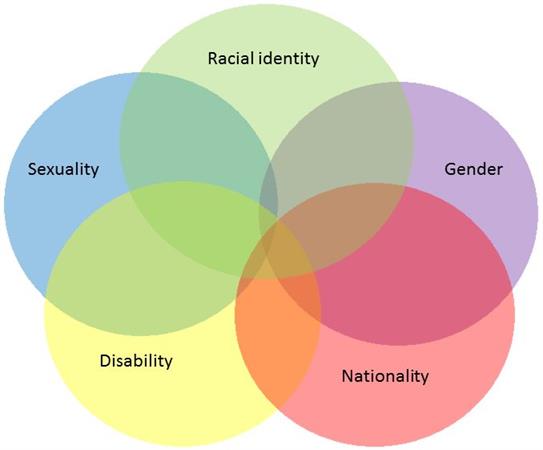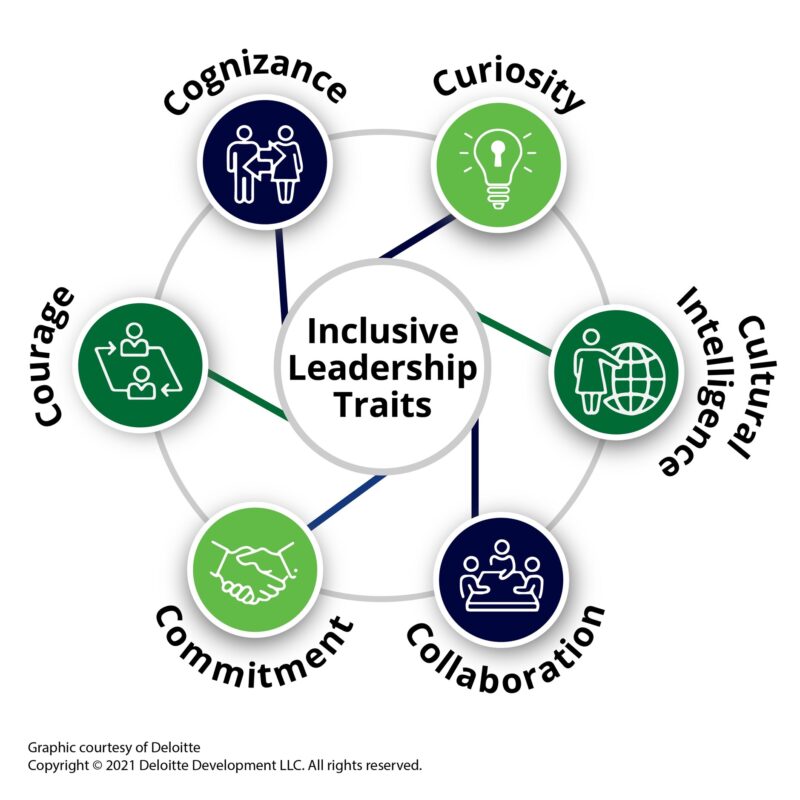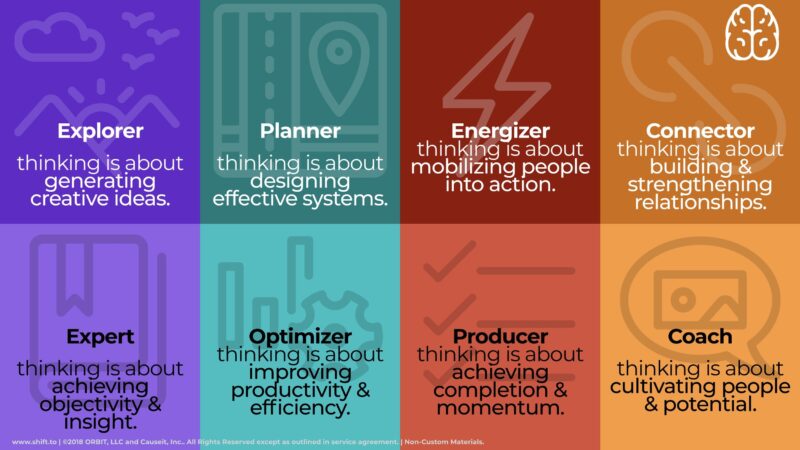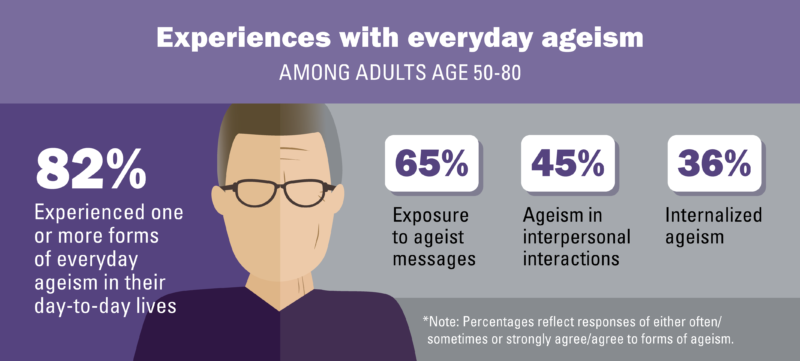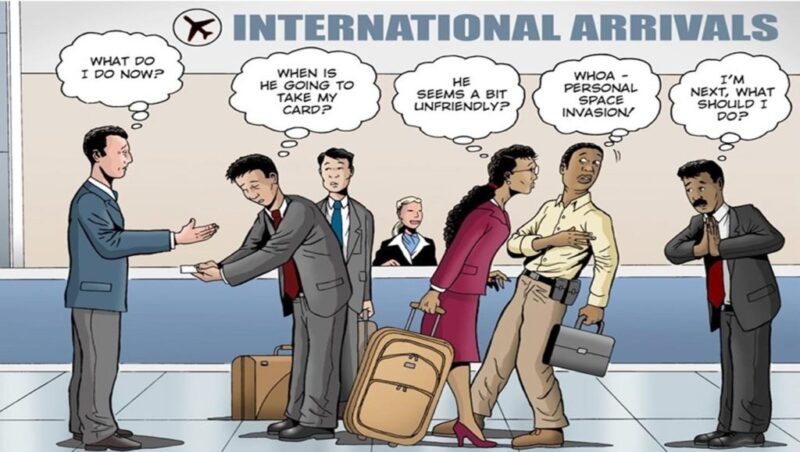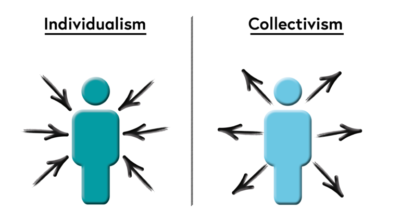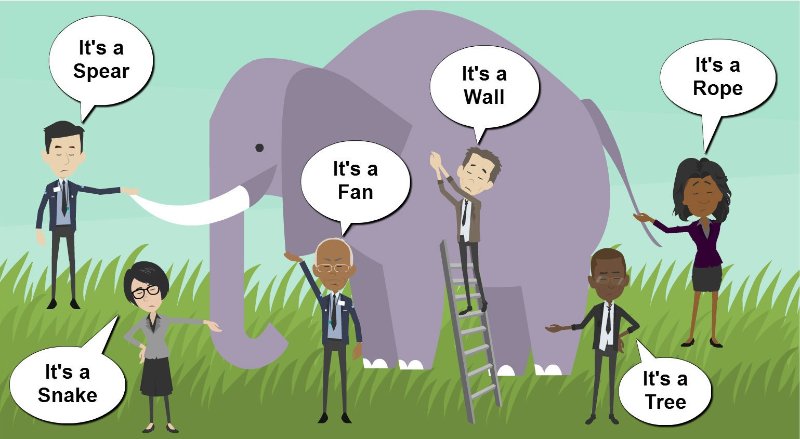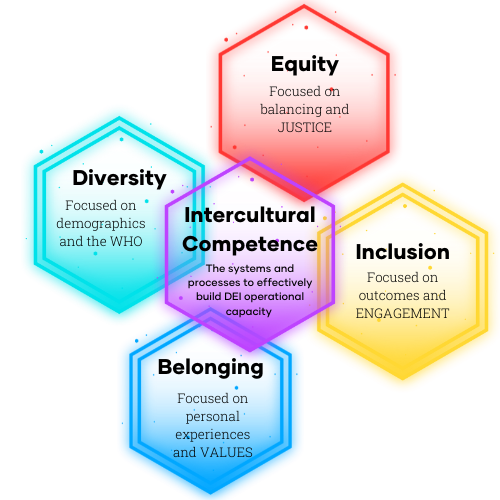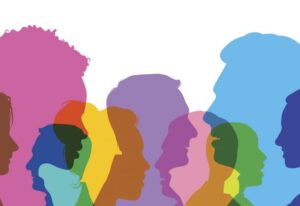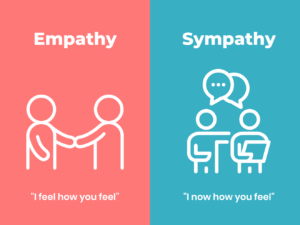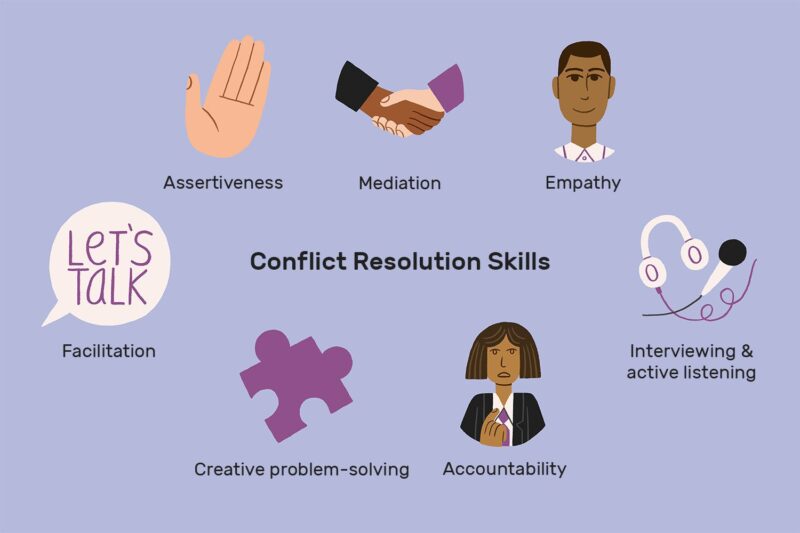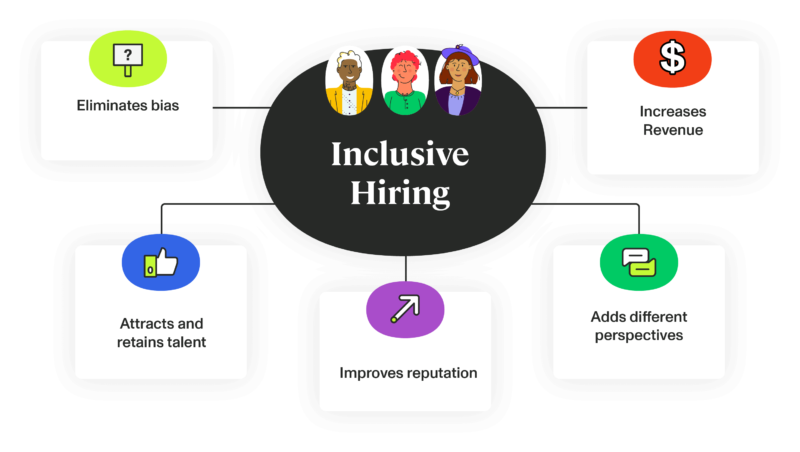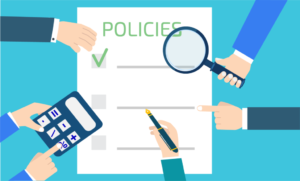Diverse Dynamics – Workshop 1 (Understanding Diversity)

The Appleton Greene Corporate Training Program (CTP) for Diverse Dynamics is provided by Mrs. Mallik Certified Learning Provider (CLP). Program Specifications: Monthly cost USD$2,500.00; Monthly Workshops 6 hours; Monthly Support 4 hours; Program Duration 12 months; Program orders subject to ongoing availability.
If you would like to view the Client Information Hub (CIH) for this program, please Click Here
Learning Provider Profile

Mrs. Mallik is a seasoned Diversity, Equity, and Inclusion (DEI) strategist, consultant, and coach dedicated to creating workplaces where underrepresented individuals can thrive. With a proven track record of driving systemic change at Amazon, Meta, and Tandem Diabetes Care, she has successfully led large-scale DEI initiatives that embed equity into corporate structures, policies, and leadership practices.
A results-driven leader, Mrs. Mallik specializes in developing and executing DEI strategies that go beyond surface-level commitments, ensuring long-term, measurable impact. She has worked closely with executives and HR leaders to implement inclusive hiring frameworks, build equitable leadership pipelines, and create accountability systems that drive cultural transformation. Her ability to navigate complex organizational dynamics allows her to influence key decision-makers and align DEI efforts with business objectives.
As a coach, Mrs. Mallik approaches her work with compassion, intersectionality, and kindness, empowering underrepresented professionals to advance in their careers while equipping leaders with the tools to foster genuinely inclusive workplaces. She is also the founder of Active Allies, a program designed to move individuals and organizations beyond performative allyship and into sustained, meaningful action.
A sought-after speaker and facilitator, Mrs. Mallik blends research-backed insights with real-world experience to engage audiences in transformative conversations. Whether guiding organizations through high-impact DEI strategies or coaching individuals on career advancement, she remains committed to driving lasting change through education, advocacy, and strategic leadership.
MOST Analysis
Mission Statement
When many people consider the terms diversity, equity, and inclusion, the initial associations often revolve around race and gender. However, diversity extends far beyond these aspects; we are all more intricate than our race and gender identities. To be effective agents of change in our organizations and communities, it is crucial to cultivate a nuanced understanding of diversity, appreciate how it contributes richness to our communities, and recognize our individual roles in this tapestry. This session will enlighten you on various dimensions of diversity, underscore the significance of diversity in the workplace, and present the business case for fostering diversity within organizations.
Objectives
01. DEI Isn’t New: departmental SWOT analysis; strategy research & development. Time Allocated: 1 Month
02. Breaking Down the Acronym: departmental SWOT analysis; strategy research & development. Time Allocated: 1 Month
03. The Many Dimensions of Diversity: departmental SWOT analysis; strategy research & development. Time Allocated: 1 Month
04. Intersectionality: The Overlapping Layers of Identity: departmental SWOT analysis; strategy research & development. Time Allocated: 1 Month
05. Cognitive and Personal Attributes: departmental SWOT analysis; strategy research & development. Time Allocated: 1 Month
06. Physical and visible Characteristics: departmental SWOT analysis; strategy research & development. Time Allocated: 1 Month
07. Cultural and Social Elements: departmental SWOT analysis; strategy research & development. 1 Month
08. Life Circumstances: departmental SWOT analysis; strategy research & development. Time Allocated: 1 Month
09. The Business Case for Diversity: departmental SWOT analysis; strategy research & development. Time Allocated: 1 Month
10. Building Cultural Competency: departmental SWOT analysis; strategy research & development. Time Allocated: 1 Month
11. Empathy in Leadership and Teamwork: departmental SWOT analysis; strategy research & development. Time Allocated: 1 Month
12. Building DEI into the Fabric: departmental SWOT analysis; strategy research & development. Time Allocated: 1 Month
Strategies
01. DEI Isn’t New: Each individual department head to undertake departmental SWOT analysis; strategy research & development.
02. Breaking Down the Acronym: Each individual department head to undertake departmental SWOT analysis; strategy research & development.
03. The Many Dimensions of Diversity: Each individual department head to undertake departmental SWOT analysis; strategy research & development.
04. Intersectionality: The Overlapping Layers of Identity: Each individual department head to undertake departmental SWOT analysis; strategy research & development.
05. Cognitive and Personal Attributes: Each individual department head to undertake departmental SWOT analysis; strategy research & development.
06. Physical and visible Characteristics: Each individual department head to undertake departmental SWOT analysis; strategy research & development.
07. Cultural and Social Elements: Each individual department head to undertake departmental SWOT analysis; strategy research & development.
08. Life Circumstances: Each individual department head to undertake departmental SWOT analysis; strategy research & development.
09. The Business Case for Diversity: Each individual department head to undertake departmental SWOT analysis; strategy research & development.
10. Building Cultural Competency: Each individual department head to undertake departmental SWOT analysis; strategy research & development.
11. Empathy in Leadership and Teamwork: Each individual department head to undertake departmental SWOT analysis; strategy research & development.
12. Building DEI into the Fabric: Each individual department head to undertake departmental SWOT analysis; strategy research & development.
Tasks
01. Create a task on your calendar, to be completed within the next month, to analyze DEI Isn’t New.
02. Create a task on your calendar, to be completed within the next month, to analyze Breaking Down the Acronym.
03. Create a task on your calendar, to be completed within the next month, to analyze The Many Dimensions of Diversity.
04. Create a task on your calendar, to be completed within the next month, to analyze Intersectionality: The Overlapping Layers of Identity.
05. Create a task on your calendar, to be completed within the next month, to analyze Cognitive and Personal Attributes.
06. Create a task on your calendar, to be completed within the next month, to analyze Physical and visible Characteristics.
07. Create a task on your calendar, to be completed within the next month, to analyze Cultural and Social Elements.
08. Create a task on your calendar, to be completed within the next month, to analyze Life Circumstances.
09. Create a task on your calendar, to be completed within the next month, to analyze The Business Case for Diversity.
10. Create a task on your calendar, to be completed within the next month, to analyze Building Cultural Competency.
11. Create a task on your calendar, to be completed within the next month, to analyze Empathy in Leadership and Teamwork.
12. Create a task on your calendar, to be completed within the next month, to analyze Building DEI into the Fabric.
Introduction
Diversity is often associated with race and gender, but it encompasses far more. Each individual brings a unique set of experiences, backgrounds, and perspectives that contribute to a dynamic and thriving workplace. Understanding diversity is about recognizing and valuing these differences—not just as a social good but as a business imperative. Organizations that embrace diversity foster innovation, enhance decision-making, and drive greater employee engagement.
Historically, diversity initiatives have evolved from compliance-driven policies to strategic efforts that fuel business growth. Companies have moved beyond merely acknowledging diversity to actively embedding it into their workplace culture. As industries continue to globalize and workforces become more interconnected, businesses that fail to prioritize diversity risk falling behind in innovation, reputation, and talent acquisition.
This session will explore the many dimensions of diversity and why it matters in today’s workplaces. We will examine its historical roots, its current impact on organizations, and the future of diversity in a rapidly changing business landscape. By developing a deeper understanding of diversity, you will be better equipped to contribute to a more inclusive, forward-thinking workplace that leverages the power of varied perspectives.
The Business Case for Diversity
Diversity is not just a moral or ethical imperative—it is a business necessity. Companies that prioritize diversity gain a competitive advantage by fostering innovation, enhancing decision-making, and improving employee engagement. Organizations with diverse workforces are better equipped to navigate complex challenges, understand diverse customer bases, and drive long-term profitability.
One of the most compelling reasons businesses invest in diversity is its direct impact on innovation. When teams are composed of individuals from different backgrounds, they bring a wider range of ideas, problem-solving approaches, and perspectives. A Boston Consulting Group (BCG) study found that companies with above-average diversity on their leadership teams generated 19% more revenue from innovation than less diverse counterparts. This is because diverse teams challenge groupthink, promote creative problem-solving, and develop products and services that resonate with a broader audience.
Tech companies, for example, have embraced diversity as a way to ensure their products meet the needs of diverse users. Google, for instance, has invested heavily in diversity programs to ensure its AI and digital products account for biases and better serve global customers. By incorporating diverse viewpoints early in development, businesses can create solutions that cater to a broader market.
Research consistently shows that diverse companies perform better financially. A McKinsey & Company report found that companies in the top quartile for gender diversity were 25% more likely to outperform their peers in profitability, while those in the top quartile for ethnic diversity had a 36% higher likelihood of financial success. These figures demonstrate that diversity is not just a social initiative—it directly impacts the bottom line.
Diverse organizations make better business decisions because they leverage multiple viewpoints, reducing blind spots in strategic planning. They are also more adaptable to market changes. Businesses that reflect the diversity of their customer base are more likely to anticipate shifting consumer trends and preferences, leading to more targeted marketing strategies and improved customer loyalty.
A workplace that embraces diversity fosters a culture of inclusion, which in turn drives employee engagement. Employees who feel valued for their unique backgrounds and perspectives are more motivated, productive, and committed to their organization. Deloitte research shows that inclusive organizations are twice as likely to exceed financial targets and six times more likely to be innovative and agile.
Diversity also enhances talent attraction and retention. Today’s workforce values inclusivity, and companies known for strong DEI initiatives attract top talent from a wide range of backgrounds. Employees who feel they belong are more likely to stay with an organization, reducing costly turnover rates.
Diversity is a strategic business advantage that drives innovation, enhances financial performance, and strengthens employee engagement. Organizations that embed diversity into their culture are more agile, creative, and competitive in today’s global marketplace. By fostering diverse teams, companies unlock the full potential of their workforce and set themselves up for long-term success.
The Evolution of Diversity in the Workplace – A Historical Perspective on Diversity Initiatives and Policies
Diversity in the workplace has undergone significant transformation over the past century. While early workplace cultures were often homogenous and exclusionary, social movements, legal reforms, and shifting societal values have led to a greater focus on inclusion and equity. The evolution of diversity initiatives and policies reflects broader societal changes and continues to shape how organizations approach fairness, representation, and belonging today.

Early 20th Century: Workplace Discrimination and Segregation
In the early 1900s, workplaces were largely segregated by race and gender. Women and People of Color faced systemic discrimination, with few legal protections against bias. Many industries excluded certain groups from employment or relegated them to lower-paying, menial jobs. The labor market was shaped by rigid gender roles, and opportunities for advancement were often unavailable to women and minority workers.
Mid-20th Century: Civil Rights and Legislative Changes
The 1940s and 1950s marked the beginning of workplace diversity initiatives, largely driven by labor rights movements. During World War II, women entered the workforce in large numbers as men went to war, challenging traditional gender norms. However, after the war, many were forced out of their jobs.
The Civil Rights Movement of the 1960s was a turning point. The passage of the Civil Rights Act of 1964 in the U.S. banned employment discrimination based on race, color, religion, sex, or national origin, making it illegal to deny job opportunities based on identity. The creation of the Equal Employment Opportunity Commission (EEOC) helped enforce these protections, and similar anti-discrimination laws emerged globally. Affirmative action policies also took shape during this time, encouraging organizations to actively promote diverse hiring and address systemic inequalities.
Late 20th Century: Expansion of Diversity Policies
By the 1980s and 1990s, businesses recognized diversity as more than just a legal requirement—it became a business strategy. Companies implemented Equal Opportunity Employment (EOE) policies and diversity training programs to address bias and foster inclusive cultures. The concept of “diversity management” emerged, emphasizing the benefits of diverse perspectives for creativity and innovation.
During this period, LGBTQ+ rights and disability inclusion became part of workplace diversity discussions. The Americans with Disabilities Act (ADA) of 1990 mandated workplace accommodations for individuals with disabilities, while companies began implementing policies to support LGBTQ+ employees.
21st Century: The Shift to Inclusion and Equity
The modern era of workplace diversity extends beyond representation to equity and inclusion. Companies are moving from compliance-driven diversity initiatives to fostering cultures where all employees feel valued. The #MeToo movement and the push for racial equity after 2020 reinforced the need for organizations to take meaningful action against discrimination.
Today, businesses recognize diversity as a key driver of innovation, employee engagement, and financial performance. DEI strategies now focus on eliminating systemic barriers, promoting equitable career advancement, and creating psychologically safe workplaces. As organizations continue to evolve, diversity efforts are becoming deeply embedded in business strategy rather than treated as standalone initiatives.
The evolution of workplace diversity reflects broader societal progress toward fairness and inclusion. While significant advancements have been made, challenges remain in ensuring true equity. Organizations that understand this history can build on past progress to create workplaces that are truly diverse, inclusive, and equitable for all.
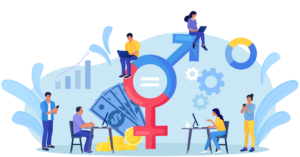
The Future of Diversity
Workplace diversity is continuously evolving, influenced by shifting demographics, globalization, and advancements in technology. As businesses adapt to a rapidly changing world, diversity will play an even more critical role in fostering innovation, resilience, and competitive advantage. Organizations that proactively embrace these changes will be better positioned for long-term success, while those that fail to adapt risk falling behind.
One of the most significant factors shaping the future of workplace diversity is changing demographics. With declining birth rates and aging populations in many developed countries, businesses must adjust their workforce strategies to accommodate older employees while simultaneously engaging younger generations. The traditional model of career progression is shifting, with people working longer due to financial necessity or personal choice. Companies will need to develop policies that support age diversity, offering flexible work arrangements, reskilling opportunities, and mentorship programs that facilitate knowledge-sharing between generations.
Additionally, millennials and Generation Z are becoming the dominant workforce groups, bringing different expectations regarding workplace culture and values. These generations prioritize equity, inclusion, and corporate social responsibility, pushing companies to go beyond surface-level diversity initiatives and make meaningful commitments to social justice, environmental sustainability, and ethical business practices.
Globalization and the Rise of Cross-Cultural Workforces
The increasing interconnectedness of the global economy means that workplaces will become more diverse than ever before. As remote work and digital collaboration become standard, employees from different cultural, linguistic, and national backgrounds will work together more frequently. This shift requires businesses to invest in cultural competency training and inclusive leadership practices that help employees navigate cross-cultural communication and avoid misunderstandings.
Additionally, companies expanding into new markets must ensure that their diversity, equity, and inclusion (DEI) strategies are globally relevant. While some aspects of diversity (such as gender equality) may be universal priorities, others—such as religious accommodations or caste-based discrimination—may be more pressing in specific regions. Businesses that tailor their DEI approaches to different cultural contexts will be better equipped to attract global talent and maintain an inclusive corporate culture.
The Impact of Technology on Workplace Diversity
Technology is playing an increasingly influential role in reshaping workplace diversity. Artificial intelligence (AI) and automation have the potential to reduce hiring biases by providing data-driven insights and eliminating human prejudices in recruitment. AI-powered tools can help organizations identify skills gaps, diversify candidate pipelines, and create fairer hiring processes. However, algorithmic bias remains a concern, as AI systems can unintentionally reinforce existing inequalities if they are trained on biased data. Businesses must implement ethical AI practices and ensure that their technological solutions promote, rather than hinder, workplace diversity.
Remote work and the rise of virtual collaboration platforms have also expanded access to job opportunities for individuals from underrepresented backgrounds. Employees no longer need to live in major urban centers to work for top companies, which can lead to more geographically and socioeconomically diverse teams. However, companies must be mindful of digital inclusion, ensuring that all employees have access to the necessary technology and training to thrive in a virtual work environment.
The Evolution of DEI Initiatives and Inclusive Leadership
As diversity becomes more embedded in corporate strategy, DEI initiatives will evolve to focus on equity and systemic change rather than just representation. Future diversity efforts will prioritize intersectionality, recognizing how different aspects of identity—such as race, gender, socioeconomic background, and disability—interact to shape workplace experiences. Companies will increasingly use data analytics and real-time feedback mechanisms to measure inclusion and track DEI progress in a transparent way.
Additionally, leadership expectations are changing. Future leaders will need to demonstrate cultural intelligence, emotional intelligence, and adaptability to effectively manage diverse teams. Organizations that invest in inclusive leadership development will build stronger, more cohesive teams that can navigate complex global challenges.
The future of workplace diversity will be shaped by demographic shifts, globalization, and technological advancements. Organizations that embrace multigenerational workforces, cross-cultural collaboration, ethical AI, and evolving DEI strategies will create more inclusive, innovative, and high-performing environments. By staying ahead of these trends, businesses can ensure they remain competitive in an increasingly diverse and interconnected world.
Your Role in Advancing Diversity
Creating a diverse and inclusive workplace is not solely the responsibility of leadership or HR departments—it requires the active participation of every individual in an organization. While company-wide policies and initiatives set the foundation, meaningful change happens when employees at all levels take ownership of fostering an inclusive culture. By being mindful of biases, advocating for equity, and embracing diverse perspectives, individuals can make a tangible impact in advancing diversity within their workplaces.
1. Recognize and Challenge Unconscious Bias
Unconscious biases are deeply ingrained assumptions that shape our interactions, often without us realizing it. These biases can affect hiring decisions, teamwork, and leadership opportunities. Individuals can take proactive steps to identify their biases by engaging in self-reflection, bias awareness training, and seeking feedback from colleagues. A simple yet powerful practice is to pause before making assumptions about a coworker’s skills or potential based on their background, gender, or appearance.
2. Advocate for Inclusive Conversations and Collaboration
An inclusive work environment is one where all voices are heard and valued. Individuals can contribute by ensuring that meetings, brainstorming sessions, and team discussions include diverse perspectives. This may involve actively inviting quieter colleagues to share their thoughts, supporting ideas from underrepresented employees, and addressing interruptions or dismissive behavior when it occurs. Encouraging a culture of active listening and respect ensures that all team members feel empowered to contribute.
3. Support Colleagues from Underrepresented Backgrounds
Allyship plays a crucial role in advancing diversity. Being an ally means standing up for colleagues who may face discrimination or exclusion and using one’s position to amplify their voices. Simple actions, such as mentoring a junior employee from an underrepresented background, speaking up against microaggressions, or advocating for equitable workplace policies, can have a lasting impact. Building genuine relationships with colleagues of different backgrounds helps create a culture of mutual support and understanding.
4. Educate Yourself on DEI Issues and Best Practices
Diversity, equity, and inclusion (DEI) is an evolving field, and staying informed is key to meaningful participation. Individuals can commit to lifelong learning by reading books, attending DEI workshops, following thought leaders, and engaging in conversations about inclusion. Education helps individuals navigate complex diversity topics with confidence and ensures that their efforts align with best practices.
5. Take Action in Everyday Decisions
Advancing diversity isn’t just about large-scale initiatives—it’s about everyday choices. Individuals can recommend diverse candidates for job openings, challenge biased hiring or promotion practices, and advocate for inclusive workplace policies. Small actions, such as recognizing cultural holidays, using inclusive language, and ensuring that workplace events accommodate all employees, contribute to long-term cultural change.
Advancing diversity is a collective effort that requires awareness, advocacy, and action from individuals at all levels. By challenging biases, fostering inclusion, supporting colleagues, educating themselves, and making intentional choices, employees can create more equitable workplaces where everyone feels valued. Diversity thrives when individuals recognize their power to contribute to change and take responsibility for building a more inclusive work environment.

Case Study: Diversity at Accenture – A Strategic Business Advantage
Background:
Accenture, a global consulting and professional services firm, has been recognized for its commitment to diversity, equity, and inclusion (DEI). With over 700,000 employees across 120 countries, the company has consistently ranked among the best workplaces for diversity. However, Accenture’s journey toward an inclusive culture has not been without challenges.
In the early 2000s, Accenture, like many large organizations, primarily viewed diversity through the lens of compliance—ensuring adherence to equal employment laws and corporate policies. However, as globalization reshaped business landscapes, Accenture recognized that diversity was more than a compliance issue; it was a strategic imperative for business growth, innovation, and employee engagement.
Shifting from Compliance to Inclusion:
By the mid-2010s, Accenture’s leadership took decisive steps to embed diversity into the company’s DNA. CEO Julie Sweet emphasized that diversity was critical to business success and set aggressive goals for workforce representation and inclusion. Key initiatives included:
1. Transparent Workforce Diversity Goals:
• Accenture set public diversity goals, committing to achieve a gender-balanced workforce (50% men and 50% women) by 2025.
• They aimed for 30% of managing directors globally to be women by 2025.
• The company focused on increasing racial and ethnic minority representation, particularly in leadership roles.
2. Inclusive Leadership and Accountability:
• Accenture required all leaders to undergo unconscious bias training and provided incentives for leaders who met diversity goals.
• A “Culture of Equality” dashboard was created, allowing employees to track diversity progress.
3. Recruitment and Retention Initiatives:
• The company expanded partnerships with universities and organizations that support underrepresented groups.
• Programs such as “Accent on Women” and “Accent on Tech” helped women and minority employees advance in STEM fields.
4. Employee Resource Groups (ERGs):
• Accenture established ERGs for different diversity dimensions, including race, gender, LGBTQ+, disability, and veterans.
• These groups provided mentorship, professional development, and a platform for employees to share experiences.
5. AI and Data-Driven DEI Strategies:
• Leveraging artificial intelligence, Accenture identified and mitigated biases in hiring and promotion decisions.
• AI-driven analytics helped measure DEI progress and refine strategies.
Impact of Diversity Initiatives:
Accenture’s proactive approach to diversity yielded tangible business benefits:
• Innovation & Revenue Growth: Accenture’s research found that organizations with inclusive cultures are six times more likely to be innovative. By fostering diverse teams, Accenture improved its problem-solving capabilities and created more tailored solutions for global clients.
• Improved Employee Engagement: Employee engagement scores increased as more employees felt valued and included. Diverse leadership led to a stronger sense of belonging.
• Financial Performance: Accenture’s commitment to diversity contributed to strong financial performance, as clients and investors increasingly prioritized corporate social responsibility and inclusion.
Challenges and Lessons Learned
Despite progress, Accenture faced several challenges:
• Unconscious Bias & Resistance: Some employees were skeptical about diversity initiatives, perceiving them as forced rather than beneficial. The company addressed this by linking diversity goals directly to business performance.
• Retention of Diverse Talent: While recruitment efforts improved, retaining diverse talent required ongoing cultural change. Accenture tackled this by strengthening mentorship programs and career development pathways.
• Global DEI Adaptation: Diversity challenges varied by region due to cultural and regulatory differences. Accenture tailored its DEI approach to specific countries while maintaining core inclusion values.
Discussion Questions for Participants:
1. The Business Case for Diversity:
• How did Accenture transition from a compliance-based approach to diversity to a business-driven strategy?
• What financial and innovation benefits did Accenture gain from prioritizing diversity?
2. Challenges and Solutions:
• What challenges did Accenture face in implementing its diversity initiatives?
• How did the company address unconscious bias and resistance among employees?
3. Leadership and Accountability:
• What role did leadership play in driving diversity efforts at Accenture?
• How did the company ensure accountability in achieving diversity goals?
4. Applying Lessons to Your Organization:
• What lessons from Accenture’s diversity strategy can be applied in your workplace?
• How can organizations ensure diversity initiatives lead to lasting cultural change rather than being seen as one-time efforts?
Executive Summary
Chapter 1: DEI Isn’t New
Diversity, Equity, and Inclusion (DEI) are not just modern concepts but deeply rooted in human history. The pursuit of fairness, recognition, and belonging has shaped societies and workplaces for centuries. This course manual explores DEI as an ongoing journey, helping participants understand its historical roots, systemic barriers, workplace evolution, and the role of inclusive leadership in today’s organizations.
The fight for equity has been ongoing for centuries, with key historical movements shaping today’s DEI efforts. The Civil Rights Movement in the U.S. laid the foundation for anti-discrimination laws, while the Women’s Rights Movement pushed for gender equality in voting, education, and employment. The Disability Rights Movement led to legislation ensuring accessibility and workplace inclusion, and the LGBTQIA+ Rights Movement fought for equal treatment and protections against discrimination. Global efforts, including anti-apartheid movements and Indigenous rights activism, have also contributed to today’s diversity conversations.
The workplace has transformed significantly over the past century, moving from exclusionary practices to increased inclusivity. In the early 20th century, workplaces were predominantly male and white, with minorities and women facing severe discrimination. The Civil Rights Era (1950s–1970s) led to legal reforms, forcing companies to diversify, although tokenism and resistance were common. In the 1980s and 1990s, gender and disability inclusion efforts gained traction, but many organizations still lacked genuine commitment. The modern DEI movement (2000s–present) has highlighted the business benefits of diversity, though organizations continue to struggle with performative gestures versus real change.
Despite progress, systemic barriers continue to prevent true workplace inclusion. Historical exclusion has created generational disadvantages, such as wealth gaps and unequal access to professional networks. Unconscious bias in hiring and promotions leads to fewer opportunities for underrepresented groups. Pay gaps and lack of leadership representation persist, particularly for Women of Color and marginalized communities. Exclusionary workplace cultures reinforce discrimination through microaggressions and informal networking biases. Furthermore, resistance to DEI initiatives remains a challenge, with some organizations scaling back efforts due to political backlash.
DEI remains crucial because historical inequalities have not been fully resolved. Workplace disparities, such as pay gaps and leadership underrepresentation, still exist. Inclusive workplaces drive innovation and performance, making DEI a competitive advantage. However, social and political resistance threatens progress, requiring leaders to stay committed. As demographics shift, younger generations demand more inclusive work environments, making DEI essential for talent retention. The role of inclusive leadership is more important than ever, as organizations that invest in equitable policies see long-term success.
This course manual provides a comprehensive look at DEI’s historical foundation, workplace evolution, systemic barriers, and future challenges. By understanding these key areas, participants will gain the knowledge and tools needed to actively support and lead DEI initiatives in their organizations.

Chapter 2: Breaking Down the Acronym
Diversity, Equity, and Inclusion (DEI) are often grouped together, but each concept has a distinct role in creating fair, inclusive, and thriving workplaces. This chapter breaks down these three elements, explaining their significance, how they interact, and why they must be implemented together for meaningful change.
Diversity goes beyond race, gender, and ethnicity. It includes identity diversity (e.g., age, nationality, disability, sexual orientation), cognitive diversity (different ways of thinking and problem-solving), experiential diversity (life experiences, socioeconomic background, and career paths), and functional diversity (varied industry and professional expertise). A diverse workforce brings multiple perspectives, but diversity alone is insufficient—it must be accompanied by equity and inclusion to be truly effective.
While equality treats everyone the same, equity recognizes that individuals have different needs and face unique challenges. Equity focuses on allocating resources fairly, addressing systemic barriers such as unconscious bias, pay gaps, and limited career advancement opportunities. Organizations that prioritize equity ensure that all employees have access to opportunities, not just an equal invitation to participate. This is done through mentorship programs, flexible policies, and regular pay audits to correct disparities.

An inclusive workplace ensures that diverse employees feel valued, heard, and empowered to contribute fully. Diversity without inclusion can lead to disengagement and high turnover rates, as employees may feel marginalized. Inclusion fosters psychological safety, allowing employees to express ideas without fear of bias. It also strengthens collaboration, innovation, and employee retention. Companies can cultivate inclusion by embedding diverse perspectives into decision-making, offering mentorship programs, and creating open communication channels.
Diversity, equity, and inclusion are interconnected and must function together for a workplace to be truly inclusive. Diversity provides representation, equity removes barriers, and inclusion fosters belonging. A company may hire diverse talent, but without equity, systemic obstacles may prevent fair career growth. Similarly, without inclusion, diverse employees may feel isolated or undervalued. A successful DEI strategy integrates all three elements into recruitment, leadership, and workplace policies.
This chapter provides a deeper understanding of DEI as a holistic framework. Participants will explore how organizations can go beyond surface-level diversity efforts to build fair, inclusive, and equitable workplaces where every employee has the opportunity to thrive.

Chapter 3: The Many Dimensions of Diversity
Diversity extends beyond race and gender to include age, ability, socioeconomic background, neurodiversity, language, education, and more. A truly inclusive workplace recognizes these dimensions and ensures that all employees feel valued, supported, and empowered to contribute fully. This chapter explores how organizations can broaden their understanding of diversity and create inclusive environments that embrace the unique perspectives and strengths of every individual.
Age Diversity: Bridging Generations in the Workplace
With multiple generations working side by side, organizations benefit from a mix of experience, innovation, and diverse problem-solving approaches. Older employees provide mentorship and historical knowledge, while younger employees bring fresh ideas and technological expertise. However, age-related biases can lead to missed opportunities. Companies must promote cross-generational mentorship, continuous learning, and inclusive cultures that value all age groups.
Neurodiversity: Embracing Different Ways of Thinking
Neurodivergent individuals, including those with autism, ADHD, dyslexia, and dyspraxia, bring unique cognitive strengths such as creativity, attention to detail, and problem-solving abilities. However, traditional workplaces may create barriers that prevent them from reaching their full potential. Organizations can foster neuroinclusivity by offering flexible work arrangements, clear communication methods, sensory-friendly environments, and alternative hiring practices.
Socioeconomic Background: Breaking Barriers to Opportunity
Employees from lower-income backgrounds often face limited access to education, fewer professional networks, and financial constraints that impact career advancement. Organizations can address these barriers through inclusive hiring, paid internships, mentorship programs, and financial assistance for professional development. Recognizing the impact of socioeconomic background ensures equitable career opportunities for all employees.
Disability Inclusion: Beyond Compliance to True Accessibility
True disability inclusion goes beyond legal compliance to proactively create workplaces that accommodate and empower employees with disabilities. Organizations must provide accessible technology, flexible work arrangements, physical accommodations, and inclusive hiring practices to ensure that employees with disabilities can thrive. Companies that embrace disability inclusion benefit from higher engagement, innovation, and a stronger brand reputation.
Language and Cultural Diversity: Fostering Global Mindsets
Language and cultural diversity are valuable assets in global workplaces, but language barriers and cultural misunderstandings can hinder inclusion. Organizations can foster linguistic and cultural inclusivity through multilingual communication, cultural competency training, and inclusive leadership practices. Embracing cultural fluency leads to better collaboration, innovation, and stronger market connections.
By recognizing and addressing these many dimensions of diversity, organizations can create truly inclusive environments where every employee—regardless of background—feels valued and empowered to succeed.

Chapter 4: Intersectionality: The Overlapping Layers of Identity
Intersectionality is the concept that individuals’ identities are shaped by multiple overlapping factors, such as race, gender, socioeconomic status, disability, and sexual orientation. These identity layers interact to influence privilege, discrimination, and lived experiences in society and the workplace. This chapter explores how intersectionality impacts workplace culture, leadership, and DEI strategies, helping organizations move beyond one-size-fits-all approaches to diversity.
Legal scholar Kimberlé Crenshaw introduced the concept of intersectionality in 1989 to highlight how Black women face unique discrimination that cannot be understood by looking at race or gender separately. Over time, the framework expanded to include other overlapping identity factors, helping workplaces understand how individuals experience multiple forms of marginalization.
In corporate settings, traditional DEI efforts often focus on singular identity groups—such as increasing gender representation or hiring more People of Color. However, an intersectional approach recognizes that individuals with multiple marginalized identities face distinct challenges that require tailored policies and support systems.

Key Workplace Challenges and Solutions
• Bias in Hiring and Promotions – Employees with intersectional identities often face greater barriers to career advancement. Women of Color, LGBTQ+ employees, and disabled professionals are underrepresented in leadership roles due to multiple layers of bias. Organizations must analyze leadership pipelines through an intersectional lens to ensure fair representation.
• Workplace Culture and Microaggressions – Employees with overlapping marginalized identities frequently experience microaggressions, exclusion, or pressure to conform to dominant workplace norms. Intersectional bias training and leadership programs help create safer, more inclusive environments.
• Pay Gaps and Economic Disparities – Women of color, disabled women, and LGBTQ+ employees face larger wage gaps than their white or male counterparts. Pay equity audits that analyze multiple identity factors are essential to closing these gaps.
Inclusive Leadership and Intersectional DEI Strategies
Leaders who adopt an intersectional lens recognize the unique challenges faced by employees with overlapping marginalized identities and implement targeted policies to support them. Key strategies include:
• Listening to Employee Voices – Engaging employees through focus groups, mentorship programs, and Employee Resource Groups (ERGs) designed to address intersectionality.
• Creating Inclusive Policies – Implementing flexible work arrangements, accessible healthcare benefits, and equity-focused leadership development programs.
• Using Intersectional Data Analytics – Tracking diverse hiring, pay gaps, and career progression trends through an intersectional framework.
By understanding intersectionality, organizations can build more inclusive, equitable workplaces that support employees’ full identities. Moving beyond surface-level diversity efforts ensures that all employees feel valued, empowered, and positioned for success.

Chapter 5: Cognitive and Personal Attributes
This chapter explores how different thinking styles, personalities, and educational backgrounds shape workplace dynamics, collaboration, and innovation. Recognizing and valuing these differences allows organizations to enhance problem-solving, foster inclusion, and create high-performing teams.
Cognitive diversity refers to the variety of ways individuals process information and solve problems. Some employees are analytical and data-driven, while others are creative and intuitive thinkers. Practical thinkers focus on real-world applications, whereas conceptual thinkers explore future possibilities. Reflective thinkers take an introspective, research-driven approach to decision-making. When organizations embrace different thinking styles, they enhance innovation and problem-solving while avoiding groupthink. However, cognitive diversity can also lead to miscommunication and conflict if differences are not properly understood and valued.
Personality traits, particularly introversion, extroversion, and ambiversion, influence how employees communicate, collaborate, and contribute. Introverts excel at deep thinking and independent work, while extroverts thrive in social and fast-paced environments. Ambiverts balance both traits, adapting to different situations. Organizations can support all personality types by offering flexible work environments, balancing meeting formats, and valuing different communication styles.
Educational backgrounds influence how individuals approach challenges and problem-solving. Employees with STEM degrees often take an analytical, data-driven approach, while those from humanities and social sciences bring critical thinking and creativity. Vocational and technical training emphasizes practical knowledge and hands-on experience, while self-taught individuals often demonstrate adaptability and initiative. Diverse educational experiences enrich workplace discussions, drive innovation, and create well-rounded teams.
To maximize the strengths of diverse thinkers, organizations must foster inclusive work environments that accommodate different cognitive styles. Key strategies include:
• Diversifying communication methods (written, verbal, and visual formats).
• Adapting meeting structures to support both fast and reflective thinkers.
• Encouraging flexible work arrangements to match employees’ work preferences.
• Recognizing multiple problem-solving approaches rather than favoring one style.
By embracing cognitive, personality, and educational diversity, organizations can create dynamic, high-performing teams where every employee’s strengths are recognized and utilized. This chapter provides a foundation for understanding how cognitive and personal attributes contribute to a more inclusive, innovative, and productive workplace.

Chapter 6: Physical and visible Characteristics
Physical and visible characteristics, such as age, disability, body size, and overall appearance, significantly influence workplace experiences. These observable traits affect how individuals are perceived, treated, and included in professional environments. While diversity efforts often focus on factors like race and gender, physical characteristics can also lead to biases, stereotypes, and barriers that impact career advancement, workplace interactions, and overall inclusion.
This chapter explores the importance of recognizing physical diversity, challenging stereotypes, and fostering truly inclusive environments that accommodate employees of all ages, abilities, and body types. Organizations must move beyond compliance-based approaches and take proactive steps to ensure accessibility, age-inclusivity, and equitable treatment of all employees.
1. Age and Workplace Inclusion
Age-diverse teams bring unique perspectives, skills, and experiences. However, ageism—discrimination based on age—can affect both older and younger employees, limiting their opportunities for hiring, career growth, and promotions. This section discusses how organizations can foster age-inclusive environments by challenging stereotypes, encouraging cross-generational mentorship, and ensuring professional development is accessible to all age groups.
2. Disability and Accessibility
Creating an inclusive workplace for employees with disabilities goes beyond meeting legal compliance standards. This section explores how businesses can implement physical, digital, and cultural accessibility measures, such as adaptive workspaces, assistive technologies, flexible work arrangements, and inclusive hiring practices. Real-life examples, like Walgreens’ integration of employees with disabilities, demonstrate the benefits of fostering an accessible and equitable work environment.
3. Body Diversity and Bias
Size-based discrimination is an often-overlooked workplace issue. Weight bias can affect hiring, promotions, and overall workplace treatment, leading to unfair professional disadvantages. This section examines how businesses can challenge weight-related biases, redesign office spaces for inclusivity, and shift wellness programs from a weight-loss focus to a more holistic well-being approach.
4. The Role of Appearance in Workplace Perception
Physical appearance influences hiring decisions, promotions, and leadership opportunities. Biases related to height, weight, grooming, and attractiveness can shape career trajectories, often disadvantaging those who do not fit conventional beauty norms. This section explores ways to mitigate appearance-based bias through standardized hiring processes, inclusive dress codes, and diverse leadership representation.
By understanding how physical and visible characteristics impact workplace experiences, organizations can develop policies that foster inclusivity, reduce bias, and ensure that all employees—regardless of age, ability, size, or appearance—feel valued and supported. This chapter provides actionable strategies for leaders and teams to create more equitable and accessible workplaces that embrace the full spectrum of human diversity.

Chapter 7: Cultural and Social Elements
Cultural and social elements significantly shape workplace interactions, decision-making, and overall organizational culture. Employees bring diverse belief systems, communication styles, traditions, and regional influences that can enrich workplace environments and drive innovation. However, these differences can also create challenges, such as misunderstandings, unconscious biases, and barriers to inclusion.
This chapter explores how cultural and social diversity impacts workplace values, communication, and professional behavior. By fostering cultural intelligence, organizations can create an inclusive environment where employees feel valued, respected, and empowered to contribute their unique perspectives.
Key Topics Covered:
Belief Systems and Workplace Values
Employees’ religious, philosophical, and ethical beliefs influence work ethics, decision-making, and leadership styles. Organizations that acknowledge these differences create more inclusive workplaces by accommodating religious observances, ethical perspectives, and diverse leadership values. Ethical training programs, corporate social responsibility initiatives, and open dialogue help integrate diverse belief systems into workplace culture.
Communication Styles Across Cultures
Cultural backgrounds shape communication styles, including direct vs. indirect communication, body language, and workplace etiquette. Direct communicators (e.g., U.S., Germany) value clarity and efficiency, while indirect communicators (e.g., Japan, India) prioritize harmony and subtle messaging. Understanding these differences helps teams improve collaboration and prevent miscommunication in global workplaces.
Regional and Societal Influences on Professional Behavior
Geographic backgrounds affect work styles, business etiquette, and collaboration. Individualistic cultures (e.g., U.S., U.K.) emphasize personal achievements, while collectivistic cultures (e.g., Japan, China) prioritize teamwork and consensus-building. Workplace hierarchies, decision-making processes, and expectations for professional conduct also vary by region. Recognizing these influences allows organizations to foster inclusivity and adapt to global business environments.
Cultural Intelligence in Leadership
Cultural intelligence (CQ) is essential for leaders managing diverse teams. Leaders with high CQ understand different cultural expectations, communication styles, and work ethics, helping them bridge gaps and create inclusive workplaces. Developing CQ involves self-awareness, active listening, adaptability, and global exposure. Organizations with culturally intelligent leaders experience higher employee engagement, innovation, and international business success.
By recognizing and valuing cultural and social diversity, businesses can enhance collaboration, reduce workplace conflict, and strengthen their global reach. This chapter equips participants with the knowledge and tools to navigate diverse cultural elements, fostering an environment where employees feel respected and included.

Chapter 8: Life Circumstances
This chapter explores the profound impact of life circumstances on workplace participation and success. Employees come to work with diverse life situations, including economic backgrounds, family responsibilities, and caregiving duties, which shape their opportunities, performance, and overall experience. Recognizing these differences is essential for fostering an inclusive and equitable workplace where everyone has the opportunity to thrive.
Economic background significantly influences career mobility. Individuals from lower socioeconomic statuses often face barriers such as limited access to quality education, fewer professional networks, and financial constraints. These factors can limit job opportunities, career advancement, and overall economic stability. The chapter discusses how organizations can bridge these gaps through paid internships, mentorship programs, fair hiring practices, and support for professional development, enabling employees from all backgrounds to succeed.

Work-life balance is another critical aspect of employee well-being. Employees with caregiving responsibilities or those from lower-income backgrounds often struggle to balance work and personal obligations, leading to heightened stress and potential burnout. This chapter emphasizes the importance of flexible work arrangements, reasonable workloads, and mental health support in creating a healthier, more productive workforce.
Financial well-being is closely linked to workplace equity. Wage gaps and economic disparities disproportionately affect marginalized employees, contributing to financial instability and stress. Organizations can promote financial well-being by ensuring fair compensation, offering savings programs, and providing economic support like emergency funds and financial literacy training. These measures help create a more inclusive environment where all employees can achieve financial security.
Overall, this chapter highlights how life circumstances impact workplace participation and success. It underscores the need for organizations to acknowledge these realities and implement equitable policies that address economic background, work-life balance, and financial well-being. By fostering a supportive environment that accommodates diverse life circumstances, businesses can enhance employee engagement, productivity, and retention, leading to a more inclusive and resilient workforce.

Chapter 9: The Business Case for Diversity
Diversity is not just a social or ethical imperative—it is a proven driver of business success. Organizations that embrace diversity benefit from increased innovation, improved decision-making, enhanced employee engagement, and stronger financial performance. A workforce that includes individuals from different backgrounds, experiences, and perspectives is better equipped to solve complex problems, generate fresh ideas, and adapt to changing market demands.
Diverse teams bring together varied ways of thinking, which fosters creativity and problem-solving. When employees from different cultural, educational, and professional backgrounds collaborate, they challenge conventional ideas and introduce innovative solutions. Research shows that companies with diverse leadership are significantly more likely to develop new products and expand into new markets. Companies like Johnson & Johnson have leveraged diversity to drive medical innovation that serves underrepresented communities, reinforcing the link between diversity and business growth.
Inclusion plays a crucial role in workforce stability. Employees who feel valued and respected are more engaged, motivated, and committed to their work. Inclusive workplaces reduce turnover by fostering a sense of belonging and ensuring fair career progression. Studies indicate that organizations with strong diversity and inclusion (D&I) initiatives have higher levels of employee satisfaction, leading to increased productivity and long-term workforce stability.
Teams composed of diverse individuals make better business decisions. When employees with different perspectives analyze challenges, they reduce biases, consider multiple solutions, and make more informed choices. Research from Harvard Business Review shows that diverse teams outperform homogenous teams in decision-making 87% of the time. By fostering constructive discussions and encouraging diverse viewpoints, organizations can improve strategic planning and risk management.
Companies that prioritize diversity see higher profitability and stronger market positioning. Studies show that organizations with diverse leadership teams are more likely to outperform their competitors in revenue and innovation. A workforce that reflects diverse consumer demographics also helps businesses better understand customer needs, improving market reach and customer loyalty. Leading brands like Google and Coca-Cola have successfully used diversity-driven insights to expand into global markets and enhance customer engagement.
Achieving long-term diversity requires leadership commitment, inclusive hiring, equitable promotion practices, and continuous measurement of progress. Companies must integrate diversity into business strategies, talent development, and workplace culture. Employee Resource Groups (ERGs), structured mentorship programs, and fair pay audits contribute to long-term inclusion. Organizations that embed diversity into their operations—not just hiring—create a sustainable advantage, leading to innovation, engagement, and financial success.
By understanding the business case for diversity, organizations can move beyond compliance and unlock the full potential of an inclusive workforce.

Chapter 10: Building Cultural Competency
This chapter focuses on building cultural competency, a critical skill for effectively navigating and leveraging diverse perspectives, behaviors, and communication styles in global and multicultural workplaces. Cultural competency enables individuals and organizations to interact respectfully and adaptively with people from various cultural backgrounds, fostering inclusivity, enhancing teamwork, and driving business success.
The core elements of cultural competency are awareness, knowledge, and skills. Cultural awareness involves recognizing one’s own cultural background, biases, and assumptions. This self-awareness is the first step toward understanding and appreciating differences in communication styles, social norms, and behaviors. Cultural knowledge extends this understanding by providing information about various cultural norms, traditions, and practices. It equips individuals with the insight needed to engage effectively in diverse professional and social contexts. Finally, cultural skills encompass the ability to apply this awareness and knowledge in real-world interactions, demonstrating adaptability, empathy, and cross-cultural communication.

A key component of cultural competency is overcoming cultural biases and stereotypes. Unconscious biases often influence perceptions and decision-making in the workplace, leading to misunderstandings and exclusion. By identifying these biases and implementing strategies to challenge them, such as self-reflection, active listening, and inclusive decision-making, organizations can promote cultural sensitivity and fairness. Encouraging diverse perspectives, engaging in bias training, and fostering an inclusive culture help break down stereotypes and create a more respectful work environment.
The chapter also explores the application of cultural competency in global business. In today’s interconnected world, cultural intelligence is essential for navigating international markets, negotiations, and collaborations. Businesses with strong cultural competency can tailor their strategies to diverse consumer needs, adapt to different communication styles, and foster positive relationships across cultures. For instance, understanding the nuances of high-context versus low-context communication, respecting varying attitudes toward hierarchy and time, and accommodating different negotiation styles are crucial for successful international operations.
Through the development of cultural awareness, knowledge, and skills, individuals and organizations can build stronger connections, foster innovation, and thrive in diverse environments. This chapter provides insights and strategies for enhancing cultural competency, promoting inclusivity, and driving global business success.

Chapter 11: Empathy in Leadership and Teamwork
Empathy is a crucial skill in leadership and teamwork, enabling individuals to connect with others, understand diverse perspectives, and foster trust and collaboration. In today’s fast-paced and multicultural work environments, empathy strengthens relationships, improves communication, and enhances workplace morale. Leaders and teams that practice empathy create inclusive, engaged, and motivated workspaces where employees feel valued and respected.
Empathy is more than just recognizing others’ emotions—it involves active listening, genuine concern, and supportive responses. Leaders who cultivate empathy improve employee engagement, retention, and productivity, while empathetic team members enhance collaboration and psychological safety. Research highlights that organizations prioritizing empathy benefit from higher job satisfaction, stronger teamwork, and greater resilience during change and conflict.
This chapter explores the science behind empathy, explaining its cognitive and emotional components and the neurological processes that allow individuals to connect with others. It also examines how empathy aids conflict resolution by reducing tension, promoting open communication, and finding solutions that address diverse viewpoints.
A key focus of the chapter is on developing empathy as a skill. Through active listening, perspective-taking, and self-awareness, individuals can strengthen their ability to understand and relate to others. Techniques such as practicing mindfulness, using empathetic language, and seeking feedback can help leaders and employees enhance their interpersonal connections.
Additionally, real-world case studies, such as Microsoft’s transformation under Satya Nadella, illustrate how an empathetic leadership approach can resolve conflicts, improve workplace culture, and drive innovation. By fostering an environment where employees feel heard and valued, organizations can turn internal disagreements into opportunities for collaboration and growth.
Empathy is not just an inherent trait but a skill that can be developed with conscious effort. When leaders and employees embrace empathetic communication and active listening, they create work environments that support diversity, inclusion, and high performance. This chapter provides practical strategies for applying empathy in leadership, teamwork, and conflict resolution, helping organizations build stronger, more engaged, and emotionally intelligent workplaces.

Chapter 12: Building DEI into the Fabric
Diversity, Equity, and Inclusion (DEI) are most effective when they are embedded into the core values, policies, and daily operations of an organization. Rather than treating DEI as a separate function or one-time initiative, organizations that integrate these principles into leadership, hiring, workplace policies, and decision-making create long-term, meaningful change. By making DEI a shared responsibility rather than an isolated effort, businesses can foster a culture of inclusion, drive innovation, and improve overall performance.
Executives and managers play a critical role in making DEI a business priority. Leaders must go beyond verbal commitments and integrate DEI into strategic goals, hiring, performance evaluations, and company culture. Inclusive leadership requires self-awareness, continuous education, and active support for underrepresented employees. Sponsorship programs, equitable career advancement opportunities, and structured hiring processes ensure that leadership drives meaningful change. Holding leaders accountable through measurable DEI goals—such as linking executive bonuses to DEI progress—reinforces the importance of inclusive leadership.

Fair and equitable hiring practices are essential for building diverse teams. Organizations must eliminate biases in recruitment by using diverse hiring panels, skills-based assessments, and expanding talent pipelines to underrepresented groups. Additionally, career advancement opportunities must be accessible to all employees. Mentorship, sponsorship, and transparent promotion criteria help remove barriers to leadership for marginalized employees. Companies that prioritize equitable hiring and advancement benefit from a broader talent pool, higher engagement, and stronger innovation.
Workplace policies should support diverse employee needs rather than reinforce existing barriers. Flexible work arrangements, inclusive parental leave, and comprehensive healthcare benefits contribute to equity. Pay audits help identify and eliminate wage disparities, while structured performance evaluations reduce bias in promotions. Fostering a workplace culture that values inclusion ensures that DEI policies are meaningful and impactful.
To make lasting improvements, organizations must track DEI metrics such as workforce demographics, pay equity, and leadership diversity. Regular employee engagement surveys, pay audits, and transparent reporting ensure accountability. Using data-driven approaches allows companies to measure the effectiveness of their DEI initiatives, refine strategies, and hold leadership accountable.
By embedding DEI into every aspect of business operations, organizations create workplaces where all employees feel valued, respected, and empowered to succeed. This chapter provides practical strategies for making DEI a long-term, sustainable commitment that drives innovation, engagement, and business success.
Curriculum
Diverse Dynamics – Workshop 1 – Understanding Diversity
- DEI Isn’t New
- Breaking Down the Acronym
- The Many Dimensions of Diversity
- Intersectionality: The Overlapping Layers of Identity
- Cognitive and Personal Attributes
- Physical and visible Characteristics
- Cultural and Social Elements
- Life Circumstances
- The Business Case for Diversity
- Building Cultural Competency
- Empathy in Leadership and Teamwork
- Building DEI into the Fabric
Distance Learning
Introduction
Welcome to Appleton Greene and thank you for enrolling on the Diverse Dynamics corporate training program. You will be learning through our unique facilitation via distance-learning method, which will enable you to practically implement everything that you learn academically. The methods and materials used in your program have been designed and developed to ensure that you derive the maximum benefits and enjoyment possible. We hope that you find the program challenging and fun to do. However, if you have never been a distance-learner before, you may be experiencing some trepidation at the task before you. So we will get you started by giving you some basic information and guidance on how you can make the best use of the modules, how you should manage the materials and what you should be doing as you work through them. This guide is designed to point you in the right direction and help you to become an effective distance-learner. Take a few hours or so to study this guide and your guide to tutorial support for students, while making notes, before you start to study in earnest.
Study environment
You will need to locate a quiet and private place to study, preferably a room where you can easily be isolated from external disturbances or distractions. Make sure the room is well-lit and incorporates a relaxed, pleasant feel. If you can spoil yourself within your study environment, you will have much more of a chance to ensure that you are always in the right frame of mind when you do devote time to study. For example, a nice fire, the ability to play soft soothing background music, soft but effective lighting, perhaps a nice view if possible and a good size desk with a comfortable chair. Make sure that your family know when you are studying and understand your study rules. Your study environment is very important. The ideal situation, if at all possible, is to have a separate study, which can be devoted to you. If this is not possible then you will need to pay a lot more attention to developing and managing your study schedule, because it will affect other people as well as yourself. The better your study environment, the more productive you will be.
Study tools & rules
Try and make sure that your study tools are sufficient and in good working order. You will need to have access to a computer, scanner and printer, with access to the internet. You will need a very comfortable chair, which supports your lower back, and you will need a good filing system. It can be very frustrating if you are spending valuable study time trying to fix study tools that are unreliable, or unsuitable for the task. Make sure that your study tools are up to date. You will also need to consider some study rules. Some of these rules will apply to you and will be intended to help you to be more disciplined about when and how you study. This distance-learning guide will help you and after you have read it you can put some thought into what your study rules should be. You will also need to negotiate some study rules for your family, friends or anyone who lives with you. They too will need to be disciplined in order to ensure that they can support you while you study. It is important to ensure that your family and friends are an integral part of your study team. Having their support and encouragement can prove to be a crucial contribution to your successful completion of the program. Involve them in as much as you can.
Successful distance-learning
Distance-learners are freed from the necessity of attending regular classes or workshops, since they can study in their own way, at their own pace and for their own purposes. But unlike traditional internal training courses, it is the student’s responsibility, with a distance-learning program, to ensure that they manage their own study contribution. This requires strong self-discipline and self-motivation skills and there must be a clear will to succeed. Those students who are used to managing themselves, are good at managing others and who enjoy working in isolation, are more likely to be good distance-learners. It is also important to be aware of the main reasons why you are studying and of the main objectives that you are hoping to achieve as a result. You will need to remind yourself of these objectives at times when you need to motivate yourself. Never lose sight of your long-term goals and your short-term objectives. There is nobody available here to pamper you, or to look after you, or to spoon-feed you with information, so you will need to find ways to encourage and appreciate yourself while you are studying. Make sure that you chart your study progress, so that you can be sure of your achievements and re-evaluate your goals and objectives regularly.
Self-assessment
Appleton Greene training programs are in all cases post-graduate programs. Consequently, you should already have obtained a business-related degree and be an experienced learner. You should therefore already be aware of your study strengths and weaknesses. For example, which time of the day are you at your most productive? Are you a lark or an owl? What study methods do you respond to the most? Are you a consistent learner? How do you discipline yourself? How do you ensure that you enjoy yourself while studying? It is important to understand yourself as a learner and so some self-assessment early on will be necessary if you are to apply yourself correctly. Perform a SWOT analysis on yourself as a student. List your internal strengths and weaknesses as a student and your external opportunities and threats. This will help you later on when you are creating a study plan. You can then incorporate features within your study plan that can ensure that you are playing to your strengths, while compensating for your weaknesses. You can also ensure that you make the most of your opportunities, while avoiding the potential threats to your success.
Accepting responsibility as a student
Training programs invariably require a significant investment, both in terms of what they cost and in the time that you need to contribute to study and the responsibility for successful completion of training programs rests entirely with the student. This is never more apparent than when a student is learning via distance-learning. Accepting responsibility as a student is an important step towards ensuring that you can successfully complete your training program. It is easy to instantly blame other people or factors when things go wrong. But the fact of the matter is that if a failure is your failure, then you have the power to do something about it, it is entirely in your own hands. If it is always someone else’s failure, then you are powerless to do anything about it. All students study in entirely different ways, this is because we are all individuals and what is right for one student, is not necessarily right for another. In order to succeed, you will have to accept personal responsibility for finding a way to plan, implement and manage a personal study plan that works for you. If you do not succeed, you only have yourself to blame.
Planning
By far the most critical contribution to stress, is the feeling of not being in control. In the absence of planning we tend to be reactive and can stumble from pillar to post in the hope that things will turn out fine in the end. Invariably they don’t! In order to be in control, we need to have firm ideas about how and when we want to do things. We also need to consider as many possible eventualities as we can, so that we are prepared for them when they happen. Prescriptive Change, is far easier to manage and control, than Emergent Change. The same is true with distance-learning. It is much easier and much more enjoyable, if you feel that you are in control and that things are going to plan. Even when things do go wrong, you are prepared for them and can act accordingly without any unnecessary stress. It is important therefore that you do take time to plan your studies properly.
Management
Once you have developed a clear study plan, it is of equal importance to ensure that you manage the implementation of it. Most of us usually enjoy planning, but it is usually during implementation when things go wrong. Targets are not met and we do not understand why. Sometimes we do not even know if targets are being met. It is not enough for us to conclude that the study plan just failed. If it is failing, you will need to understand what you can do about it. Similarly if your study plan is succeeding, it is still important to understand why, so that you can improve upon your success. You therefore need to have guidelines for self-assessment so that you can be consistent with performance improvement throughout the program. If you manage things correctly, then your performance should constantly improve throughout the program.
Study objectives & tasks
The first place to start is developing your program objectives. These should feature your reasons for undertaking the training program in order of priority. Keep them succinct and to the point in order to avoid confusion. Do not just write the first things that come into your head because they are likely to be too similar to each other. Make a list of possible departmental headings, such as: Customer Service; E-business; Finance; Globalization; Human Resources; Technology; Legal; Management; Marketing and Production. Then brainstorm for ideas by listing as many things that you want to achieve under each heading and later re-arrange these things in order of priority. Finally, select the top item from each department heading and choose these as your program objectives. Try and restrict yourself to five because it will enable you to focus clearly. It is likely that the other things that you listed will be achieved if each of the top objectives are achieved. If this does not prove to be the case, then simply work through the process again.
Study forecast
As a guide, the Appleton Greene Diverse Dynamics corporate training program should take 12-18 months to complete, depending upon your availability and current commitments. The reason why there is such a variance in time estimates is because every student is an individual, with differing productivity levels and different commitments. These differentiations are then exaggerated by the fact that this is a distance-learning program, which incorporates the practical integration of academic theory as an as a part of the training program. Consequently all of the project studies are real, which means that important decisions and compromises need to be made. You will want to get things right and will need to be patient with your expectations in order to ensure that they are. We would always recommend that you are prudent with your own task and time forecasts, but you still need to develop them and have a clear indication of what are realistic expectations in your case. With reference to your time planning: consider the time that you can realistically dedicate towards study with the program every week; calculate how long it should take you to complete the program, using the guidelines featured here; then break the program down into logical modules and allocate a suitable proportion of time to each of them, these will be your milestones; you can create a time plan by using a spreadsheet on your computer, or a personal organizer such as MS Outlook, you could also use a financial forecasting software; break your time forecasts down into manageable chunks of time, the more specific you can be, the more productive and accurate your time management will be; finally, use formulas where possible to do your time calculations for you, because this will help later on when your forecasts need to change in line with actual performance. With reference to your task planning: refer to your list of tasks that need to be undertaken in order to achieve your program objectives; with reference to your time plan, calculate when each task should be implemented; remember that you are not estimating when your objectives will be achieved, but when you will need to focus upon implementing the corresponding tasks; you also need to ensure that each task is implemented in conjunction with the associated training modules which are relevant; then break each single task down into a list of specific to do’s, say approximately ten to do’s for each task and enter these into your study plan; once again you could use MS Outlook to incorporate both your time and task planning and this could constitute your study plan; you could also use a project management software like MS Project. You should now have a clear and realistic forecast detailing when you can expect to be able to do something about undertaking the tasks to achieve your program objectives.
Performance management
It is one thing to develop your study forecast, it is quite another to monitor your progress. Ultimately it is less important whether you achieve your original study forecast and more important that you update it so that it constantly remains realistic in line with your performance. As you begin to work through the program, you will begin to have more of an idea about your own personal performance and productivity levels as a distance-learner. Once you have completed your first study module, you should re-evaluate your study forecast for both time and tasks, so that they reflect your actual performance level achieved. In order to achieve this you must first time yourself while training by using an alarm clock. Set the alarm for hourly intervals and make a note of how far you have come within that time. You can then make a note of your actual performance on your study plan and then compare your performance against your forecast. Then consider the reasons that have contributed towards your performance level, whether they are positive or negative and make a considered adjustment to your future forecasts as a result. Given time, you should start achieving your forecasts regularly.
With reference to time management: time yourself while you are studying and make a note of the actual time taken in your study plan; consider your successes with time-efficiency and the reasons for the success in each case and take this into consideration when reviewing future time planning; consider your failures with time-efficiency and the reasons for the failures in each case and take this into consideration when reviewing future time planning; re-evaluate your study forecast in relation to time planning for the remainder of your training program to ensure that you continue to be realistic about your time expectations. You need to be consistent with your time management, otherwise you will never complete your studies. This will either be because you are not contributing enough time to your studies, or you will become less efficient with the time that you do allocate to your studies. Remember, if you are not in control of your studies, they can just become yet another cause of stress for you.
With reference to your task management: time yourself while you are studying and make a note of the actual tasks that you have undertaken in your study plan; consider your successes with task-efficiency and the reasons for the success in each case; take this into consideration when reviewing future task planning; consider your failures with task-efficiency and the reasons for the failures in each case and take this into consideration when reviewing future task planning; re-evaluate your study forecast in relation to task planning for the remainder of your training program to ensure that you continue to be realistic about your task expectations. You need to be consistent with your task management, otherwise you will never know whether you are achieving your program objectives or not.
Keeping in touch
You will have access to qualified and experienced professors and tutors who are responsible for providing tutorial support for your particular training program. So don’t be shy about letting them know how you are getting on. We keep electronic records of all tutorial support emails so that professors and tutors can review previous correspondence before considering an individual response. It also means that there is a record of all communications between you and your professors and tutors and this helps to avoid any unnecessary duplication, misunderstanding, or misinterpretation. If you have a problem relating to the program, share it with them via email. It is likely that they have come across the same problem before and are usually able to make helpful suggestions and steer you in the right direction. To learn more about when and how to use tutorial support, please refer to the Tutorial Support section of this student information guide. This will help you to ensure that you are making the most of tutorial support that is available to you and will ultimately contribute towards your success and enjoyment with your training program.
Work colleagues and family
You should certainly discuss your program study progress with your colleagues, friends and your family. Appleton Greene training programs are very practical. They require you to seek information from other people, to plan, develop and implement processes with other people and to achieve feedback from other people in relation to viability and productivity. You will therefore have plenty of opportunities to test your ideas and enlist the views of others. People tend to be sympathetic towards distance-learners, so don’t bottle it all up in yourself. Get out there and share it! It is also likely that your family and colleagues are going to benefit from your labors with the program, so they are likely to be much more interested in being involved than you might think. Be bold about delegating work to those who might benefit themselves. This is a great way to achieve understanding and commitment from people who you may later rely upon for process implementation. Share your experiences with your friends and family.
Making it relevant
The key to successful learning is to make it relevant to your own individual circumstances. At all times you should be trying to make bridges between the content of the program and your own situation. Whether you achieve this through quiet reflection or through interactive discussion with your colleagues, client partners or your family, remember that it is the most important and rewarding aspect of translating your studies into real self-improvement. You should be clear about how you want the program to benefit you. This involves setting clear study objectives in relation to the content of the course in terms of understanding, concepts, completing research or reviewing activities and relating the content of the modules to your own situation. Your objectives may understandably change as you work through the program, in which case you should enter the revised objectives on your study plan so that you have a permanent reminder of what you are trying to achieve, when and why.
Distance-learning check-list
Prepare your study environment, your study tools and rules.
Undertake detailed self-assessment in terms of your ability as a learner.
Create a format for your study plan.
Consider your study objectives and tasks.
Create a study forecast.
Assess your study performance.
Re-evaluate your study forecast.
Be consistent when managing your study plan.
Use your Appleton Greene Certified Learning Provider (CLP) for tutorial support.
Make sure you keep in touch with those around you.

Tutorial Support
Programs
Appleton Greene uses standard and bespoke corporate training programs as vessels to transfer business process improvement knowledge into the heart of our clients’ organizations. Each individual program focuses upon the implementation of a specific business process, which enables clients to easily quantify their return on investment. There are hundreds of established Appleton Greene corporate training products now available to clients within customer services, e-business, finance, globalization, human resources, information technology, legal, management, marketing and production. It does not matter whether a client’s employees are located within one office, or an unlimited number of international offices, we can still bring them together to learn and implement specific business processes collectively. Our approach to global localization enables us to provide clients with a truly international service with that all important personal touch. Appleton Greene corporate training programs can be provided virtually or locally and they are all unique in that they individually focus upon a specific business function. They are implemented over a sustainable period of time and professional support is consistently provided by qualified learning providers and specialist consultants.
Support available
You will have a designated Certified Learning Provider (CLP) and an Accredited Consultant and we encourage you to communicate with them as much as possible. In all cases tutorial support is provided online because we can then keep a record of all communications to ensure that tutorial support remains consistent. You would also be forwarding your work to the tutorial support unit for evaluation and assessment. You will receive individual feedback on all of the work that you undertake on a one-to-one basis, together with specific recommendations for anything that may need to be changed in order to achieve a pass with merit or a pass with distinction and you then have as many opportunities as you may need to re-submit project studies until they meet with the required standard. Consequently the only reason that you should really fail (CLP) is if you do not do the work. It makes no difference to us whether a student takes 12 months or 18 months to complete the program, what matters is that in all cases the same quality standard will have been achieved.
Support Process
Please forward all of your future emails to the designated (CLP) Tutorial Support Unit email address that has been provided and please do not duplicate or copy your emails to other AGC email accounts as this will just cause unnecessary administration. Please note that emails are always answered as quickly as possible but you will need to allow a period of up to 20 business days for responses to general tutorial support emails during busy periods, because emails are answered strictly within the order in which they are received. You will also need to allow a period of up to 30 business days for the evaluation and assessment of project studies. This does not include weekends or public holidays. Please therefore kindly allow for this within your time planning. All communications are managed online via email because it enables tutorial service support managers to review other communications which have been received before responding and it ensures that there is a copy of all communications retained on file for future reference. All communications will be stored within your personal (CLP) study file here at Appleton Greene throughout your designated study period. If you need any assistance or clarification at any time, please do not hesitate to contact us by forwarding an email and remember that we are here to help. If you have any questions, please list and number your questions succinctly and you can then be sure of receiving specific answers to each and every query.
Time Management
It takes approximately 1 Year to complete the Diverse Dynamics corporate training program, incorporating 12 x 6-hour monthly workshops. Each student will also need to contribute approximately 4 hours per week over 1 Year of their personal time. Students can study from home or work at their own pace and are responsible for managing their own study plan. There are no formal examinations and students are evaluated and assessed based upon their project study submissions, together with the quality of their internal analysis and supporting documents. They can contribute more time towards study when they have the time to do so and can contribute less time when they are busy. All students tend to be in full time employment while studying and the Diverse Dynamics program is purposely designed to accommodate this, so there is plenty of flexibility in terms of time management. It makes no difference to us at Appleton Greene, whether individuals take 12-18 months to complete this program. What matters is that in all cases the same standard of quality will have been achieved with the standard and bespoke programs that have been developed.
Distance Learning Guide
The distance learning guide should be your first port of call when starting your training program. It will help you when you are planning how and when to study, how to create the right environment and how to establish the right frame of mind. If you can lay the foundations properly during the planning stage, then it will contribute to your enjoyment and productivity while training later. The guide helps to change your lifestyle in order to accommodate time for study and to cultivate good study habits. It helps you to chart your progress so that you can measure your performance and achieve your goals. It explains the tools that you will need for study and how to make them work. It also explains how to translate academic theory into practical reality. Spend some time now working through your distance learning guide and make sure that you have firm foundations in place so that you can make the most of your distance learning program. There is no requirement for you to attend training workshops or classes at Appleton Greene offices. The entire program is undertaken online, program course manuals and project studies are administered via the Appleton Greene web site and via email, so you are able to study at your own pace and in the comfort of your own home or office as long as you have a computer and access to the internet.
How To Study
The how to study guide provides students with a clear understanding of the Appleton Greene facilitation via distance learning training methods and enables students to obtain a clear overview of the training program content. It enables students to understand the step-by-step training methods used by Appleton Greene and how course manuals are integrated with project studies. It explains the research and development that is required and the need to provide evidence and references to support your statements. It also enables students to understand precisely what will be required of them in order to achieve a pass with merit and a pass with distinction for individual project studies and provides useful guidance on how to be innovative and creative when developing your Unique Program Proposition (UPP).
Tutorial Support
Tutorial support for the Appleton Greene Diverse Dynamics corporate training program is provided online either through the Appleton Greene Client Support Portal (CSP), or via email. All tutorial support requests are facilitated by a designated Program Administration Manager (PAM). They are responsible for deciding which professor or tutor is the most appropriate option relating to the support required and then the tutorial support request is forwarded onto them. Once the professor or tutor has completed the tutorial support request and answered any questions that have been asked, this communication is then returned to the student via email by the designated Program Administration Manager (PAM). This enables all tutorial support, between students, professors and tutors, to be facilitated by the designated Program Administration Manager (PAM) efficiently and securely through the email account. You will therefore need to allow a period of up to 20 business days for responses to general support queries and up to 30 business days for the evaluation and assessment of project studies, because all tutorial support requests are answered strictly within the order in which they are received. This does not include weekends or public holidays. Consequently you need to put some thought into the management of your tutorial support procedure in order to ensure that your study plan is feasible and to obtain the maximum possible benefit from tutorial support during your period of study. Please retain copies of your tutorial support emails for future reference. Please ensure that ALL of your tutorial support emails are set out using the format as suggested within your guide to tutorial support. Your tutorial support emails need to be referenced clearly to the specific part of the course manual or project study which you are working on at any given time. You also need to list and number any questions that you would like to ask, up to a maximum of five questions within each tutorial support email. Remember the more specific you can be with your questions the more specific your answers will be too and this will help you to avoid any unnecessary misunderstanding, misinterpretation, or duplication. The guide to tutorial support is intended to help you to understand how and when to use support in order to ensure that you get the most out of your training program. Appleton Greene training programs are designed to enable you to do things for yourself. They provide you with a structure or a framework and we use tutorial support to facilitate students while they practically implement what they learn. In other words, we are enabling students to do things for themselves. The benefits of distance learning via facilitation are considerable and are much more sustainable in the long-term than traditional short-term knowledge sharing programs. Consequently you should learn how and when to use tutorial support so that you can maximize the benefits from your learning experience with Appleton Greene. This guide describes the purpose of each training function and how to use them and how to use tutorial support in relation to each aspect of the training program. It also provides useful tips and guidance with regard to best practice.
Tutorial Support Tips
Students are often unsure about how and when to use tutorial support with Appleton Greene. This Tip List will help you to understand more about how to achieve the most from using tutorial support. Refer to it regularly to ensure that you are continuing to use the service properly. Tutorial support is critical to the success of your training experience, but it is important to understand when and how to use it in order to maximize the benefit that you receive. It is no coincidence that those students who succeed are those that learn how to be positive, proactive and productive when using tutorial support.
Be positive and friendly with your tutorial support emails
Remember that if you forward an email to the tutorial support unit, you are dealing with real people. “Do unto others as you would expect others to do unto you”. If you are positive, complimentary and generally friendly in your emails, you will generate a similar response in return. This will be more enjoyable, productive and rewarding for you in the long-term.
Think about the impression that you want to create
Every time that you communicate, you create an impression, which can be either positive or negative, so put some thought into the impression that you want to create. Remember that copies of all tutorial support emails are stored electronically and tutors will always refer to prior correspondence before responding to any current emails. Over a period of time, a general opinion will be arrived at in relation to your character, attitude and ability. Try to manage your own frustrations, mood swings and temperament professionally, without involving the tutorial support team. Demonstrating frustration or a lack of patience is a weakness and will be interpreted as such. The good thing about communicating in writing, is that you will have the time to consider your content carefully, you can review it and proof-read it before sending your email to Appleton Greene and this should help you to communicate more professionally, consistently and to avoid any unnecessary knee-jerk reactions to individual situations as and when they may arise. Please also remember that the CLP Tutorial Support Unit will not just be responsible for evaluating and assessing the quality of your work, they will also be responsible for providing recommendations to other learning providers and to client contacts within the Appleton Greene global client network, so do be in control of your own emotions and try to create a good impression.
Remember that quality is preferred to quantity
Please remember that when you send an email to the tutorial support team, you are not using Twitter or Text Messaging. Try not to forward an email every time that you have a thought. This will not prove to be productive either for you or for the tutorial support team. Take time to prepare your communications properly, as if you were writing a professional letter to a business colleague and make a list of queries that you are likely to have and then incorporate them within one email, say once every month, so that the tutorial support team can understand more about context, application and your methodology for study. Get yourself into a consistent routine with your tutorial support requests and use the tutorial support template provided with ALL of your emails. The (CLP) Tutorial Support Unit will not spoon-feed you with information. They need to be able to evaluate and assess your tutorial support requests carefully and professionally.
Be specific about your questions in order to receive specific answers
Try not to write essays by thinking as you are writing tutorial support emails. The tutorial support unit can be unclear about what in fact you are asking, or what you are looking to achieve. Be specific about asking questions that you want answers to. Number your questions. You will then receive specific answers to each and every question. This is the main purpose of tutorial support via email.
Keep a record of your tutorial support emails
It is important that you keep a record of all tutorial support emails that are forwarded to you. You can then refer to them when necessary and it avoids any unnecessary duplication, misunderstanding, or misinterpretation.
Individual training workshops or telephone support
Please be advised that Appleton Greene does not provide separate or individual tutorial support meetings, workshops, or provide telephone support for individual students. Appleton Greene is an equal opportunities learning and service provider and we are therefore understandably bound to treat all students equally. We cannot therefore broker special financial or study arrangements with individual students regardless of the circumstances. All tutorial support is provided online and this enables Appleton Greene to keep a record of all communications between students, professors and tutors on file for future reference, in accordance with our quality management procedure and your terms and conditions of enrolment. All tutorial support is provided online via email because it enables us to have time to consider support content carefully, it ensures that you receive a considered and detailed response to your queries. You can number questions that you would like to ask, which relate to things that you do not understand or where clarification may be required. You can then be sure of receiving specific answers to each individual query. You will also then have a record of these communications and of all tutorial support, which has been provided to you. This makes tutorial support administration more productive by avoiding any unnecessary duplication, misunderstanding, or misinterpretation.
Tutorial Support Email Format
You should use this tutorial support format if you need to request clarification or assistance while studying with your training program. Please note that ALL of your tutorial support request emails should use the same format. You should therefore set up a standard email template, which you can then use as and when you need to. Emails that are forwarded to Appleton Greene, which do not use the following format, may be rejected and returned to you by the (CLP) Program Administration Manager. A detailed response will then be forwarded to you via email usually within 20 business days of receipt for general support queries and 30 business days for the evaluation and assessment of project studies. This does not include weekends or public holidays. Your tutorial support request, together with the corresponding TSU reply, will then be saved and stored within your electronic TSU file at Appleton Greene for future reference.
Subject line of your email
Please insert: Appleton Greene (CLP) Tutorial Support Request: (Your Full Name) (Date), within the subject line of your email.
Main body of your email
Please insert:
1. Appleton Greene Certified Learning Provider (CLP) Tutorial Support Request
2. Your Full Name
3. Date of TS request
4. Preferred email address
5. Backup email address
6. Course manual page name or number (reference)
7. Project study page name or number (reference)
Subject of enquiry
Please insert a maximum of 50 words (please be succinct)
Briefly outline the subject matter of your inquiry, or what your questions relate to.
Question 1
Maximum of 50 words (please be succinct)
Maximum of 50 words (please be succinct)
Question 3
Maximum of 50 words (please be succinct)
Question 4
Maximum of 50 words (please be succinct)
Question 5
Maximum of 50 words (please be succinct)
Please note that a maximum of 5 questions is permitted with each individual tutorial support request email.
Procedure
* List the questions that you want to ask first, then re-arrange them in order of priority. Make sure that you reference them, where necessary, to the course manuals or project studies.
* Make sure that you are specific about your questions and number them. Try to plan the content within your emails to make sure that it is relevant.
* Make sure that your tutorial support emails are set out correctly, using the Tutorial Support Email Format provided here.
* Save a copy of your email and incorporate the date sent after the subject title. Keep your tutorial support emails within the same file and in date order for easy reference.
* Allow up to 20 business days for a response to general tutorial support emails and up to 30 business days for the evaluation and assessment of project studies, because detailed individual responses will be made in all cases and tutorial support emails are answered strictly within the order in which they are received.
* Emails can and do get lost. So if you have not received a reply within the appropriate time, forward another copy or a reminder to the tutorial support unit to be sure that it has been received but do not forward reminders unless the appropriate time has elapsed.
* When you receive a reply, save it immediately featuring the date of receipt after the subject heading for easy reference. In most cases the tutorial support unit replies to your questions individually, so you will have a record of the questions that you asked as well as the answers offered. With project studies however, separate emails are usually forwarded by the tutorial support unit, so do keep a record of your own original emails as well.
* Remember to be positive and friendly in your emails. You are dealing with real people who will respond to the same things that you respond to.
* Try not to repeat questions that have already been asked in previous emails. If this happens the tutorial support unit will probably just refer you to the appropriate answers that have already been provided within previous emails.
* If you lose your tutorial support email records you can write to Appleton Greene to receive a copy of your tutorial support file, but a separate administration charge may be levied for this service.

How To Study
Your Certified Learning Provider (CLP) and Accredited Consultant can help you to plan a task list for getting started so that you can be clear about your direction and your priorities in relation to your training program. It is also a good way to introduce yourself to the tutorial support team.
Planning your study environment
Your study conditions are of great importance and will have a direct effect on how much you enjoy your training program. Consider how much space you will have, whether it is comfortable and private and whether you are likely to be disturbed. The study tools and facilities at your disposal are also important to the success of your distance-learning experience. Your tutorial support unit can help with useful tips and guidance, regardless of your starting position. It is important to get this right before you start working on your training program.
Planning your program objectives
It is important that you have a clear list of study objectives, in order of priority, before you start working on your training program. Your tutorial support unit can offer assistance here to ensure that your study objectives have been afforded due consideration and priority.
Planning how and when to study
Distance-learners are freed from the necessity of attending regular classes, since they can study in their own way, at their own pace and for their own purposes. This approach is designed to let you study efficiently away from the traditional classroom environment. It is important however, that you plan how and when to study, so that you are making the most of your natural attributes, strengths and opportunities. Your tutorial support unit can offer assistance and useful tips to ensure that you are playing to your strengths.
Planning your study tasks
You should have a clear understanding of the study tasks that you should be undertaking and the priority associated with each task. These tasks should also be integrated with your program objectives. The distance learning guide and the guide to tutorial support for students should help you here, but if you need any clarification or assistance, please contact your tutorial support unit.
Planning your time
You will need to allocate specific times during your calendar when you intend to study if you are to have a realistic chance of completing your program on time. You are responsible for planning and managing your own study time, so it is important that you are successful with this. Your tutorial support unit can help you with this if your time plan is not working.
Keeping in touch
Consistency is the key here. If you communicate too frequently in short bursts, or too infrequently with no pattern, then your management ability with your studies will be questioned, both by you and by your tutorial support unit. It is obvious when a student is in control and when one is not and this will depend how able you are at sticking with your study plan. Inconsistency invariably leads to in-completion.
Charting your progress
Your tutorial support team can help you to chart your own study progress. Refer to your distance learning guide for further details.
Making it work
To succeed, all that you will need to do is apply yourself to undertaking your training program and interpreting it correctly. Success or failure lies in your hands and your hands alone, so be sure that you have a strategy for making it work. Your Certified Learning Provider (CLP) and Accredited Consultant can guide you through the process of program planning, development and implementation.
Reading methods
Interpretation is often unique to the individual but it can be improved and even quantified by implementing consistent interpretation methods. Interpretation can be affected by outside interference such as family members, TV, or the Internet, or simply by other thoughts which are demanding priority in our minds. One thing that can improve our productivity is using recognized reading methods. This helps us to focus and to be more structured when reading information for reasons of importance, rather than relaxation.
Speed reading
When reading through course manuals for the first time, subconsciously set your reading speed to be just fast enough that you cannot dwell on individual words or tables. With practice, you should be able to read an A4 sheet of paper in one minute. You will not achieve much in the way of a detailed understanding, but your brain will retain a useful overview. This overview will be important later on and will enable you to keep individual issues in perspective with a more generic picture because speed reading appeals to the memory part of the brain. Do not worry about what you do or do not remember at this stage.
Content reading
Once you have speed read everything, you can then start work in earnest. You now need to read a particular section of your course manual thoroughly, by making detailed notes while you read. This process is called Content Reading and it will help to consolidate your understanding and interpretation of the information that has been provided.
Making structured notes on the course manuals
When you are content reading, you should be making detailed notes, which are both structured and informative. Make these notes in a MS Word document on your computer, because you can then amend and update these as and when you deem it to be necessary. List your notes under three headings: 1. Interpretation – 2. Questions – 3. Tasks. The purpose of the 1st section is to clarify your interpretation by writing it down. The purpose of the 2nd section is to list any questions that the issue raises for you. The purpose of the 3rd section is to list any tasks that you should undertake as a result. Anyone who has graduated with a business-related degree should already be familiar with this process.
Organizing structured notes separately
You should then transfer your notes to a separate study notebook, preferably one that enables easy referencing, such as a MS Word Document, a MS Excel Spreadsheet, a MS Access Database, or a personal organizer on your cell phone. Transferring your notes allows you to have the opportunity of cross-checking and verifying them, which assists considerably with understanding and interpretation. You will also find that the better you are at doing this, the more chance you will have of ensuring that you achieve your study objectives.
Question your understanding
Do challenge your understanding. Explain things to yourself in your own words by writing things down.
Clarifying your understanding
If you are at all unsure, forward an email to your tutorial support unit and they will help to clarify your understanding.
Question your interpretation
Do challenge your interpretation. Qualify your interpretation by writing it down.
Clarifying your interpretation
If you are at all unsure, forward an email to your tutorial support unit and they will help to clarify your interpretation.
Qualification Requirements
The student will need to successfully complete the project study and all of the exercises relating to the Diverse Dynamics corporate training program, achieving a pass with merit or distinction in each case, in order to qualify as an Accredited Diverse Dynamics Specialist (APTS). All monthly workshops need to be tried and tested within your company. These project studies can be completed in your own time and at your own pace and in the comfort of your own home or office. There are no formal examinations, assessment is based upon the successful completion of the project studies. They are called project studies because, unlike case studies, these projects are not theoretical, they incorporate real program processes that need to be properly researched and developed. The project studies assist us in measuring your understanding and interpretation of the training program and enable us to assess qualification merits. All of the project studies are based entirely upon the content within the training program and they enable you to integrate what you have learnt into your corporate training practice.
Diverse Dynamics – Grading Contribution
Project Study – Grading Contribution
Customer Service – 10%
E-business – 05%
Finance – 10%
Globalization – 10%
Human Resources – 10%
Information Technology – 10%
Legal – 05%
Management – 10%
Marketing – 10%
Production – 10%
Education – 05%
Logistics – 05%
TOTAL GRADING – 100%
Qualification grades
A mark of 90% = Pass with Distinction.
A mark of 75% = Pass with Merit.
A mark of less than 75% = Fail.
If you fail to achieve a mark of 75% with a project study, you will receive detailed feedback from the Certified Learning Provider (CLP) and/or Accredited Consultant, together with a list of tasks which you will need to complete, in order to ensure that your project study meets with the minimum quality standard that is required by Appleton Greene. You can then re-submit your project study for further evaluation and assessment. Indeed you can re-submit as many drafts of your project studies as you need to, until such a time as they eventually meet with the required standard by Appleton Greene, so you need not worry about this, it is all part of the learning process.
When marking project studies, Appleton Greene is looking for sufficient evidence of the following:
Pass with merit
A satisfactory level of program understanding
A satisfactory level of program interpretation
A satisfactory level of project study content presentation
A satisfactory level of Unique Program Proposition (UPP) quality
A satisfactory level of the practical integration of academic theory
Pass with distinction
An exceptional level of program understanding
An exceptional level of program interpretation
An exceptional level of project study content presentation
An exceptional level of Unique Program Proposition (UPP) quality
An exceptional level of the practical integration of academic theory
Preliminary Analysis
Online Books
“The Diversity Bonus: How Great Teams Pay Off in the Knowledge Economy” – Scott E. Page
This book explores how diverse teams outperform homogeneous groups by bringing different perspectives, problem-solving approaches, and innovation to the table.
“Inclusion on Purpose: An Intersectional Approach to Creating a Culture of Belonging at Work” – Ruchika Tulshyan
A practical guide for leaders and individuals who want to embed inclusivity into workplace culture, with actionable strategies to build equity and belonging.
“The Loudest Duck: Moving Beyond Diversity While Embracing Differences to Achieve Success at Work” – Laura Liswood
Using engaging metaphors, this book explains how unconscious biases impact workplace interactions and provides strategies for fostering true inclusivity.
“Diversity, Inc.: The Failed Promise of a Billion-Dollar Business” – Pamela Newkirk
A critical look at corporate diversity initiatives, revealing why many fail and what organizations must do to create real, lasting change.
“Blindspot: Hidden Biases of Good People” – Mahzarin R. Banaji & Anthony G. Greenwald
This book delves into the science of implicit bias, helping readers recognize and address unconscious prejudices that shape workplace decision-making and interactions.

Online Article
By Expert Panel,
Forbes,
May 11, 2023.
“The Business Case For Diversity, Equity And Inclusion
Diversity, equity and inclusion have become critical components of business success. While these concepts are often viewed through the lens of social justice and morality, there is also a compelling business case for promoting diversity and creating a culture of inclusion in the workplace. From attracting top talent to fostering a more collaborative and creative workplace, the benefits of DEI are clear.
Below, Forbes Business Development Council members share the reasons why diversity, equity and inclusion are essential to business development success and how promoting diversity can lead to a more innovative and productive workforce, help companies better understand and serve diverse customer bases and improve overall business performance.”
If you would like to know more, Click Here

Online Article
By John Wills,
Centrx,
Aug 30, 2023.
“The Evolution of Diversity in the Workplace
It wasn’t actually that long ago that diversity issues were first made a priority for many organizations, both morally and from a business point of view. The mid-1960s was when workplace diversity initiatives first started to emerge, mainly thanks to the civil rights movement in the US. Prior to this, many companies had deep-rooted histories of discrimination, plus, a lack of cultural diversity with zero training, protocols or accountability in place on the issue.
These days, it’s non-negotiable for organizations to take diversity, equity and inclusion (DEI) seriously. DEI is important to all elements of ESG in relation to the people working within and served by an organization. It’s an almost unwritten rule that marketing strategies compatible with social justice and conscience should be backed up with meaningful action. It’s also critical for companies to provide and sustain a positive atmosphere for employees from every background. In fact, it’s crucial if organizations want to maintain employee retention.
But how did we get here? And is there still a long way to go? While it’s incredibly common to see job ads littered with DEI jargon, like ‘regardless of age, gender, origin, sexual identity, culture or disability,’ all of which – on paper – suggest a business is embracing diversity, when it comes down to it, how effective are these businesses when it comes to fulfilling DEI in real time and real talk? To understand this, we need to look back at the evolution of diversity in the workplace to define how it should be carried into the future…”
If you would like to know more, Click Here

Online Journal
By Buettgen et al.,,
Emerald Insight,
November 21, 2024.
“Engaging workers with disabilities in the financial sector: exploring promising practices through key informant interviews and a rapid literature review
At least one in five Canadians (or 6.2 million people) aged 15 years and over have a
disability, and as our population ages, this number is expected to rise (Morris, Fawcett, Brisebois, & Hughes, 2018).
Persons with disabilities “include those who have long-term physical, mental, intellectual or sensory impairments which, in interaction with various barriers, may hinder their full and effective participation in society on an equal basis with others.”1
Persons with disabilities are a sizable portion of our population who are capable of
contributing to our labour market but often unable to do so. In Canada, there are at least 650,000 persons with disabilities who are able and willing to work but are denied opportunities because of inaccessible workplaces, discriminatory hiring practices and a lack of awareness about how to engage persons with disabilities in the world of work (Morris et al., 2018). These persons represent untapped potential for growth and innovation. This is particularly important to consider as we have impending labour shortages and a pool of talented individuals who are ready, willing and able to work.
There are substantial employment opportunities in the Canadian financial sector for
underrepresented and equity-seeking groups like persons with disabilities, given that it is a growing sector. The Canadian financial sector consists of organizations such as banks, trust and loan companies, insurance companies, cooperative credit associations, fraternal benefit societies, and private pension plans (Government of Canada, n.d.). This sector contributes significantly to the Canadian economy. For example, banks contribute approximately 3.8% – over $66 billion – to Canada’s GDP (Canadian Bankers Association, 2022).”
If you would like to know more, Click Here
Course Manuals 1-12
Course Manual 1: DEI Isn’t New
Diversity, Equity, and Inclusion (DEI) may seem like contemporary buzzwords, but they are deeply rooted in human history. The pursuit of fairness, recognition, and belonging has existed for centuries, shaping societies, economies, and institutions. From civil rights movements to labor rights, from women’s suffrage to disability advocacy, history is filled with examples of individuals and communities fighting for equal opportunities and fair treatment.
In this lesson, we will explore DEI as an ongoing journey rather than a new initiative. Understanding its historical context helps us see the patterns of exclusion and progress that continue to shape workplaces and communities today. When we recognize that DEI efforts are built on past struggles, we appreciate their significance beyond corporate policies and training programs—they reflect our shared human experience.
By the end of this session, you will have a broader understanding of how DEI has evolved over time, why it remains relevant today, and how historical movements inform the challenges and opportunities we face in building inclusive organizations. This perspective will set the foundation for deeper learning throughout this program, helping you critically engage with DEI in a meaningful and informed way.
Historical Movements for Equity
Diversity, equity, and inclusion (DEI) are not new concepts—they are deeply rooted in historical movements that sought to challenge injustice and create a more equitable society. Throughout history, marginalized groups have fought for their rights, often in the face of systemic barriers and opposition. These struggles have shaped the way we think about fairness, representation, and inclusion in the workplace and beyond. Below are key historical movements that have influenced modern DEI efforts.
1. The Civil Rights Movement (1950s–1960s, USA)
The Civil Rights Movement in the United States was a pivotal moment in the fight for racial equality. Leaders such as Martin Luther King Jr., Rosa Parks, and Malcolm X fought against racial segregation, discrimination, and disenfranchisement. Landmark legislation, such as the Civil Rights Act of 1964, prohibited racial discrimination in employment, education, and public spaces, setting a precedent for workplace diversity policies and affirmative action programs. This movement reinforced the importance of equal opportunity and representation in all sectors of society.
2. The Women’s Rights Movement
The fight for gender equality has spanned centuries, from women’s suffrage in the 19th and early 20th centuries to the feminist movements of the 1960s and beyond. The passage of laws such as the Equal Pay Act of 1963 and Title IX in 1972 helped to address workplace discrimination and gender-based disparities. Today’s DEI efforts continue to tackle gender bias, pay gaps, and the underrepresentation of women in leadership roles. The conversation has also expanded to include intersectionality, recognizing the unique challenges faced by Women of Color, LGBTQIA+ women, and women with disabilities.
3. The Disability Rights Movement
Historically, individuals with disabilities faced significant exclusion from education, employment, and public life. The disability rights movement gained momentum in the late 20th century, leading to major legislative changes, such as the Americans with Disabilities Act (ADA) of 1990. This law prohibited discrimination based on disability and mandated accessible workplaces, public spaces, and accommodations. The principles of accessibility and inclusion continue to inform DEI initiatives today, emphasizing that workplaces must be designed for all employees to thrive.
4. The LGBTQIA+ Rights Movement
For decades, LGBTQIA+ individuals have fought against discrimination and for equal rights. From the Stonewall Riots of 1969 to the legalization of same-sex marriage in many countries, this movement has advanced workplace protections and policies that foster inclusivity. Many companies today actively support LGBTQIA+ employees by implementing anti-discrimination policies, inclusive benefits, and employee resource groups.
5. Global Human Rights Movements
Beyond the United States, movements for equity have taken place worldwide. Anti-apartheid efforts in South Africa, Indigenous rights movements, and labor rights struggles in various countries have all contributed to shaping today’s DEI conversations. These movements underscore that inclusion is a global issue, requiring ongoing commitment and action.
Each of these historical movements has contributed to modern DEI efforts, reminding us that the fight for fairness and belonging is continuous. Understanding this history helps us appreciate why DEI remains a critical priority in workplaces and society today.

The Evolution of Workplace Diversity
The workplace has undergone a profound transformation over the past century regarding diversity, equity, and inclusion (DEI). From rigid exclusionary practices to evolving efforts toward inclusion, organizations have continuously navigated the shifting landscape of social, legal, and economic expectations. While progress has been made, resistance to change has often slowed or complicated these advancements. Understanding how businesses have adapted (or resisted) DEI over time helps contextualize the current challenges and opportunities in creating inclusive work environments.
In the early 20th century, workplaces were largely homogeneous, dominated by white men, particularly in leadership roles. Women were largely relegated to domestic work or secretarial positions, while racial and ethnic minorities were often excluded from white-collar jobs. Discriminatory hiring practices, segregation laws, and cultural biases reinforced exclusionary workplaces. Businesses operated under the assumption that only certain demographics were “fit” for leadership and professional roles, leaving large segments of the population with limited opportunities for advancement.
The Civil Rights Movement of the 1950s and 1960s prompted major legal shifts that directly impacted workplace diversity. The Civil Rights Act of 1964, particularly Title VII, prohibited employment discrimination based on race, color, religion, sex, or national origin. This law, along with affirmative action policies, forced companies to rethink their hiring and promotion practices.
During this period, businesses faced pressure to diversify, but many resisted, often only implementing surface-level changes to comply with legal requirements. Some organizations reluctantly hired more diverse candidates but failed to provide equal growth opportunities or inclusive environments. Tokenism became a common criticism, as minorities and women were often placed in roles without real influence.
The 1980s and 1990s saw an expansion of DEI efforts, particularly regarding gender and disability inclusion. More women entered the workforce, and legal measures such as the Equal Pay Act and the Family and Medical Leave Act sought to address gender disparities. The Americans with Disabilities Act (ADA) of 1990 mandated workplace accessibility and accommodations for individuals with disabilities, reinforcing the idea that inclusion was not just a legal requirement but also a social responsibility.
During this period, organizations also began to shift away from viewing DEI primarily through a compliance-focused lens and started to recognize it as a strategic advantage. Companies increasingly saw diversity as a driver of innovation, improved decision-making, and stronger market competitiveness. The idea of multiculturalism took root, emphasizing the value of different cultural perspectives in workplaces and society. This shift marked an important evolution in how organizations approached DEI—not just as an obligation, but as an asset that could enhance performance and organizational culture.
At the same time, the concept of meritocracy—the belief that success is based on individual talent, effort, and achievement rather than background or identity—remained a dominant narrative in workplaces. While meritocracy promotes the idea of fairness and equal opportunity, it can sometimes overlook systemic barriers that impact access to opportunities. As organizations embraced DEI more fully, they also began to question traditional notions of merit and recognize the role that privilege, bias, and historical inequities play in shaping workplace outcomes.
Companies began introducing diversity training programs and employee resource groups (ERGs) to create support networks for underrepresented employees. However, resistance persisted, with critics arguing that these efforts were unnecessary or detrimental to workplace meritocracy. Many businesses implemented diversity policies but failed to embed them into their organizational culture, resulting in minimal impact.
In the 21st century, businesses have increasingly recognized that diversity is not just a compliance issue but a competitive advantage. Research from institutions such as McKinsey & Company and Harvard Business Review has consistently shown that diverse organizations outperform their less diverse counterparts in innovation, employee engagement, and financial success.
The 2020 social justice movements, including Black Lives Matter and heightened advocacy for LGBTQIA+ rights, further accelerated corporate DEI efforts. Companies began making public commitments to diversity, implementing bias training, revising hiring practices, and setting measurable inclusion goals. However, some organizations still resist or struggle to move beyond performative gestures, with employees demanding more authentic, systemic change.
As DEI continues to evolve, companies face new challenges, such as addressing intersectionality, ensuring psychological safety, and navigating political backlash against DEI initiatives. The businesses that thrive in the future will be those that go beyond surface-level commitments and embed diversity, equity, and inclusion into their core values, leadership strategies, and workplace cultures.
The journey from exclusion to inclusion is ongoing, requiring continuous learning, adaptation, and commitment from business leaders and employees alike.
Systemic Barriers to Inclusion
While many organizations have made strides toward diversity, equity, and inclusion (DEI), systemic barriers continue to prevent true inclusion in the workplace. These barriers are deeply rooted in historical and structural inequities that have shaped corporate environments for decades. Understanding these systemic challenges is essential to creating meaningful change, as they are often embedded in policies, practices, and cultural norms that favor certain groups while disadvantaging others.
Historical Exclusion and Its Lingering Impact
Many workplaces were historically designed for a narrow demographic—primarily white, male, able-bodied employees. For centuries, women, racial and ethnic minorities, LGBTQIA+ individuals, and people with disabilities were systematically excluded from professional roles, leadership positions, and economic opportunities.
Although legal frameworks such as the Civil Rights Act of 1964 and the Americans with Disabilities Act (ADA) have addressed overt discrimination, historical exclusion has had a lasting impact. Wealth and career advancement are often generational, meaning that past inequities continue to shape present-day disparities. For example, the racial wealth gap in the U.S. affects access to education, professional networks, and career opportunities, reinforcing systemic disadvantages for marginalized groups.
Unconscious Bias in Hiring and Promotions
Despite organizations’ best efforts to promote diversity, unconscious bias remains a major barrier to inclusion. Hiring managers may unknowingly favor candidates who resemble them in background, experience, or personality—a phenomenon known as the “like-me” bias.
Studies have shown that identical resumes receive different responses based solely on the candidate’s name, with names perceived as “ethnic” or non-traditional receiving fewer interview invitations. Similarly, women and minorities are often overlooked for promotions due to implicit stereotypes about leadership capabilities. These biases contribute to the persistent underrepresentation of diverse individuals in executive and decision-making roles.
Pay Gaps and Unequal Opportunities for Advancement
Even when diverse individuals enter the workforce, they frequently encounter systemic pay disparities and limited opportunities for career growth. Women, particularly Women of Color, continue to earn less than their male counterparts for the same work. In the U.S., Black and Latina women earn significantly less than white men, contributing to long-term economic inequity.
In addition to pay gaps, structural barriers such as the “glass ceiling” and “broken rung” prevent underrepresented groups from advancing into leadership roles. Women and minorities are often placed in support positions rather than strategic or revenue-generating roles, limiting their path to executive leadership.
Workplace Cultures That Reinforce Exclusion
Organizational culture plays a crucial role in fostering inclusion, yet many workplaces continue to operate with norms that exclude diverse employees. Practices such as informal networking, mentorship opportunities, and leadership grooming often favor those with existing power and influence.
Microaggressions—subtle, often unintentional discriminatory comments or behaviors—further contribute to exclusion by making marginalized employees feel unwelcome or undervalued. Examples include dismissing ideas from women in meetings, assuming a person of color holds a junior position, or using language that alienates LGBTQIA+ employees. Over time, these experiences create a hostile or unwelcoming environment, leading to disengagement and high turnover rates among diverse talent.
Resistance to DEI Efforts and Backlash
As DEI initiatives gain prominence, some organizations and individuals push back, arguing that these efforts create division or unfair advantages. Political and ideological resistance to DEI programs has led some companies to scale back diversity initiatives, fearing controversy or financial repercussions.
Additionally, performative allyship—where organizations make public commitments to DEI without taking substantive action—undermines genuine progress. Employees and stakeholders increasingly demand accountability, requiring organizations to move beyond symbolic gestures toward systemic change.
Addressing Systemic Barriers
To create truly inclusive workplaces, organizations must actively dismantle systemic barriers by:
• Revising hiring and promotion practices to reduce bias and increase access to leadership roles.
• Implementing pay equity audits to ensure fair compensation across demographics.
• Building inclusive workplace cultures through training, mentorship, and accountability measures.
• Creating policies that support diverse employees, including flexible work arrangements, psychological safety initiatives, and resource groups.
Addressing systemic inequities is not just a moral imperative—it is a strategic necessity for organizations that want to foster innovation, retain top talent, and remain competitive in a diverse and evolving world.
Why DEI Still Matters Today
Diversity, equity, and inclusion (DEI) are not just historical struggles—they remain critical in today’s workplaces and societies. While progress has been made, many of the same barriers that marginalized groups faced decades ago still persist, often in new or more subtle forms. The need for inclusive leadership, fair opportunities, and a culture that values diverse perspectives is more relevant than ever. Connecting past struggles to current challenges highlights why DEI remains an essential priority for organizations and leaders today.
Despite legal protections and corporate DEI initiatives, disparities in hiring, pay, promotions, and workplace experiences continue to exist. Women and People of Color are still underrepresented in executive leadership. According to a 2023 Axios report, Women of Color hold only 6% of C-suite positions, highlighting the slow progress toward equitable representation. Pay gaps remain a pressing issue, with women—especially Black and Latina women—earning less than their male counterparts for the same work.
Beyond gender and race, individuals with disabilities, LGBTQIA+ employees, and other marginalized groups continue to face exclusion and bias. The historical fight for workplace equity has led to many policy changes, but the reality is that systemic barriers are still deeply embedded in many organizations.
DEI is not just about fairness—it also drives better business outcomes. Research consistently shows that diverse and inclusive workplaces are more innovative, productive, and financially successful. Organizations with diverse leadership teams outperform their competitors, as they are better equipped to understand and serve diverse customer bases.
However, fostering a truly inclusive culture goes beyond just hiring diverse talent. Employees need to feel valued, heard, and psychologically safe to contribute their best ideas. A 2021 Boston Consulting Group report found that even as organizations embrace diversity, employees from historically marginalized groups often report feeling isolated or excluded. This disconnect underscores the need for sustained DEI efforts that go beyond surface-level representation.
As DEI initiatives have gained traction, they have also faced growing resistance. In some regions, political and ideological opposition has led to legal challenges against affirmative action, diversity training programs, and corporate DEI commitments. Some critics argue that DEI efforts create division or give unfair advantages to certain groups. This backlash threatens to stall progress and reinforces the need for leaders to stay committed to inclusion.
Organizations that retreat from DEI efforts due to external pressure risk alienating employees, customers, and stakeholders who expect businesses to stand for equity and social responsibility. In today’s interconnected world, consumers and employees increasingly expect companies to take a stand on social issues and to create environments where everyone can thrive.
Demographic shifts and globalization continue to shape the modern workforce. Millennials and Gen Z, who prioritize diversity and inclusion, now make up a large portion of the workforce. They expect organizations to go beyond lip service and implement real, measurable DEI initiatives.
Additionally, the shift toward remote and hybrid work has introduced new DEI challenges, such as disparities in access to technology, visibility in virtual environments, and inclusive communication practices. Companies that fail to adapt to these changes risk losing talent and falling behind in a rapidly evolving business landscape.
Leaders play a crucial role in driving DEI efforts. Inclusive leadership means actively recognizing bias, creating equitable policies, and fostering an environment where all employees feel valued and supported. It requires continuous learning, listening, and adapting to the needs of a diverse workforce.
Organizations that invest in inclusive leadership not only build stronger teams but also create long-term competitive advantages. They attract and retain top talent, improve employee engagement, and enhance their brand reputation. In contrast, companies that neglect DEI risk high turnover, reputational damage, and missed opportunities for innovation.
Conclusion
DEI remains a pressing issue because historical struggles for equity have not been fully resolved. Workplace disparities, resistance to change, and shifting workforce expectations all highlight the ongoing need for intentional and sustained DEI efforts. Inclusive leadership is not just a moral imperative—it is a strategic advantage that drives better outcomes for individuals, organizations, and society as a whole. As the world continues to evolve, DEI will remain a critical factor in shaping the future of work and ensuring that all individuals have the opportunity to succeed.

Case Study: Microsoft’s Commitment to DEI – A Model for Inclusive Leadership
Microsoft has been a leader in diversity, equity, and inclusion (DEI), recognizing it as both a social responsibility and a strategic advantage. However, like many tech companies, it has faced challenges, including leadership gaps, pay disparities, and workplace bias.
To address these issues, Microsoft integrated DEI goals into leadership performance metrics, ensuring accountability. It also overhauled hiring and promotion practices, using interview panels reflecting the company’s diversity, and data-driven strategies to reduce bias. By closing pay gaps and conducting annual salary audits, Microsoft achieved pay equity across roles and locations.
The company expanded Employee Resource Groups (ERGs) like Blacks at Microsoft (BAM) and Women at Microsoft to support underrepresented employees. It also prioritized disability inclusion with its AI for Accessibility initiative. In response to the 2020 racial justice movements, Microsoft pledged $150 million toward DEI efforts and committed to increasing Black and African American leadership.
These initiatives led to measurable progress, including increased representation of women and People of Color in leadership. Microsoft’s success underscores the importance of leadership accountability, data-driven strategies, inclusive culture, and long-term commitment in driving meaningful DEI change. Its approach proves that embedding DEI into corporate strategy leads to stronger businesses and more inclusive workplaces.

Exercise 1.1: Individual Reflection Exercise – Understanding DEI in Context
Take 10–15 minutes to reflect on the following questions. Write down your thoughts in a journal or digital document. There are no right or wrong answers—this is an opportunity for self-exploration.
1. Personal Connection to DEI
• Think about a time when you experienced or witnessed exclusion, bias, or inequity in a workplace or social setting.
• How did it make you feel? How did you or others respond?
• If you could go back to that moment, would you do anything differently?

Course Manual 2: Breaking Down the Acronym
Diversity, Equity, and Inclusion (DEI) are often discussed together, but each element represents a distinct yet interconnected concept that plays a critical role in fostering a fair and thriving workplace. Understanding these differences is essential for organizations and individuals striving to create inclusive environments where all employees feel valued, respected, and empowered to contribute fully.
Diversity refers to the presence of differences within a given setting, including race, gender, age, disability, cultural background, and more. It acknowledges that a variety of perspectives enrich teams and drive innovation. Equity ensures that individuals have access to the same opportunities by addressing systemic barriers and providing the necessary resources to support fair outcomes. Inclusion focuses on creating a culture where diverse individuals feel welcomed, heard, and able to participate fully without fear of exclusion or bias.
While these concepts are closely linked, they require different strategies to be effectively implemented. A diverse team without equitable structures may still experience discrimination, and an organization with equity-focused policies may still struggle with inclusivity if its culture is not welcoming. This lesson will break down each aspect of DEI to provide a clearer understanding of how they work together to build a truly inclusive workplace.
Defining Diversity: More Than Demographics
When people hear the word “diversity,” they often think of race, gender, or ethnicity. While these demographic factors are important, diversity extends far beyond visible traits. A truly diverse workplace recognizes and values different dimensions of diversity, including identity, thought, and experience. Understanding these aspects allows organizations to move beyond surface-level representation and embrace the full complexity of what it means to be inclusive.
1. Identity Diversity
Identity diversity includes characteristics such as race, gender, age, nationality, religion, sexual orientation, and disability status. These aspects shape how individuals experience the world and influence their perspectives. In workplaces, identity diversity helps organizations reflect the communities they serve, fostering greater empathy and connection with customers and stakeholders. However, simply having a diverse workforce does not guarantee inclusion—organizations must also ensure that diverse identities are respected, valued, and empowered.
2. Cognitive and Thought Diversity
Diversity also includes differences in how people think, problem-solve, and approach challenges. This is known as cognitive or thought diversity. People from different backgrounds, education levels, and disciplines bring unique ways of analyzing problems and generating solutions. A team that includes both analytical and creative thinkers, for example, is more likely to approach challenges from multiple angles and innovate effectively. Research has shown that cognitively diverse teams perform better in decision-making, as they are less likely to engage in groupthink and more likely to challenge assumptions.
3. Experiential Diversity
Experiential diversity refers to the unique life experiences that shape an individual’s perspective. This includes socioeconomic background, career path, cultural experiences, and personal challenges. Two employees from the same demographic background may have entirely different viewpoints based on their life journeys. Organizations that value experiential diversity tap into a wider range of skills and insights, enabling them to develop more inclusive products, services, and policies.
4. Functional and Industry Diversity
Another important but often overlooked dimension of diversity is professional background. A team composed solely of individuals from the same industry or job function may struggle to think outside the box. By incorporating people with varied expertise—such as combining finance, marketing, technology, and human resources professionals—organizations can drive innovation and well-rounded decision-making.
Moving Beyond Representation
While demographic diversity is a necessary foundation, organizations must actively foster a culture where all dimensions of diversity are embraced. This means going beyond hiring diverse talent and ensuring that different perspectives are integrated into decision-making, leadership, and daily operations. Encouraging diverse viewpoints, embracing different problem-solving approaches, and valuing lived experiences are all critical steps in making diversity meaningful.
By broadening our understanding of diversity, organizations can create more inclusive environments where every individual is recognized not just for their identity but also for the unique perspectives and experiences they bring to the table.
Equity vs. Equality: Understanding the Difference
The terms equity and equality are often used interchangeably, but they represent two distinct approaches to fairness in the workplace and society. While equality focuses on treating everyone the same, equity recognizes that people start from different positions and require different levels of support to achieve fair outcomes. In a truly inclusive workplace, equity is essential for addressing systemic barriers and ensuring that all individuals have access to opportunities.
Equality is based on the principle that everyone should receive the same resources, opportunities, and treatment, regardless of their background or circumstances. In theory, this sounds fair—everyone gets an equal chance. However, equality does not take into account historical disadvantages or existing inequalities that prevent marginalized groups from competing on an even playing field.
For example, if an organization offers the same leadership training program to all employees but does not consider barriers such as financial limitations, caregiving responsibilities, or accessibility challenges, certain employees may not be able to fully participate. Equality assumes that everyone starts from the same place, but in reality, systemic disadvantages create gaps that cannot be closed with a one-size-fits-all approach.
Equity, on the other hand, acknowledges that different people face different challenges and require tailored support to achieve fair outcomes. It focuses on allocating resources based on need rather than distributing them equally. In a workplace setting, this might mean providing mentorship programs specifically for underrepresented employees, offering flexible work arrangements for caregivers, or ensuring that training materials are accessible to employees with disabilities.
One of the most effective ways organizations can implement equity is by identifying systemic barriers that prevent individuals from advancing. These barriers may include unconscious bias in hiring, wage gaps, lack of representation in leadership, or exclusionary workplace cultures. By actively working to remove these obstacles, companies can create an environment where all employees have a genuine opportunity to succeed—not just an equal invitation to participate.
Equity in Action: Creating Fair Access to Opportunities
Companies that prioritize equity invest in policies and programs that help level the playing field. This may include targeted recruitment efforts to attract diverse talent, scholarships or financial assistance for employees from disadvantaged backgrounds, or pay equity audits to identify and correct salary disparities. Additionally, fostering psychological safety—where employees feel comfortable expressing their thoughts and concerns—is crucial for ensuring that equity efforts are effective.
While equality aims to provide the same opportunities to all, equity focuses on removing barriers and ensuring fair outcomes. Organizations committed to diversity, equity, and inclusion (DEI) must move beyond equal treatment and actively create environments where all individuals, regardless of their starting point, have access to opportunities. By embracing equity, workplaces become not only fairer but also more innovative, inclusive, and successful.
The Role of Inclusion in Workplace Culture
Many organizations focus on diversity by hiring employees from different backgrounds, but diversity alone does not create an inclusive workplace. Inclusion is the key to ensuring that all employees feel valued, respected, and empowered to contribute fully. Without inclusion, diversity becomes superficial—employees may be present but not truly engaged or given equal opportunities to succeed. Understanding the role of inclusion in workplace culture is essential for building environments where everyone can thrive.
Inclusion vs. Diversity: Understanding the Difference
Diversity refers to the presence of different identities, experiences, and perspectives within an organization. However, diversity without inclusion can result in employees feeling marginalized or unheard. Inclusion goes a step further—it ensures that diverse employees have a voice, feel psychologically safe, and are actively involved in decision-making.
For example, a company may hire women and People of Color, but if leadership meetings and promotions still favor the same small group, those diverse employees may not feel truly included. Without inclusion, diverse individuals may feel pressure to conform, hesitate to share ideas, or even leave the organization due to a lack of belonging.
Why Inclusion Is Essential in Workplace Culture
1. Enhancing Employee Engagement and Retention
Employees who feel included are more likely to be engaged and committed to their work. When individuals know their contributions are valued, they are more likely to stay with the company, perform at a higher level, and contribute to a positive work environment. In contrast, workplaces that lack inclusion often experience high turnover rates, especially among employees from underrepresented groups.
2. Fostering Innovation and Creativity
Inclusive workplaces encourage employees to share their perspectives and challenge traditional ways of thinking. When employees feel safe voicing new ideas, companies benefit from diverse problem-solving approaches, increased innovation, and stronger business outcomes. Studies have shown that inclusive organizations outperform their competitors in creativity and adaptability.
3. Building Trust and Psychological Safety
Inclusion fosters psychological safety, where employees feel comfortable expressing themselves without fear of discrimination or retaliation. When employees trust that their voices matter, they are more likely to collaborate, take risks, and contribute meaningfully to their teams. Without psychological safety, employees may remain silent, disengaged, or hesitant to participate in important conversations.
4. Strengthening Team Dynamics and Collaboration
Inclusive workplaces cultivate stronger relationships between colleagues by encouraging open communication, mutual respect, and active listening. Employees who feel included are more likely to support one another, leading to better teamwork and a more cohesive workplace culture.
Creating a Culture of Inclusion
To foster inclusion, organizations must go beyond hiring diverse talent and implement policies, leadership strategies, and cultural shifts that ensure all employees feel valued. This includes:
• Encouraging diverse perspectives in decision-making.
• Providing mentorship and sponsorship opportunities for underrepresented employees.
• Implementing training on unconscious bias and inclusive leadership.
• Creating safe spaces for employees to share experiences and concerns.
By prioritizing inclusion, organizations transform diversity from a statistic into a meaningful, everyday experience, ensuring that all employees—not just some—have the opportunity to succeed.
Intersections of DEI: How They Work Together
Diversity, equity, and inclusion (DEI) are often discussed as separate concepts, but they are deeply interconnected and must work together to create meaningful change in workplaces. Without diversity, organizations lack the representation of different perspectives. Without equity, systemic barriers remain in place, preventing fair access to opportunities. Without inclusion, diverse employees may not feel valued or empowered to contribute fully. When all three elements are integrated, organizations can build environments where everyone has an equal opportunity to succeed and thrive.
Many organizations focus on diversity by hiring employees from different backgrounds, but diversity without equity and inclusion is ineffective. Simply increasing representation does not guarantee that employees will have access to the same opportunities or feel like they belong.
For example, a company may increase the number of women and People of Color in leadership positions. However, if these employees face unconscious bias, pay disparities, or exclusion from key decision-making, then diversity efforts become superficial. Without equity and inclusion, diverse employees may struggle to advance or feel disconnected from the workplace culture.
Equity ensures that individuals receive the support and resources they need to thrive, acknowledging that different employees face different challenges. It addresses systemic barriers and disparities that prevent equal access to opportunities.
For instance, while equality might mean offering all employees the same professional development programs, equity means ensuring that those programs are accessible to employees from underrepresented backgrounds—whether by providing financial assistance, flexible schedules, or mentorship opportunities. Without equity, diversity efforts can feel hollow, as employees from marginalized groups may not have the same ability to succeed as their peers.
Even with diversity and equity, organizations must ensure that all employees feel valued, heard, and empowered. Inclusion fosters psychological safety, where employees are comfortable sharing their ideas and perspectives without fear of bias or discrimination.
For example, if a company recruits a diverse workforce and implements equitable hiring policies but fails to create an inclusive culture where diverse voices are encouraged, employees may not feel like they truly belong. Inclusion is the key to unlocking the full benefits of diversity and equity by ensuring that employees actively participate in decision-making, leadership, and workplace culture.
Organizations that integrate diversity, equity, and inclusion achieve stronger business outcomes, greater innovation, and higher employee satisfaction. DEI efforts should be holistic and ongoing, ensuring that diversity is meaningful, equity is action-oriented, and inclusion is deeply embedded in workplace culture. When these three elements work together, they create workplaces where every individual—not just some—has the opportunity to succeed.

Case Study: Salesforce’s Holistic Approach to DEI
Salesforce, a global leader in cloud-based software solutions, is widely recognized for its commitment to diversity, equity, and inclusion (DEI). Unlike companies that treat DEI as a separate initiative, Salesforce integrates these principles into every aspect of its workplace culture, leadership, and business strategy. By aligning all three elements of DEI, Salesforce has become a model for how organizations can create an environment where all employees can thrive.
Despite its progressive reputation, Salesforce faced challenges common in the tech industry, including underrepresentation of women and minorities in leadership, wage disparities, and barriers to advancement for underrepresented groups. While the company had diversity programs in place, leadership recognized that increasing representation alone was not enough—without equity and inclusion, diverse employees would continue to face obstacles in career progression.
Salesforce developed a multi-faceted DEI strategy that addressed diversity, equity, and inclusion as interconnected priorities rather than isolated efforts.
Salesforce committed to diverse hiring by setting measurable goals for increasing representation of women, People of Color, LGBTQIA+ employees, and individuals with disabilities. The company also expanded its talent pipeline by partnering with historically Black colleges and universities (HBCUs) and organizations focused on underrepresented tech talent.
In 2015, Salesforce conducted its first company-wide pay audit and found gender-based salary disparities. To correct this, the company invested $3 million in pay adjustments, ensuring that employees in the same roles were compensated equitably. Salesforce continues to perform annual pay equity audits to prevent wage gaps from re-emerging. Additionally, the company introduced leadership development programs for women and underrepresented employees to address disparities in career advancement.
Salesforce built a strong Employee Resource Group (ERG) network, including groups like BOLDforce (Black employees), Outforce (LGBTQIA+ employees), and Vetforce (veterans). The company also implemented inclusive leadership training to educate managers on unconscious bias and inclusive decision-making. Additionally, Salesforce leaders actively amplify diverse voices by ensuring that underrepresented employees are included in strategic discussions and decision-making processes.
The Results
Salesforce’s DEI efforts have led to tangible improvements:
• Women now represent 40% of new hires, bringing the company closer to gender balance.
• Pay gaps have been closed, and the company continues to proactively audit salaries for fairness.
• Employee engagement and satisfaction scores among underrepresented employees have significantly improved due to a more inclusive culture.
• Diverse leadership representation has increased, demonstrating that equity-focused development programs are working.
Key Takeaways
Salesforce’s case study highlights how DEI must be a comprehensive, ongoing effort rather than a checklist. Diversity ensures representation, equity removes barriers, and inclusion creates an environment where diverse talent can succeed. Organizations looking to make meaningful progress in DEI must invest in long-term strategies that integrate all three elements.
By addressing DEI holistically, Salesforce has created a workplace where diversity is not just a statistic, but a lived experience.

Exercise 1.2: Group Discussion
Many organizations focus on demographic diversity (e.g., race, gender, age), but this chapter highlights cognitive, experiential, and functional diversity as well.
• Can you think of a time when diverse perspectives led to better decision-making or problem-solving in a workplace or team?
• How can organizations ensure they value all forms of diversity, not just the visible ones?
• What are some potential challenges that arise when managing a highly diverse team, and how can inclusion help address them?

Course Manual 3: The Many Dimensions of Diversity
When people think of diversity, they often focus on race and gender. While these are crucial aspects, diversity extends far beyond these categories. A truly inclusive workplace recognizes the many dimensions of diversity, including age, ability, socioeconomic background, neurodiversity, language, education, and more. These factors shape individuals’ experiences, perspectives, and contributions in the workplace.
By broadening our understanding of diversity, organizations can create more equitable and inclusive environments where all employees feel valued and supported. For example, age diversity brings together different generational perspectives, while neurodiversity fosters innovative problem-solving by including individuals who think and process information differently. Likewise, recognizing socioeconomic background helps organizations understand barriers to access and opportunity that may affect employees’ career paths.
This lesson explores the many dimensions of diversity, highlighting how each contributes to a richer, more inclusive workplace. By understanding these aspects, leaders and teams can move beyond traditional diversity metrics and develop strategies that truly embrace and support all individuals.
Age Diversity: Bridging Generations in the Workplace
Workplaces today are more age-diverse than ever, with multiple generations working side by side. A single organization may include Baby Boomers, Generation X, Millennials, and Generation Z, each bringing unique perspectives, experiences, and skills. Age diversity in the workplace is a valuable asset, as it fosters innovation, strengthens team dynamics, and enhances decision-making. However, for organizations to fully benefit from multi-generational teams, they must address age-related biases and create an inclusive environment where all employees feel valued.
Each generation contributes distinct strengths to the workplace. Baby Boomers (born 1946–1964) are often valued for their experience, institutional knowledge, and strong work ethic. Generation X (born 1965–1980) is known for its adaptability, independence, and ability to bridge traditional and modern workplace practices. Millennials (born 1981–1996) bring tech-savviness, collaboration, and a strong sense of purpose. Generation Z (born 1997–2012) is highly innovative, digital-first, and values inclusivity and social responsibility.
When organizations leverage these differences effectively, they create more well-rounded teams that can tackle challenges from multiple perspectives. Older employees provide mentorship and historical context, while younger employees introduce fresh ideas and technological expertise. Studies have shown that intergenerational collaboration leads to stronger problem-solving, better innovation, and improved productivity.
Despite its benefits, age diversity also brings challenges, including age-related biases and stereotypes. Older employees may face ageism, where they are perceived as resistant to change, slow to adapt to technology, or nearing retirement. Younger employees, on the other hand, may be seen as inexperienced, entitled, or lacking commitment. These biases can lead to missed opportunities, as organizations may overlook valuable contributions from employees based on age rather than skills and capabilities.
To combat age-related bias, organizations should:
• Encourage cross-generational mentorship – Pair younger employees with experienced colleagues for mutual learning. This helps younger employees gain industry knowledge while older employees stay up-to-date with new technologies and trends.
• Offer continuous learning opportunities – Professional development should be available for all employees, regardless of age, to promote growth and adaptability.
• Foster an inclusive culture – Avoid making assumptions based on age and instead focus on individual strengths, experiences, and contributions.
Age diversity is an untapped strength that organizations must embrace to remain competitive in a rapidly evolving workforce. By fostering collaboration, mutual respect, and learning across generations, businesses can unlock the full potential of their workforce, creating a more dynamic, innovative, and inclusive workplace.
Neurodiversity: Embracing Different Ways of Thinking
Neurodiversity refers to the natural variations in how people think, process information, and interact with the world. It includes conditions such as autism spectrum disorder (ASD), attention deficit hyperactivity disorder (ADHD), dyslexia, dyspraxia, and other cognitive differences. Rather than viewing these differences as limitations, organizations that embrace neurodiversity recognize them as strengths that contribute to innovation, problem-solving, and creativity in the workplace.
Neurodivergent individuals bring unique perspectives and talents that can enhance business success. For example:
• Autistic employees often have exceptional attention to detail, pattern recognition, and deep focus in specialized areas.
• Individuals with ADHD may excel in fast-paced environments, demonstrating creativity, adaptability, and out-of-the-box thinking.
• Dyslexic individuals often have strong spatial reasoning, problem-solving skills, and high levels of creativity.
• Employees with dyspraxia can bring resilience, strong analytical abilities, and alternative approaches to tasks.
These strengths make neurodivergent employees valuable contributors in fields such as technology, engineering, design, research, and problem-solving roles. However, traditional workplace structures and expectations can sometimes create unnecessary barriers, preventing these individuals from reaching their full potential.
Creating a Neuroinclusive Workplace
To fully leverage the strengths of neurodivergent employees, organizations must foster an inclusive environment that accommodates different ways of thinking and working. Some key strategies include:
• Flexible work arrangements – Offering remote work options, flexible hours, and alternative workspaces can help neurodivergent employees perform at their best.
• Clear communication – Providing written instructions, visual aids, and structured workflows benefits employees with different cognitive processing styles.
• Sensory-friendly environments – Reducing noise, offering quiet workspaces, and adjusting lighting can improve focus and comfort for neurodivergent employees.
• Adjusting recruitment practices – Traditional interviews may not showcase the strengths of neurodivergent candidates. Offering alternative assessments, skill-based tasks, or structured interviews can create a fairer hiring process.
• Training and awareness – Educating managers and employees on neurodiversity reduces stigma and promotes understanding of different working styles.
Embracing neurodiversity is not just an inclusion effort—it is a business advantage. Companies that recognize different ways of thinking foster innovation, unlock untapped talent, and build a culture where all employees can thrive. By creating an environment that values cognitive diversity, organizations not only support neurodivergent individuals but also strengthen their overall creativity, problem-solving capacity, and workplace success.
Socioeconomic Background: Breaking Barriers to Opportunity
Socioeconomic background plays a significant role in shaping an individual’s access to education, career opportunities, and workplace experiences. While diversity efforts often focus on race, gender, and ability, socioeconomic status is an equally important factor that influences professional trajectories. Employees from underprivileged backgrounds often face barriers to opportunity, including limited access to higher education, fewer professional networks, and financial constraints that impact career growth. Addressing these challenges is crucial for fostering a truly inclusive and equitable workplace.
The Impact of Socioeconomic Background on Career Paths
Individuals from low-income backgrounds may encounter systemic obstacles that affect their career progression. Limited access to quality education is a major barrier, as underfunded schools may lack advanced coursework, career counseling, and professional development opportunities. As a result, many individuals from lower-income communities are not exposed to the same level of academic preparation as their more privileged peers.
Additionally, professional networking opportunities often play a crucial role in career success. Those from higher-income backgrounds may have access to personal or family connections that provide job referrals, mentorship, and internship opportunities. In contrast, individuals from lower-income backgrounds may struggle to build professional networks, making it harder to secure high-quality job opportunities.
Financial constraints also impact career development. Many individuals from low-income families must work while studying, take on significant student debt, or forego unpaid internships. These financial burdens can place them at a disadvantage compared to peers who can afford to focus solely on career-building activities. Even after securing employment, employees from lower-income backgrounds may experience imposter syndrome, workplace culture gaps, or difficulties navigating corporate environments that cater to those with more privileged upbringings.
Creating an Inclusive Workplace for Socioeconomic Diversity
Organizations that value socioeconomic diversity can implement inclusive hiring and recruitment practices by expanding their talent search beyond elite universities and considering candidates from diverse educational backgrounds, including community colleges and vocational schools. Offering paid internships and apprenticeships ensures that financial barriers do not prevent talented individuals from gaining essential work experience.
Mentorship and sponsorship programs are also effective in supporting employees from disadvantaged backgrounds. By pairing these individuals with mentors who can provide guidance, career advice, and networking opportunities, organizations help bridge the gap created by socioeconomic disparities. Additionally, providing financial assistance for professional development, such as tuition reimbursement and certification sponsorships, ensures that employees have access to career advancement opportunities regardless of their financial situation.
Finally, organizations should focus on addressing workplace culture gaps by fostering an environment where all employees feel valued, regardless of their socioeconomic background. Encouraging psychological safety and recognizing diverse career paths can help create an inclusive culture where employees feel comfortable contributing their unique perspectives.
Socioeconomic diversity is often overlooked in DEI efforts, yet it plays a crucial role in shaping workplace experiences and opportunities. By addressing barriers related to financial and educational backgrounds, organizations can create a more equitable workforce where talent is recognized based on skills and potential rather than privilege. A truly diverse and inclusive workplace ensures that everyone—regardless of where they started—has the opportunity to thrive.

Case Study: KPMG’s Socioeconomic Inclusion Programs
Professional services firm KPMG has been proactive in enhancing socioeconomic diversity within its workforce. Collaborating with the Bridge Group, KPMG conducted analyses to understand the challenges faced by individuals from less privileged backgrounds. Based on these insights, the firm introduced measures such as targeted recruitment from a broader range of educational institutions, including those that traditionally serve underrepresented communities. Additionally, KPMG offers mentorship programs and financial support for professional development, aiming to create a more inclusive environment that recognizes talent beyond socioeconomic status.

Case Study: Financial Sector Initiatives in London
In London’s financial sector, efforts have been made to address the “class ceiling” that often hinders individuals from working-class backgrounds. Research indicates that a significant proportion of senior positions are occupied by those from privileged backgrounds, leading to a lack of diversity in leadership roles. To combat this, institutions like JP Morgan and BNP Paribas have begun to include socioeconomic backgrounds in their diversity and inclusion strategies. These initiatives focus on creating pathways for talent from diverse socioeconomic statuses, aiming to diversify the talent pool and promote equity in career progression.

Case Study: Social Mobility Initiatives Recognized by Somo Awards
The annual Social Mobility (Somo) Awards in the UK recognize organizations that excel in promoting social mobility. Companies like KPMG and Nationwide have been acknowledged for their effective practices, which include data collection to understand employee backgrounds, targeted recruitment efforts, and collaboration with educational institutions. Senior leadership involvement has been crucial in driving these initiatives, ensuring that promoting socioeconomic diversity is embedded in the organization’s core values and practices.
Disability Inclusion: Beyond Compliance to True Accessibility
Disability inclusion in the workplace goes beyond meeting legal requirements—it involves creating an environment where individuals with disabilities feel valued, empowered, and able to contribute fully. While many organizations comply with accessibility laws such as the Americans with Disabilities Act (ADA) or the Equality Act in the UK, true accessibility means proactively removing barriers, providing necessary accommodations, and fostering an inclusive culture that supports employees with diverse abilities.
Many companies treat disability inclusion as a compliance issue, ensuring they meet legal obligations without fully integrating inclusive practices into workplace culture. This often results in physical accessibility (such as ramps and elevators) but overlooks digital accessibility, inclusive hiring, and career development opportunities for employees with disabilities.
A truly inclusive workplace considers the varied experiences of individuals with disabilities, including those with physical, sensory, cognitive, neurological, and invisible disabilities. This means adjusting workplace policies, communication methods, and job structures to ensure that all employees can work comfortably and effectively.
Creating a Workplace That Accommodates and Empowers
Organizations that prioritize disability inclusion focus on both practical accommodations and cultural shifts that promote equity. Key strategies include:
• Accessible Technology and Digital Inclusion – Ensuring that workplace software, websites, and internal systems are compatible with assistive technologies such as screen readers, voice recognition software, and captioning tools.
• Flexible Work Arrangements – Offering remote work options, flexible schedules, and adjusted workloads to accommodate employees with disabilities.
• Physical Accessibility Improvements – Providing wheelchair-accessible spaces, adjustable desks, ergonomic furniture, and designated quiet spaces for employees with sensory sensitivities.
• Inclusive Hiring Practices – Implementing alternative interview formats, skill-based assessments, and partnerships with disability organizations to attract and retain diverse talent.
• Training and Awareness – Educating employees and leaders about disability inclusion to reduce stigma, challenge biases, and create a culture of understanding and support.
The Business Case for Disability Inclusion
Companies that embrace disability inclusion benefit from higher employee engagement, increased innovation, and a stronger brand reputation. Studies have shown that organizations with inclusive practices outperform competitors, as they leverage diverse problem-solving approaches and attract a broader talent pool.
True accessibility is about removing barriers, creating equitable opportunities, and fostering a workplace where all employees can thrive. Organizations that go beyond compliance and embed inclusive policies, accommodations, and workplace culture set a strong foundation for long-term success—both for employees and the business as a whole.
Language and Cultural Diversity: Fostering Global Mindsets
In today’s interconnected world, workplaces are becoming increasingly diverse, with employees coming from different cultural backgrounds and speaking multiple languages. Language and cultural diversity play a crucial role in fostering inclusive workplaces by encouraging global mindsets, improving collaboration, and enhancing communication. However, to truly harness the benefits of this diversity, organizations must create environments that value multilingualism, cultural fluency, and inclusive communication practices.
The Role of Language in Workplace Inclusion
Language is a key factor in workplace inclusion, as it influences how employees communicate, collaborate, and feel a sense of belonging. Many organizations operate in multilingual settings, where employees may speak different native languages or use varying dialects. When language barriers are not addressed, they can lead to misunderstandings, exclusion, and reduced participation.
To foster inclusivity, organizations can encourage multilingual communication by providing translation services, multilingual meetings, and ensuring that important documents are available in multiple languages. Additionally, offering language training to support employees in learning the primary business language, or helping native speakers develop cultural fluency, can enhance cross-team collaboration. Using clear and inclusive language by avoiding jargon, slang, and region-specific expressions ensures that all employees can fully engage in discussions and decision-making.
Cultural Fluency and Workplace Dynamics
Cultural fluency—the ability to navigate and respect different cultural norms—is essential for fostering global mindsets in diverse organizations. Employees from different cultures may have varying approaches to communication, conflict resolution, decision-making, and leadership expectations. Without cultural awareness, misunderstandings can arise, leading to tension or misinterpretation of intent.
Organizations can promote cultural fluency by providing cultural competency training, educating employees on different cultural perspectives to foster respect and understanding. Celebrating cultural diversity through recognizing global holidays, traditions, and practices creates an environment where employees feel valued. Encouraging diverse leadership styles also helps organizations build more effective global teams by understanding that leadership expectations differ across cultures.
The Business Case for Language and Cultural Inclusion
Workplaces that embrace language and cultural diversity benefit from greater innovation, enhanced problem-solving, and stronger international market connections. Employees who feel respected for their cultural identities and language skills are more engaged, collaborative, and motivated to contribute. By fostering an environment that values linguistic and cultural diversity, organizations can improve productivity and teamwork while expanding their global reach.
Language and cultural diversity are not obstacles but opportunities to create more inclusive, dynamic, and globally aware workplaces. By embracing multilingualism, cultural fluency, and inclusive communication practices, organizations can foster a culture where employees from all backgrounds thrive, leading to stronger collaboration and long-term business success.

Exercise 1.3: Pairs Exercise – Expanding Perspectives on Diversity
1. Pair Up: Each participant will be paired with a partner.
2. Scenario Discussion: Each pair will select or be assigned one dimension of diversity (e.g., age, neurodiversity, socioeconomic background, disability, language/cultural diversity).
3. Discussion Questions:
• What are some challenges individuals from this group may face in the workplace?
• How might these challenges impact career progression, collaboration, or workplace culture?
• What inclusive strategies could an organization implement to support individuals from this background?
4. Share Insights: After 10 minutes, each pair will summarize their discussion and share one key takeaway with the group.
After sharing, the facilitator will highlight key insights and reinforce the importance of tailored inclusion strategies for different dimensions of diversity.

Course Manual 4: Intersectionality: The Overlapping Layers of Identity
Intersectionality is the concept that an individual’s identity is shaped by multiple overlapping factors, such as race, gender, socioeconomic status, disability, sexual orientation, and more. These identity layers do not exist in isolation; rather, they interact to influence a person’s privileges, challenges, and lived experiences in society and the workplace.
Understanding intersectionality helps organizations move beyond one-dimensional diversity efforts and develop inclusive policies that address the unique challenges faced by employees with multiple marginalized identities. By recognizing how systems of privilege and discrimination overlap, companies can foster truly equitable workplaces where all employees feel seen, valued, and supported.
This lesson explores how intersectionality impacts workplace dynamics, leadership opportunities, workplace culture, and policy-making—helping participants apply an intersectional lens to diversity, equity, and inclusion (DEI) efforts.
The Foundations of Intersectionality
The concept of intersectionality was introduced by legal scholar Kimberlé Crenshaw in 1989 to describe how different aspects of a person’s identity—such as race, gender, class, disability, and sexual orientation—intersect to shape their experiences in society. Crenshaw initially developed the term to explain how Black women faced unique forms of discrimination that could not be understood by looking at race or gender separately. Instead, she argued that the experiences of Black women were distinct from those of white women (who faced gender discrimination) and Black men (who faced racial discrimination). This overlapping system of oppression and privilege is at the heart of intersectionality.
While intersectionality was first used in legal and social justice contexts, it is now widely applied in workplace diversity, equity, and inclusion (DEI) efforts. Understanding intersectionality helps organizations move beyond one-size-fits-all approaches to diversity and create more inclusive policies and cultures that address the specific challenges faced by employees with multiple marginalized identities.
Crenshaw’s Work and the Origin of Intersectionality
Crenshaw introduced intersectionality in her 1989 paper, “Demarginalizing the Intersection of Race and Sex”, which examined how discrimination lawsuits often failed to account for the unique experiences of Black women. She highlighted a legal case where Black women were unable to prove discrimination because the courts viewed race and gender as separate issues, rather than considering how they combined to create a distinct experience of oppression. This legal blind spot ignored the compounded barriers faced by individuals who belong to multiple marginalized groups.
Over time, Crenshaw’s theory expanded beyond race and gender to include other overlapping identity factors, such as disability, age, sexual orientation, and socioeconomic background. Today, intersectionality is a critical framework used in social justice movements, workplace diversity initiatives, and policy-making to ensure that the unique challenges of different identity groups are recognized and addressed.
Applying Intersectionality in the Workplace
In a corporate setting, intersectionality helps businesses understand the complex realities of diverse employees. Traditional diversity efforts often focus on single identity factors—such as increasing gender diversity in leadership or hiring more People of Color. However, without an intersectional approach, these efforts may leave out employees who face multiple layers of marginalization.
By recognizing these intersecting challenges, organizations can develop targeted policies and support systems that address the real needs of diverse employees rather than assuming a one-size-fits-all approach will work.
Intersectionality and Workplace Challenges
1. Bias in Hiring and Promotion
Many companies aim to create diverse leadership teams, but intersectionality reveals why representation alone is not enough. Even in organizations that promote gender equality, Women of Color, disabled women, and LGBTQ+ women are often underrepresented in leadership roles because they experience multiple forms of bias.
Studies show that Black and Latina women are significantly less likely to be promoted to senior positions than white women, despite efforts to close the gender gap. Similarly, women with disabilities often face additional barriers due to ableist assumptions about their ability to lead. Intersectionality helps expose these deeper inequalities and encourages businesses to adopt more nuanced promotion strategies that address multiple identity-based barriers.
2. Workplace Culture and Microaggressions
Employees with intersecting identities often experience microaggressions—subtle, everyday comments or behaviors that reinforce stereotypes or biases. A woman wearing a hijab may be mistaken for an intern rather than a senior professional. A Black LGBTQ+ employee may feel pressured to “tone down” their identity to fit into corporate culture. These experiences can create a sense of exclusion and psychological stress, leading to lower engagement and retention rates.
Organizations that apply an intersectional lens to workplace culture can train employees on recognizing and addressing microaggressions. Inclusive leadership programs should focus on creating safe spaces where employees can express concerns without fear of retaliation.
3. Pay Gaps and Economic Disparities
Intersectionality also helps explain persistent pay gaps. While gender pay gap discussions often focus on the differences between men and women, the reality is far more complex. Women of color, women with disabilities, and LGBTQ+ women often earn less than white women and significantly less than white men.
A 2023 report by Chief titled “Women Are Making Big Gains in the C-Suite — But It’s Not as Promising As It Seems” highlights that while more women are reaching executive roles, significant disparities remain. Women of color hold disproportionately fewer leadership positions, and systemic barriers continue to hinder equitable career progression. This underscores the need for pay equity audits that go beyond gender and analyze racial, disability, and LGBTQ+ pay disparities. Companies that take intersectionality into account can implement more precise compensation adjustments that ensure fair pay for all employees.
Building an Intersectional DEI Strategy
To truly integrate intersectionality into the workplace, organizations should take the following steps:
Use Intersectional Data Analytics – Instead of measuring diversity in broad categories (e.g., “percentage of women hired”), companies should analyze how different identity factors overlap. For example, tracking Black women’s leadership representation separately from white women’s representation can reveal hidden disparities.
Develop Intersectional Mentorship Programs – Many organizations have mentorship programs for women or racial minorities, but intersectional mentorship ensures that employees who belong to multiple marginalized groups receive tailored guidance and career development.
Create Inclusive Policies That Reflect Multiple Identities – Parental leave policies should consider LGBTQ+ parents, disability accommodations should include neurodivergent employees, and flexible work arrangements should support employees from low-income backgrounds who may have additional caregiving responsibilities.
Foster a Culture of Belonging – Leadership teams should receive training on intersectionality to recognize how privilege and oppression function simultaneously. Employee resource groups (ERGs) should be structured in ways that encourage collaboration between different identity groups, rather than working in silos.
Intersectionality is essential for understanding how different identity factors shape workplace experiences. Kimberlé Crenshaw’s work highlights the importance of addressing overlapping forms of discrimination, rather than treating diversity as a set of separate categories.
For companies to build truly inclusive workplaces, they must go beyond traditional diversity efforts and develop intersectional strategies that address the unique needs of employees with multiple marginalized identities. This means analyzing disparities more deeply, creating policies that reflect real-world complexity, and fostering an inclusive culture that values every employee’s full identity. By doing so, organizations will not only promote fairness and belonging but also drive innovation, engagement, and long-term success.
Inclusive Leadership Through an Intersectional Lens
Inclusive leadership goes beyond simply acknowledging diversity; it requires actively addressing the unique challenges faced by employees with intersectional identities. Leaders who adopt an intersectional lens understand that individuals are shaped by multiple overlapping factors such as race, gender, disability, socioeconomic background, and sexual orientation. These identity layers create distinct experiences of privilege and marginalization, requiring tailored strategies to ensure equitable opportunities and an inclusive work environment.
Employees with intersectional identities often face compounded barriers that may not be immediately visible to leaders. Traditional diversity initiatives tend to focus on single identity factors, such as increasing gender or racial representation. However, a one-size-fits-all approach can overlook the experiences of those who face multiple forms of bias simultaneously.
For example, a Black woman in leadership may encounter both racial and gender bias, leading to increased scrutiny or fewer opportunities for advancement. A Latina with a disability may experience both cultural stereotypes and accessibility barriers, limiting her full participation in the workplace. Similarly, an LGBTQ+ employee from a low-income background may struggle with financial insecurity and workplace discrimination, impacting career growth. Without an intersectional approach, leaders may unintentionally reinforce these barriers, leaving employees feeling unheard and unsupported.
Key Practices for Intersectional Leadership
To create genuinely inclusive workplaces, leaders must go beyond basic diversity efforts and implement intentional, intersectional strategies that recognize and address unique challenges.
1. Listening and Learning from Employees
Inclusive leaders actively seek input from employees across different identity groups to better understand their experiences and needs. This can be achieved through Employee Resource Groups (ERGs), which provide safe spaces for employees with diverse identities to voice concerns and propose solutions. Leaders can also hold intersectional focus groups to gather feedback from individuals who experience overlapping forms of discrimination. Regular check-ins and mentorship programs allow leaders to understand the personal and professional challenges that employees may be facing.
2. Addressing Bias in Leadership and Decision-Making
Leaders must take steps to identify and mitigate biases in hiring, promotions, and daily interactions. Implementing equity-focused performance evaluations ensures that intersectional employees are assessed fairly and that their unique barriers are considered. Blind recruitment practices help prevent unconscious bias in hiring decisions, while diverse leadership pipelines create mentorship opportunities for employees from multiple marginalized groups, ensuring they have access to career advancement.
3. Creating Policies That Reflect Intersectionality
Inclusive policies should go beyond basic diversity efforts and account for the specific needs of intersectional employees. Flexible work arrangements can support employees balancing multiple identity-based challenges, such as caregiving responsibilities or accessibility needs. Expanded healthcare benefits can provide essential support for LGBTQ+ individuals, employees with disabilities, and those facing economic hardships. Pay equity audits should analyze salary disparities across different identity groups to ensure fair compensation for all employees.
Inclusive leadership isn’t just about policies—it’s about creating a workplace culture where all employees feel valued and empowered. Leaders can encourage allyship and advocacy, ensuring that employees at all levels actively support colleagues with intersectional identities. Providing leadership training on intersectionality helps managers recognize privilege and understand how different forms of discrimination overlap. Additionally, celebrating diverse experiences through cultural events, awareness campaigns, and storytelling initiatives reinforces the value of intersectionality within the organization.
Leaders who embrace intersectional inclusion drive meaningful change by recognizing that diversity is complex and deeply personal. By listening to employees, addressing systemic biases, and creating inclusive policies, they ensure that all voices are heard and all contributions are valued. Intersectional leadership isn’t just about fairness—it’s a strategic advantage that fosters innovation, engagement, and long-term organizational success.

Case Study: Michael Adams and SAGE
Michael Adams, CEO of SAGE (Services & Advocacy for GLBT Elders), emphasizes intersectionality and racial equity in his leadership. Under his guidance, SAGE co-founded the Diverse Elders Coalition, advocating for the combined interests of racially and ethnically diverse elders, including LGBTQ+ individuals. Adams’s approach demonstrates how inclusive leadership can address the unique challenges faced by individuals at the intersection of age, race, and sexual orientation, ensuring that diverse voices are heard and supported.

Case Study: Ruth Bates Harris at NASA
Ruth Bates Harris’s experience at NASA in the 1970s serves as a historical case study of intersectionality in the workplace. As the first African American woman in a senior management position, Harris faced both racial and gender biases. Her efforts to address discrimination and advocate for equal opportunities highlight the challenges and importance of inclusive leadership that considers multiple facets of identity.
Building Intersectional DEI Strategies
Diversity, Equity, and Inclusion (DEI) strategies often focus on increasing representation and addressing broad demographic groups, such as gender or racial diversity. However, traditional DEI efforts can fall short when they do not account for the overlapping and intersecting identities that shape individuals’ experiences. An intersectional approach moves beyond surface-level initiatives and ensures that policies recognize, address, and support employees with multiple marginalized identities.
By integrating intersectionality into DEI strategies, organizations ensure that all employees receive targeted support, fair opportunities, and an inclusive environment tailored to their specific challenges.
Key Steps for Building Intersectional DEI Strategies
Collect and Analyze Intersectional Data
Organizations should go beyond basic demographic data and track how different identity factors overlap in hiring, promotions, retention, and workplace experiences. Conducting pay equity audits and engagement surveys through an intersectional lens helps uncover hidden disparities. This data can inform more effective policies that address multiple layers of inequality.
Inclusive Hiring and Advancement Policies
To promote truly diverse leadership, companies must recognize and address barriers faced by employees with intersecting identities. Expanding talent pipelines to include historically underrepresented groups ensures a wider range of applicants. Implementing blind resume reviews helps reduce bias in hiring, while creating mentorship and sponsorship programs specifically for intersectional identities supports career growth and leadership development.
Intersectional Employee Resource Groups (ERGs)
Traditional ERGs often focus on single identity groups, such as women’s groups or LGBTQ+ networks. However, intersectional ERGs allow for cross-group collaboration, providing spaces where employees can discuss overlapping experiences of discrimination and privilege. This approach fosters a more inclusive workplace culture and ensures that diverse voices are represented.
Flexible and Inclusive Workplace Policies
DEI strategies must consider the unique challenges faced by employees with multiple marginalized identities. Offering flexible work arrangements can support caregivers, disabled employees, and those from low-income backgrounds. Expanding healthcare benefits to include LGBTQ+ employees, mental health services, and accessibility accommodations ensures that all employees have access to the support they need. Additionally, bias training that includes an intersectional perspective helps employees and managers understand layered discrimination and its impact.
Building intersectional DEI strategies ensures that all employees—especially those with multiple marginalized identities—feel valued, supported, and empowered. By moving beyond broad diversity efforts, organizations can create policies that address the real complexities of identity, fostering a truly equitable and inclusive workplace. Taking an intersectional approach helps companies not only meet diversity goals but also build a workplace where all individuals can thrive and contribute meaningfully.

Exercise 1.4: Identity Overlap Map
To help participants visualize and reflect on how different aspects of identity intersect and shape experiences in the workplace.
• Printed or digital Identity Overlap Map (a simple Venn diagram with multiple circles labeled: race, gender, age, socioeconomic background, ability/disability, sexual orientation, language, culture, etc.).
• Markers or digital annotation tools (if done online).
1. Personal Reflection:
• Ask participants to fill in their Identity Overlap Map by writing down aspects of their identity within the labeled circles.
• If a particular identity creates challenges or opportunities in the workplace, they can make notes in the overlap sections.
2. Group Discussion:
• Ask participants to share 2-3 reflections about their identity and how it influences their workplace experiences.
• Encourage them to discuss both privileges and challenges they may experience due to their intersecting identities.
• Did any aspects of your identity interact in ways you hadn’t considered before?
• How does intersectionality impact workplace experiences, both positively and negatively?
• What can leaders and organizations do to ensure intersectional identities are acknowledged and supported?

Course Manual 5: Cognitive and Personal Attributes
Every individual brings a unique combination of thinking styles, personality traits, and educational backgrounds to the workplace. These attributes shape how people process information, solve problems, collaborate, and contribute to innovation. Understanding these differences is crucial for fostering inclusive, dynamic, and high-performing teams.
Cognitive diversity refers to the variety of ways people think, learn, and approach problem-solving. Some employees may be analytical and data-driven, while others are creative and intuitive thinkers. Similarly, personality differences—such as being introverted or extroverted, structured or flexible, risk-taking or cautious—affect workplace interactions and decision-making. Educational paths also influence professional perspectives, as employees from traditional academic backgrounds may approach challenges differently from those with hands-on, vocational, or self-taught experiences.
By recognizing and valuing cognitive and personal diversity, organizations can enhance collaboration, drive innovation, and create inclusive work environments where every individual’s strengths are leveraged effectively. This lesson explores how different cognitive styles, personalities, and learning backgrounds contribute to workplace dynamics and how leaders can create environments where diverse ways of thinking thrive.
Cognitive Diversity: The Power of Different Thinking Styles
Cognitive diversity refers to the variety of ways individuals think, process information, and solve problems. Unlike demographic diversity, which focuses on visible traits such as race or gender, cognitive diversity is about how people approach challenges, make decisions, and contribute ideas. A workplace that embraces cognitive diversity benefits from greater innovation, adaptability, and problem-solving capabilities.
Understanding Different Thinking Styles
Every individual has a unique way of thinking, influenced by personality, education, experiences, and neurological differences. Some of the most common thinking styles in the workplace include:
• Analytical Thinkers – These individuals excel at logic, data analysis, and structured problem-solving. They break down complex challenges into clear, manageable steps and rely on evidence to make decisions. Industries like finance, engineering, and research often benefit from their precise, methodical approach.
• Creative Thinkers – Creative thinkers are big-picture, imaginative, and innovative. They excel at brainstorming new ideas, seeing connections others might miss, and challenging conventional wisdom. They thrive in fields like marketing, design, and product development.
• Practical Thinkers – These individuals focus on real-world applications and hands-on solutions. They are often action-oriented, preferring practical steps over abstract theories. They are valuable in industries like construction, operations, and logistics.
• Conceptual Thinkers – Conceptual thinkers prefer to explore ideas, trends, and future possibilities. They are visionaries who think beyond the immediate problem and seek long-term solutions. Their skills are essential in roles involving strategy, leadership, and innovation.
• Reflective Thinkers – These individuals take a thoughtful and introspective approach to problem-solving. They analyze past experiences, research alternatives, and consider multiple perspectives before making a decision. Their contributions are valuable in coaching, policy-making, and consulting.
Organizations that leverage different thinking styles gain a competitive advantage because diverse cognitive approaches lead to stronger decision-making, better problem-solving, and more creativity. Teams that include both analytical and creative thinkers, or conceptual and practical thinkers, can balance innovation with execution.
Additionally, cognitive diversity helps prevent groupthink, a phenomenon where teams become trapped in one way of thinking and fail to challenge assumptions. Research shows that cognitively diverse teams make better business decisions 87% of the time compared to homogenous teams.
Challenges of Cognitive Diversity
While cognitive diversity strengthens teams, it can also lead to miscommunication and conflict. People with different thinking styles may struggle to understand one another’s perspectives. For example, an analytical thinker might view a creative thinker as unrealistic, while a practical thinker might feel frustrated by a conceptual thinker’s abstract approach.
To overcome these challenges, organizations must foster inclusive communication, active listening, and a culture that values different ways of thinking. Encouraging employees to appreciate different cognitive styles, rather than seeing them as obstacles, leads to stronger teamwork.
Creating an Inclusive Environment for Diverse Thinkers
To maximize the benefits of cognitive diversity, organizations can:
• Encourage diverse teams that include a mix of thinking styles and problem-solving approaches.
• Adapt communication styles to accommodate different ways of processing information.
• Use varied brainstorming techniques, such as mind mapping, structured analysis, or storytelling, to engage all thinking styles.
• Train leaders to recognize cognitive diversity and leverage it effectively in decision-making.
Cognitive diversity is a powerful driver of innovation and problem-solving. By embracing different thinking styles, organizations can boost creativity, strengthen decision-making, and create dynamic, high-performing teams. Recognizing and valuing these differences creates a workplace where all employees can contribute their strengths, leading to greater collaboration, adaptability, and long-term success.
Personality in the Workplace: Balancing Introversion, Extroversion, and Everything In-Between
Personality plays a significant role in shaping how individuals communicate, collaborate, and contribute in the workplace. One of the most widely recognized personality dimensions is the spectrum of introversion and extroversion, which describes how people gain energy, process information, and engage with others. Understanding and valuing both introverted and extroverted traits—as well as those who fall somewhere in between—helps organizations create more inclusive, balanced, and high-functioning teams.
Contrary to common belief, introversion and extroversion are not black-and-white categories but a spectrum. Most people exhibit a mix of both traits, with some leaning more toward one side.
Introverts tend to feel energized by solitude and reflection. They process thoughts internally, prefer deep, focused work, and often excel in independent problem-solving. They may avoid excessive social interactions but thrive in one-on-one discussions or structured settings.
Extroverts gain energy from social interactions and external stimulation. They are often outspoken, thrive in collaborative environments, and enjoy brainstorming in group settings. Extroverts tend to be more comfortable with spontaneous conversations and quick decision-making.
Ambiverts fall somewhere in the middle, displaying a balance of introverted and extroverted traits. They can adapt to different environments, enjoying both social engagement and independent work, making them flexible team players.
The Strengths of Both Introverts and Extroverts
Both introverts and extroverts bring valuable strengths to the workplace.
Strengths of Introverts:
Introverts excel at deep thinking and are often highly analytical and detail-oriented, making them excellent planners, researchers, and strategists. Their strong listening skills allow them to fully absorb and process information before responding, which is beneficial in understanding clients, colleagues, and complex issues. Additionally, they are highly focused and independent, performing well on long-term, complex projects that require deep concentration without distractions.
Strengths of Extroverts:
Extroverts, on the other hand, are known for their strong communication skills. They are comfortable speaking up in meetings, leading discussions, and engaging with new people. Their outgoing nature makes them effective at networking and building relationships, which is valuable in teamwork and leadership roles. Extroverts also bring energy and enthusiasm, helping to motivate teams and drive engagement within an organization.
Challenges and Misconceptions
Despite their strengths, both introverts and extroverts face challenges in the workplace.
Introverts may be overlooked in meetings if they do not naturally speak up, and their quiet nature can be mistaken for disinterest or disengagement, even when they are deeply processing information. They may struggle to have their voices heard in fast-paced environments that favor verbal contributions.
Extroverts may dominate conversations, unintentionally overshadowing quieter team members. Their need for social interaction might be misinterpreted as a lack of focus on deep work, especially in settings that require long periods of concentration.
Additionally, ambiverts often face the challenge of switching between both modes, sometimes struggling to find the right balance between solitude and social engagement, depending on workplace expectations.
Creating a Workplace That Supports All Personality Types
To leverage the strengths of introverts, extroverts, and ambiverts, organizations should implement workplace strategies that support different working styles.
First, balancing meeting styles is crucial—incorporating structured discussions for introverts alongside open brainstorming sessions for extroverts ensures that all voices are heard. Similarly, providing flexible work environments, including quiet spaces for focused work and collaborative areas for team interaction, allows employees to work in ways that align with their personalities.
Encouraging varied communication methods, such as written feedback, one-on-one meetings, and group discussions, ensures that employees can engage in ways that feel most comfortable. Organizations should also recognize and reward contributions equally, valuing both visible participation in meetings and behind-the-scenes work that may not always be as noticeable but is just as impactful.
Balancing introversion, extroversion, and everything in between creates a more dynamic and inclusive workplace. By understanding how different personality types contribute, organizations can enhance communication, teamwork, and innovation. When companies create environments that support both quiet thinkers and outgoing communicators, they harness the full potential of their workforce, leading to greater productivity and employee satisfaction.
The Role of Educational Backgrounds in Shaping Perspectives
Educational backgrounds play a significant role in shaping how individuals think, problem-solve, communicate, and interact in the workplace. The way people are trained, the subjects they study, and the learning environments they experience all contribute to how they approach challenges, adapt to new situations, and engage with colleagues. Recognizing and valuing diverse educational backgrounds helps organizations leverage different perspectives, foster innovation, and create more inclusive teams.
Formal education influences the way individuals process information and make decisions. For example, someone with a background in science, technology, engineering, or mathematics (STEM) is likely to have a structured, analytical approach to problem-solving, using data and logic to guide their decisions. On the other hand, individuals with degrees in arts, humanities, or social sciences may excel at critical thinking, creativity, and understanding human behavior, bringing a more qualitative and interpretive perspective to workplace challenges.
Vocational and technical education also play a key role in practical problem-solving. Employees who have hands-on, skills-based training in fields such as manufacturing, healthcare, or information technology often bring practical knowledge and real-world experience, which can be invaluable in troubleshooting and execution. Meanwhile, individuals who have self-taught or non-traditional educational backgrounds—such as those who learned through online courses, apprenticeships, or work experience—often bring adaptability, initiative, and a fresh perspective to their roles.
Organizations that embrace a mix of educational backgrounds benefit from broader perspectives, enhanced problem-solving, and well-rounded decision-making. By combining analytical, creative, technical, and experiential knowledge, diverse teams can approach challenges from multiple angles, leading to more innovative solutions.
For example, a team developing a new product benefits from having individuals who understand technical design, user experience, psychology, and business strategy. A finance expert may analyze the economic feasibility, while a designer focuses on aesthetics, and a sociologist considers cultural impact. This multidisciplinary approach ensures more comprehensive and effective solutions.
Creating Inclusive Work Environments for Diverse Thinkers
Workplaces thrive when they embrace cognitive diversity—the variety of ways individuals process information, solve problems, and engage with others. Employees bring different thinking styles based on personality, education, experiences, and neurodiversity, and organizations that recognize these differences create more inclusive, innovative, and high-performing teams. However, without intentional efforts, workplaces can unintentionally favor one way of thinking over another, leading to exclusion, miscommunication, or missed opportunities.
When workplaces value diverse thinkers, they unlock new perspectives and creative solutions. Teams that include analytical, creative, structured, and intuitive thinkers benefit from well-rounded problem-solving. Research shows that cognitively diverse teams outperform homogenous teams, as they are less prone to groupthink and more adaptable to change.
However, without inclusive structures, employees with different thinking styles may feel unheard. Fast-paced environments may favor quick decision-makers, leaving reflective thinkers behind. Traditional meeting formats may prioritize verbal communication, disadvantaging those who process information best through writing. Recognizing and accommodating different cognitive styles ensures that all employees can contribute meaningfully.
Strategies for Creating Inclusive Work Environments
To foster inclusion for diverse thinkers, organizations should:
1. Diversify Communication Methods
Different thinkers process information in different ways. Some employees thrive in open discussions, while others prefer written communication to organize their thoughts. Providing multiple ways to contribute, such as written brainstorming, one-on-one check-ins, and visual presentations, ensures that all voices are heard.
2. Adapt Meeting Styles
Meetings should accommodate different thinking preferences. Structured agendas and pre-meeting materials help analytical and reflective thinkers prepare in advance, while open discussions allow extroverted or spontaneous thinkers to contribute ideas freely. Providing follow-up opportunities ensures that individuals who process ideas later can still share valuable input.
3. Encourage Flexible Work Arrangements
Workplace flexibility benefits employees with diverse cognitive styles. Quiet workspaces support deep thinkers, while collaborative areas energize team-oriented employees. Allowing employees to structure their work based on how they focus best leads to increased productivity and engagement.
4. Recognize Different Problem-Solving Approaches
Some employees solve problems through logic and data, while others rely on intuition and experimentation. Leaders should embrace both structured and abstract approaches, encouraging teams to integrate diverse ways of thinking rather than prioritizing one over the other.
An inclusive work environment embraces diverse ways of thinking, learning, and contributing. By adapting communication, meeting formats, and work environments, organizations empower all employees to leverage their strengths. When businesses value and integrate different cognitive styles, they create more dynamic, innovative, and successful teams, ensuring that every employee’s perspective is recognized and appreciated.

Case Study: Microsoft’s Neurodiversity Hiring Program
Microsoft has implemented a hiring initiative specifically designed for neurodivergent individuals, particularly those with autism. Traditional job interviews often favor extroverted, quick-thinking candidates, which can disadvantage neurodiverse individuals who may need more time to process and respond. Microsoft’s program replaces traditional interviews with structured skills assessments and extended workshops, allowing candidates to showcase their problem-solving abilities in a supportive environment. This approach enables the company to tap into unique cognitive talents, particularly in roles that require deep focus and analytical thinking, such as software engineering and data analysis.

Case Study: SAP’s Autism at Work Initiative
SAP, a multinational software corporation, runs an “Autism at Work” program that integrates neurodivergent employees into roles that align with their strengths. By modifying traditional hiring and onboarding processes, SAP ensures that employees with different cognitive abilities receive the support they need to succeed. This initiative has helped SAP tap into exceptional analytical and pattern-recognition skills, particularly in quality assurance, cybersecurity, and data analytics roles.

Exercise 1.5: Pairs Exercise – Understanding and Leveraging Workplace Diversity
To help participants recognize different cognitive styles, personalities, and educational backgrounds in the workplace and explore ways to leverage these differences for better collaboration and innovation.
1. Pair Up:
Each participant pairs with a colleague they don’t know well or haven’t worked with before.
2. Self-Reflection:
• Are you more analytical, creative, practical, or reflective in your thinking?
• Do you identify more as an introvert, extrovert, or ambivert?
• How has your educational background (formal education, technical training, self-learning, etc.) influenced your approach to work?
3. Discussion:
• Share your reflections with your partner.
• Identify similarities and differences between your working styles.
• Discuss challenges that arise when working with different cognitive styles or personality types.
4. Problem-Solving Scenario:
• Together, analyze a workplace challenge (provided by the facilitator or selected from the participants’ experiences).
• Brainstorm how each of your strengths and perspectives could contribute to solving the problem.
• Identify at least one action you could take to improve collaboration between different thinkers in your team.
This exercise highlights the importance of understanding and valuing cognitive, personality, and educational diversity. By recognizing differences as strengths, teams can enhance communication, problem-solving, and overall workplace effectiveness.

Course Manual 6: Physical and visible Characteristics
Physical and visible characteristics, such as age, disability, body size, and other observable traits, play a significant role in shaping workplace experiences. These characteristics influence how individuals are perceived, treated, and included in professional environments. While diversity efforts often focus on identity factors like race and gender, visible traits can also contribute to biases, stereotypes, and barriers that affect career advancement, workplace interactions, and overall inclusion.
Creating an inclusive workplace means acknowledging the impact of physical differences and ensuring that policies, environments, and workplace cultures support all employees equitably. Organizations must move beyond compliance-based approaches to actively foster accessibility, age-inclusivity, and body diversity while addressing unconscious biases that may influence hiring, promotions, and workplace culture.
By understanding how visible characteristics shape workplace experiences, leaders and teams can take proactive steps to build environments that are accessible, accommodating, and welcoming for everyone. This lesson explores the importance of recognizing physical diversity, challenging stereotypes, and creating equitable opportunities for individuals of all body types, abilities, and ages.
Age and Workplace Inclusion: Addressing Ageism, Generational Differences, and the Benefits of Age-Diverse Teams
Workplaces today consist of multiple generations working together, from Baby Boomers and Generation X to Millennials and Generation Z. Each generation brings unique perspectives, skills, and experiences, yet age-related biases and generational misunderstandings can create workplace challenges. Ageism—the discrimination or stereotyping of individuals based on their age—can affect both older and younger employees, impacting hiring decisions, career progression, and workplace dynamics. Recognizing the value of age diversity and fostering inclusion is essential for creating a workplace that benefits from intergenerational collaboration.
Addressing Ageism in the Workplace
Ageism affects employees at both ends of the age spectrum. Older workers may face stereotypes that they are resistant to change, struggle with technology, or lack adaptability. This can result in fewer promotions, premature retirement pressures, or exclusion from career development opportunities. On the other hand, younger employees may be perceived as inexperienced, lacking leadership skills, or not yet ready for significant responsibilities. These biases can lead to fewer opportunities for mentorship, decision-making, and long-term career growth.
Organizations must challenge ageist stereotypes by focusing on individual skills, contributions, and potential rather than age. Implementing bias training for hiring managers, ensuring equitable access to professional development, and creating mixed-age mentorship programs can help break down generational barriers.
Generational Differences and Workplace Dynamics
Each generation has distinct values and work styles shaped by the social and economic conditions they grew up in:
• Baby Boomers (1946–1964) tend to value loyalty, structure, and traditional career progression. They bring deep institutional knowledge and leadership experience.
• Generation X (1965–1980) is known for adaptability, independence, and a balanced approach to work and life. They often serve as a bridge between older and younger employees.
• Millennials (1981–1996) prioritize purpose-driven work, collaboration, and work-life balance. They are highly tech-savvy and value continuous feedback.
• Generation Z (1997–2012) values inclusivity, innovation, and digital-first communication. They seek workplaces that align with their social values and personal development goals.
While these differences can lead to misunderstandings, they also present opportunities for cross-generational learning. Encouraging knowledge-sharing across age groups fosters innovation and strengthens workplace relationships.
The Benefits of Age-Diverse Teams
Age-diverse teams offer numerous advantages:
• Innovation: Different generational perspectives lead to well-rounded problem-solving and creative solutions.
• Knowledge Retention: Older employees pass down institutional knowledge while younger employees introduce new technologies and trends.
• Enhanced Decision-Making: Teams with varied experiences make more informed, balanced decisions.
• Stronger Mentorship Culture: Cross-generational mentoring helps bridge skill gaps and promotes continuous learning.
By fostering an inclusive environment that values employees of all ages, organizations can create more dynamic, engaged, and high-performing teams.
Disability and Accessibility: Moving Beyond Compliance to Create Truly Inclusive Workplaces
Creating a truly inclusive workplace for employees with disabilities goes beyond simply meeting legal compliance standards. While regulations such as the Americans with Disabilities Act (ADA) in the U.S. and the Equality Act in the U.K. set minimum requirements for accessibility, organizations must proactively foster environments where individuals with disabilities feel valued, supported, and empowered to contribute fully. True inclusivity means designing workplaces that accommodate diverse needs, ensuring equitable opportunities, and building a culture of belonging.
Disability can take many forms, including physical, sensory, cognitive, and mental health-related conditions. Some disabilities are visible, such as mobility impairments, while others, like neurodivergence or chronic illnesses, may not be immediately apparent. Employees with disabilities often face barriers in the workplace, from inaccessible physical spaces to biases in hiring and career advancement. Addressing these challenges requires organizations to go beyond basic accessibility measures and focus on creating an inclusive, adaptive work environment.
Beyond Compliance: Creating Inclusive Workspaces
To move beyond mere legal compliance, companies must take proactive steps to build disability-friendly workplaces:
• Physical Accessibility: Ensure that office spaces, pathways, restrooms, and meeting areas are fully accessible with ramps, elevators, and adjustable workstations.
• Digital Accessibility: Provide accessible technology, including screen readers, speech-to-text software, and captioning for virtual meetings. Websites, internal portals, and digital tools should be compatible with assistive technologies.
• Flexible Work Arrangements: Allow remote work, hybrid models, or flexible schedules for employees with disabilities who may face challenges commuting or managing energy levels.
• Inclusive Hiring Practices: Ensure recruitment processes accommodate candidates with disabilities, such as offering alternative interview formats and explicitly stating that accommodations are available.
• Workplace Training and Awareness: Educate employees and managers on disability inclusion, unconscious bias, and best practices for supporting colleagues with disabilities.
Companies that prioritize disability inclusion benefit from increased employee engagement, broader talent pools, and stronger innovation. Studies show that businesses that actively support disability diversity outperform their competitors and have higher employee retention rates. Additionally, fostering an inclusive culture enhances brand reputation and aligns with corporate social responsibility efforts.
Moving beyond compliance means recognizing that accessibility is not just about meeting minimum legal standards but about designing work environments where employees with disabilities can thrive. By implementing inclusive policies, ensuring equitable opportunities, and fostering a culture of belonging, organizations create stronger, more dynamic, and innovative workplaces.

Case Study: 321 Coffee – Employment Opportunities for Adults with Disabilities
321 Coffee, a North Carolina-based coffee shop chain, is redefining workplace inclusion by employing adults with intellectual and developmental disabilities (IDD). Founded by college students who saw a gap in employment opportunities for people with disabilities, 321 Coffee offers meaningful and sustained employment, allowing individuals to gain independence and financial security.
Employees are trained in various roles, including barista work, customer service, and inventory management. The company fosters an inclusive community where employees feel valued and supported. The success of 321 Coffee highlights the importance of small businesses in disability inclusion and how social enterprises can provide stable, dignified employment opportunities for historically marginalized groups.

Case Study: Walgreens – A Model for Disability Inclusion in Large-Scale Operations
Under the leadership of Randy Lewis, Walgreens has implemented one of the most successful disability inclusion initiatives in corporate America. The company restructured its distribution centers to integrate a large number of employees with disabilities, proving that inclusion can enhance operational efficiency rather than hinder it.
Walgreens redesigned workstations, provided training for both disabled and non-disabled employees, and ensured that job roles aligned with individual abilities. The results were remarkable—employees with disabilities performed tasks with the same or higher productivity levels than their non-disabled peers. This program also led to improved workplace morale, reduced turnover rates, and stronger collaboration among employees.
Walgreens’ success demonstrates that disability inclusion in large-scale corporate operations is not just a social responsibility but a smart business decision that drives efficiency and engagement.
Body Diversity and Bias – Challenging Size-Based Discrimination and Fostering a Culture of Body Inclusivity
Body diversity includes variations in body size, shape, weight, and overall physical appearance. However, many workplaces reinforce societal biases that favor certain body types, leading to discrimination against individuals who do not fit conventional norms. Size-based discrimination, or weight bias, affects hiring, promotions, workplace treatment, and professional opportunities. Addressing these biases is crucial for creating a truly inclusive work environment where employees are judged based on their skills and contributions rather than their appearance.
Weight bias manifests in both obvious and subtle ways. Research shows that larger-bodied individuals often face discrimination in hiring processes, salary levels, and opportunities for career advancement. They may be perceived as less competent, lacking discipline, or unfit for leadership—stereotypes rooted in societal prejudice rather than actual job performance.
Workplace environments can also contribute to weight stigma through company wellness programs that focus solely on weight loss, restrictive dress codes, or office furniture and facilities that do not accommodate larger bodies. These structural barriers can make employees feel excluded and uncomfortable, impacting their overall engagement and productivity.
Employees who experience size-based discrimination report lower job satisfaction, higher stress levels, and fewer opportunities for advancement. Weight stigma can also negatively affect mental health, leading to anxiety, depression, and decreased self-esteem, which in turn impacts work performance.
Additionally, body bias often intersects with other forms of discrimination. Studies show that larger-bodied women are penalized more harshly than men in professional settings, facing greater scrutiny regarding their appearance. Addressing body diversity requires an inclusive approach that acknowledges these overlapping biases and ensures that workplace policies support all employees, regardless of their body size.
Strategies for Fostering Body Inclusivity in the Workplace
To challenge weight bias and promote body inclusivity, organizations must take intentional steps to change workplace culture and policies.
1. Educate and Train Employees on Body Inclusivity
– Provide anti-bias training that raises awareness about weight stigma and its impact on professional growth.
– Encourage inclusive language and challenge harmful stereotypes linking body size to work ethic or competence.
2. Ensure Fair Hiring and Promotion Practices
– Evaluate candidates and employees based on skills, experience, and performance rather than physical appearance.
– Promote representation of diverse body types in leadership roles, marketing materials, and company imagery.
3. Redesign Workspaces for Accessibility
– Offer inclusive office furniture (such as chairs and desks that accommodate different body sizes) to create a comfortable working environment for all employees.
4. Reframe Workplace Wellness Programs
– Shift the focus of wellness initiatives from weight loss to overall health and well-being, emphasizing mental health, strength, and self-care rather than body size.
By fostering a culture of body inclusivity, organizations can eliminate weight bias, improve employee morale, and create equitable workplaces where individuals of all body types feel valued and respected. Ensuring that every employee has access to the same opportunities, resources, and professional growth pathways leads to a stronger, more inclusive workforce.
The Role of Appearance in Workplace Perception – Examining How Physical Appearance Influences Hiring, Promotions, and Leadership Opportunities
Physical appearance plays a significant role in shaping workplace experiences, often influencing hiring decisions, career advancement, and leadership opportunities. While organizations emphasize merit-based evaluations, unconscious biases related to looks—such as weight, height, grooming, and perceived attractiveness—continue to impact professional outcomes. Addressing appearance-based bias is crucial for ensuring a fair and inclusive work environment where employees are judged based on their abilities rather than their physical traits.
Research has shown that physical appearance influences hiring decisions, often in ways that disadvantage individuals who do not fit traditional beauty standards. Taller individuals, for example, are more likely to be perceived as authoritative and capable, leading to better job prospects in leadership roles. Similarly, people who conform to societal beauty norms tend to receive more positive evaluations in job interviews, even when qualifications are comparable to those of other candidates.
Weight bias is another factor that affects hiring. Studies indicate that larger-bodied individuals face discrimination in professional settings, with employers perceiving them as less competent, lacking discipline, or unfit for customer-facing roles. This bias disproportionately affects women, particularly in industries where appearance is highly emphasized, such as fashion, hospitality, and media.
Organizations must implement structured and standardized hiring processes to reduce the influence of appearance bias. This can include blind resume reviews, competency-based interviews, and anti-bias training for hiring managers to ensure fair and equitable candidate assessments.
Impact on Promotions and Career Advancement
Even after being hired, an employee’s physical appearance can influence their opportunities for promotions and career growth. Research has shown that people who fit conventional beauty standards are more likely to be promoted, earn higher salaries, and receive more leadership opportunities than those who do not.
Grooming and dress codes also play a role in workplace perception. Employees who do not conform to traditional corporate dress expectations—such as those with natural hair, tattoos, or piercings—may face professional disadvantages, particularly in conservative industries. While some companies have relaxed dress codes in recent years, implicit biases still persist, affecting career advancement for individuals who challenge conventional appearance norms.
To counteract these biases, companies should focus on transparent promotion criteria that prioritize performance, leadership skills, and contributions rather than subjective factors like physical presentation. Encouraging diverse representation in leadership positions also helps dismantle appearance-based stereotypes and fosters a more inclusive culture.
Appearance Bias in Leadership Roles
Leadership roles often come with unspoken expectations regarding physical appearance. Studies suggest that taller individuals, particularly men, are more likely to be perceived as strong leaders, while women in executive positions face additional scrutiny regarding their looks, attire, and grooming.
Women in leadership often experience a double-bind bias—where they are expected to be attractive but not too feminine, authoritative but not too aggressive. This dynamic places an added burden on women, particularly Women of Color, who may face biases related to both race and appearance.
Organizations can combat leadership appearance bias by actively promoting diverse leaders and ensuring that executive decisions are based on experience, expertise, and vision rather than physical attributes. Encouraging representation of individuals from different backgrounds, body types, and styles helps redefine traditional leadership norms.
Creating an Inclusive Workplace Free from Appearance Bias
To foster a workplace culture that values ability over aesthetics, organizations should:
1. Implement Unbiased Hiring and Promotion Policies
• Use structured interviews and measurable performance criteria to reduce the influence of appearance on hiring decisions.
• Provide training for managers on recognizing and mitigating appearance-based bias.
2. Reevaluate Workplace Dress Codes
• Ensure dress policies are inclusive of cultural expression, hairstyles, and personal style while maintaining professionalism.
• Remove outdated grooming expectations that disproportionately impact marginalized employees.
3. Promote Diverse Leadership Representation
• Encourage leaders from various backgrounds, body types, and styles to challenge traditional leadership stereotypes and create a more inclusive professional environment.
By acknowledging and addressing appearance-based biases, workplaces can create fairer opportunities for all employees. When hiring and promotions are based on skill, experience, and contributions rather than physical traits, organizations foster a culture of inclusivity, equity, and true meritocracy.

Exercise 1.6: Individual Reflection Exercise– Examining Bias and Inclusivity in the Workplace
1. Understanding Your Own Biases:
• Before diving into reflection, take one or more Implicit Association Tests (IATs) from Harvard’s Project Implicit. These tests are designed to reveal unconscious biases related to factors such as age, disability, body size, and race.
• After completing the test(s), take a few minutes to reflect on your results. Were you surprised by any of your implicit biases? How do these biases show up in your daily interactions, particularly in professional settings?
By first identifying unconscious biases through Project Implicit and then reflecting on workplace experiences, this exercise provides a structured way to recognize and address biases, leading to more meaningful personal and organizational change.

Course Manual 7: Cultural and Social Elements
Cultural and social elements shape the way individuals communicate, interact, and contribute within an organization. Employees bring diverse belief systems, communication styles, traditions, and regional influences that enrich workplace culture and drive innovation. However, these differences can also present challenges, such as misunderstandings, unconscious biases, and barriers to inclusion.
Understanding cultural and social diversity helps organizations create an environment where all employees feel valued and respected. By embracing varied perspectives, businesses can enhance teamwork, problem-solving, and global adaptability. Recognizing and accommodating different communication styles, work ethics, and social norms also fosters collaboration and reduces conflict.
This lesson explores the role of cultural and social diversity in shaping workplace interactions, decision-making, and overall company culture. By learning how to navigate differences and leverage cultural strengths, organizations can build inclusive, high-performing teams.
Belief Systems and Workplace Values: How Religious, Philosophical, and Ethical Beliefs Shape Professional Environments
Belief systems play a significant role in shaping workplace values, decision-making, and leadership styles. Employees bring their religious, philosophical, and ethical beliefs into their professional lives, influencing their approach to work, interactions with colleagues, and leadership perspectives. Organizations that acknowledge and respect these diverse beliefs create more inclusive, harmonious, and ethically strong workplaces.
Religion often shapes an individual’s sense of responsibility, integrity, and work ethic. Many religious traditions emphasize values such as honesty, diligence, and fairness, which can positively impact workplace culture. For example, in Christianity, the Protestant work ethic highlights discipline and hard work, while Islam emphasizes integrity and social responsibility in business dealings. Similarly, Hinduism and Buddhism advocate for mindfulness, patience, and ethical conduct, which influence decision-making and leadership approaches.
Religious beliefs also shape workplace practices. Some employees may observe daily prayers, dietary restrictions, or religious holidays, which organizations should accommodate through flexible policies. Inclusive companies recognize these needs by offering prayer spaces, considering dietary preferences in corporate events, and respecting religious observances in scheduling.
Beyond religious frameworks, philosophical beliefs shape an individual’s professional conduct. Some employees are guided by personal philosophies such as Stoicism, which promotes resilience and self-discipline, or Utilitarianism, which emphasizes decision-making based on the greatest good for the most people. Existentialist perspectives may lead employees to seek deeper meaning in their work, favoring purpose-driven organizations over profit-driven ones.
These philosophical views influence how individuals approach challenges, leadership, and ethical dilemmas. For example, a leader with a Kantian ethical perspective may prioritize fairness and duty above all, while a pragmatist may focus on results and adaptability. Companies that encourage open dialogue about different philosophical perspectives create a workplace culture where diverse viewpoints are respected, leading to more balanced and well-reasoned decision-making.
Ethical values guide employees in determining right and wrong in professional situations. Corporate ethics are influenced by personal and cultural moral standards, which impact business practices, leadership styles, and company policies. For instance, some employees prioritize transparency and honesty, while others value loyalty and discretion. These ethical perspectives shape behaviors such as conflict resolution, accountability, and corporate responsibility.
A strong ethical foundation benefits organizations by fostering trust and credibility among employees, clients, and stakeholders. Companies with ethical leadership are more likely to retain employees, attract socially responsible investors, and maintain a positive brand reputation. Ethical training programs, corporate social responsibility (CSR) initiatives, and diversity policies help reinforce shared ethical values across the organization.
Creating Inclusive Workplaces that Respect Diverse Belief Systems
To foster an inclusive and respectful environment, organizations should:
• Encourage open dialogue about religious, philosophical, and ethical perspectives without fear of discrimination.
• Implement flexible policies that accommodate religious observances, prayer times, and cultural traditions.
• Ensure ethical leadership that upholds fairness, transparency, and respect for diverse belief systems.
By acknowledging and valuing diverse beliefs, organizations can create a workplace culture that is ethical, inclusive, and enriched by multiple perspectives.
Communication Styles Across Cultures – Direct vs. Indirect Communication, Body Language, and Workplace Etiquette
Effective communication is essential in the workplace, yet it varies significantly across cultures. Different cultural backgrounds shape how people express themselves, interpret messages, and engage in professional interactions. Understanding these differences—such as direct versus indirect communication, the role of body language, and workplace etiquette—enhances collaboration, reduces misunderstandings, and fosters an inclusive work environment.
Direct vs. Indirect Communication
One of the most fundamental differences in communication styles is the distinction between direct and indirect communication.
Direct communicators, commonly found in cultures such as the United States, Germany, the Netherlands, and Australia, value clarity, efficiency, and honesty. They express their thoughts openly, provide direct feedback, and expect explicit responses. In these cultures, statements like “I disagree” or “This needs improvement” are common, as they prioritize efficiency and getting straight to the point.
In contrast, indirect communicators, prevalent in countries such as Japan, China, India, and the Middle East, tend to be more subtle in their messaging. They emphasize harmony and relationship-building, avoiding confrontation by using softer language or indirect phrasing. Instead of saying “no” outright, they may say, “That might be difficult” or “Let’s consider other options.” This approach helps maintain respect, especially in hierarchical work environments.
In multinational teams, these differences can lead to misinterpretations. A direct communicator may perceive an indirect communicator as evasive or unclear, while an indirect communicator may find direct feedback too blunt or rude. Recognizing these tendencies helps teams navigate conversations more effectively and adapt their communication styles accordingly.
The Role of Body Language
Nonverbal communication plays a crucial role in workplace interactions, yet its meaning varies across cultures.
Eye contact, for example, is interpreted differently around the world. In Western cultures such as the U.S., Canada, and Germany, maintaining eye contact signals confidence and attentiveness. However, in many Asian and Middle Eastern cultures, prolonged eye contact can be seen as disrespectful, especially in hierarchical settings.
Gestures also have different meanings depending on the cultural context. The “thumbs up” sign, which is positive in many Western countries, is considered offensive in some Middle Eastern cultures. Likewise, nodding can indicate agreement in some cultures but simply signify acknowledgment in others.
Personal space preferences also vary. In countries like the U.S. and Northern Europe, individuals prefer more personal space during conversations. In contrast, in Latin America and the Middle East, standing close and engaging in physical touch, such as a pat on the back, is common and signifies warmth and trust.
Workplace Etiquette in Different Cultures
Workplace etiquette, including greetings, meeting structures, and negotiation styles, also differs significantly across cultures.
Some cultures, such as Japan and South Korea, emphasize hierarchy, where employees defer to senior colleagues and use formal titles. In contrast, Scandinavian and American workplaces tend to be more egalitarian, where employees address even senior leaders by their first names.
Decision-making processes also vary. In cultures like Germany and Switzerland, decisions are made through structured, analytical processes, while in Latin American or Middle Eastern workplaces, relationships and trust-building play a significant role before business decisions are finalized.
Work-life balance is another key difference. Countries like France and the Netherlands emphasize clear boundaries between work and personal life, while Japan and South Korea encourage after-hours socializing as part of professional relationship-building.
Creating Inclusive Communication in the Workplace
To foster effective cross-cultural communication, organizations should encourage cultural awareness training to help employees understand diverse communication styles. Adaptable communication methods are essential, balancing directness with sensitivity to indirect cultures.
Additionally, being mindful of nonverbal cues and their cultural implications can prevent misunderstandings. Clarifying expectations in meetings and emails helps ensure alignment, particularly when working in diverse, global teams.
By appreciating and respecting diverse communication styles, organizations can build stronger, more collaborative teams that leverage cultural differences for enhanced workplace dynamics.
Regional and Societal Influences on Professional Behavior – How Geographic Backgrounds Shape Work Styles, Business Etiquette, and Collaboration
Workplace behaviors, attitudes, and collaboration styles are shaped by regional and societal influences, which include cultural traditions, economic conditions, and historical contexts. Employees bring their regional experiences into professional settings, affecting everything from decision-making processes to workplace etiquette and leadership expectations. Understanding these differences helps organizations foster inclusivity, strengthen global teams, and enhance cross-cultural collaboration.
Work Styles: Individualism vs. Collectivism
One of the most significant regional influences on professional behavior is the distinction between individualistic and collectivistic work styles.
In individualistic cultures, such as the United States, Canada, the United Kingdom, and Australia, employees tend to prioritize personal achievements, self-reliance, and competition. Performance is often evaluated on individual accomplishments, and employees are encouraged to take initiative and stand out. These work environments tend to reward assertiveness, innovation, and independent problem-solving.
In contrast, collectivistic cultures, such as Japan, China, South Korea, and much of Latin America, emphasize teamwork, group harmony, and consensus-building. Employees may prioritize the success of the team over personal recognition, and decision-making often involves group consultation. In these regions, loyalty to the company and long-term relationships are highly valued, and employees may be more hesitant to voice dissent openly.
Recognizing these different approaches helps multinational organizations strike a balance between fostering individual performance and encouraging teamwork.
Business Etiquette and Communication Styles
Regional differences also influence workplace etiquette, including greetings, hierarchy, and communication norms.
In hierarchical cultures, such as those in Japan, India, and the Middle East, seniority and rank dictate workplace interactions. Employees may be expected to defer to leaders, avoid direct criticism, and use formal titles when addressing superiors. In Japan, for example, bowing is a common form of greeting, while in Middle Eastern business settings, strong handshakes and hospitality play a key role in relationship-building.
In contrast, egalitarian cultures, such as those in Scandinavian countries and the Netherlands, favor open communication, flat organizational structures, and informal interactions. Employees often address managers by their first names, and decision-making tends to be more participatory, with employees at all levels contributing their perspectives.
Furthermore, communication styles vary across regions. In North America and Germany, direct communication is valued, where employees openly express opinions and provide clear feedback. Meanwhile, in regions such as East Asia and Latin America, indirect communication is preferred, where employees may soften critiques and rely on context to convey messages subtly.
Collaboration and Decision-Making Processes
Regional backgrounds influence how teams collaborate and make decisions. In some cultures, such as Germany and Switzerland, decisions are made through structured processes, detailed analysis, and extensive documentation. Meetings are typically formal, and thorough preparation is expected before making final decisions.
In contrast, in countries like Brazil, Mexico, and India, flexibility and adaptability are more common in decision-making. Relationship-building is an integral part of business, and decisions may take longer as trust is established among stakeholders. Informal discussions and negotiations often play a key role in reaching agreements.
In rapidly growing economies, such as those in Southeast Asia and Africa, adaptability is a key characteristic of workplace behavior. Employees in these regions often embrace dynamic, fast-paced work environments that require creative problem-solving and resilience in response to economic fluctuations and changing markets.
Creating Inclusive Workplaces Across Regions
For global organizations, understanding regional influences on professional behavior is crucial to fostering effective collaboration. Companies can promote inclusivity by implementing cultural training programs, encouraging flexibility in management approaches, and allowing employees to adapt their work styles based on their regional experiences.
By recognizing how geographic backgrounds shape workplace dynamics, businesses can bridge cultural gaps, enhance teamwork, and create a more globally aware and inclusive work environment.
Cultural Intelligence in Leadership: Developing Awareness and Adaptability
In today’s globalized business environment, cultural intelligence (CQ) is a critical skill for leaders. Cultural intelligence refers to an individual’s ability to understand, adapt to, and effectively interact with people from diverse cultural backgrounds. Leaders with high CQ navigate cross-cultural interactions with awareness, respect, and adaptability, enabling them to build inclusive teams, foster collaboration, and drive global business success.
Leaders who lack cultural intelligence may struggle to connect with employees, clients, and stakeholders from different cultural backgrounds. Miscommunication, misunderstandings, and unconscious biases can lead to workplace tensions, reduced engagement, and missed business opportunities. Conversely, leaders with strong CQ can bridge cultural gaps, making diverse teams feel valued and included.
Culturally intelligent leaders recognize how cultural differences influence communication styles, decision-making processes, conflict resolution, and leadership expectations. They avoid imposing their own cultural norms on others and instead adapt their approach to create a more inclusive and productive work environment.
Developing Cultural Intelligence
Leaders can enhance their CQ through continuous learning and practice. Some key strategies include:
• Self-Awareness: Understanding one’s own cultural biases and how they shape leadership behaviors.
• Active Listening and Empathy: Engaging with diverse perspectives without judgment.
• Adaptability: Adjusting leadership styles based on cultural contexts and team dynamics.
• Global Exposure: Gaining firsthand experience with different cultures through travel, cross-cultural projects, and mentorship.
Companies led by culturally intelligent leaders are more innovative, have higher employee engagement, and successfully expand into international markets. By fostering cultural awareness and adaptability, leaders not only strengthen their organizations but also contribute to a more inclusive and globally connected workforce.

Case Study: McDonald’s Cultural Adaptation in Global Markets
McDonald’s, the world’s largest fast-food chain, has successfully expanded into over 100 countries by adapting its menu, marketing, and operations to different cultural contexts. Instead of enforcing a uniform global approach, the company embraces glocalization—a strategy that balances global consistency with local customization. This approach allows McDonald’s to maintain its core brand identity while tailoring products and services to meet the preferences and expectations of diverse markets.
Adapting to Local Tastes and Dietary Preferences
One of the key challenges McDonald’s has faced in its global expansion is accommodating dietary restrictions and cultural food preferences. To cater to local tastes and religious requirements, the company has made significant modifications to its menu:
• India: With a large vegetarian population and religious restrictions on beef consumption, McDonald’s introduced the McAloo Tikki (a spiced potato burger) and the Chicken Maharaja Mac instead of the traditional Big Mac.
• Japan: The menu includes Teriyaki Burgers and seasonal items like Sakura (cherry blossom) desserts, aligning with Japanese flavors and cultural traditions.
• Middle East: To respect Islamic dietary laws, all McDonald’s locations in the region serve Halal-certified meat.
Respecting Cultural Norms and Customer Behavior
Beyond menu adaptations, McDonald’s also tailors its restaurant experience and marketing strategies based on cultural norms and consumer behaviors in different regions:
• In China, where communal dining is highly valued, McDonald’s introduced larger group seating areas and redesigned its stores to encourage social gatherings.
• In South Korea, where delivery culture is dominant, the company invested heavily in home delivery services and mobile ordering options.
• In Brazil, where meals are traditionally more relaxed, McDonald’s extended its dine-in service model rather than emphasizing quick takeout.
Navigating Legal and Ethical Challenges
As a global brand, McDonald’s has faced regulatory and ethical challenges across different markets. In response, it has implemented various strategies to comply with laws while maintaining ethical business practices:
• Sourcing locally to meet import regulations and support local economies.
• Implementing sustainability initiatives, such as using biodegradable packaging in European markets.
• Customizing labor policies based on local employment regulations, including adjustments to minimum wage policies and working conditions.
The Role of Cultural Intelligence in Success
McDonald’s success illustrates the power of cultural intelligence (CQ) in global business. By hiring local executives, conducting in-depth market research, and engaging with regional stakeholders, the company has been able to navigate diverse cultural landscapes effectively while maintaining its brand consistency.
McDonald’s strategic approach demonstrates how leaders who prioritize cultural adaptability can achieve global success while staying relevant to local markets. The company’s ability to balance standardization with localization has strengthened customer loyalty and helped it avoid the cultural missteps that have challenged many international brands. This case study highlights the importance of cultural awareness in leadership, proving that understanding and respecting different market dynamics can drive long-term success.

Exercise 1.7: Group Discussion

Course Manual 8: Life Circumstances
Employees bring more than just their skills and experience to the workplace—they also carry life circumstances that shape their career opportunities, work performance, and overall professional experiences. Factors such as economic background, family responsibilities, caregiving duties, and access to resources can create advantages or barriers to workplace participation and success.
For example, individuals from lower-income backgrounds may face challenges such as limited access to higher education, fewer professional networks, or financial constraints that impact career progression. Similarly, employees with caregiving responsibilities—whether for children, elderly relatives, or individuals with disabilities—may struggle to balance work and personal obligations. Workplace policies that do not account for these realities can unintentionally exclude or disadvantage talented professionals.
Recognizing the impact of life circumstances allows organizations to implement policies and practices that promote equity and inclusion. By offering flexible work arrangements, mentorship programs, financial support for professional development, and family-friendly policies, businesses can create an environment where all employees—regardless of their background or personal obligations—have equal opportunities to thrive.
This lesson explores how economic background, caregiving responsibilities, work-life balance, access to career advancement, and financial well-being influence workplace success, providing insights on how organizations can foster a more inclusive and supportive work environment.
Economic Background and Career Mobility
An individual’s economic background plays a crucial role in shaping their career opportunities, professional networks, and long-term career mobility. Socioeconomic status, which includes factors such as family income, access to education, and community resources, can significantly impact an individual’s ability to secure quality employment, advance within their field, and achieve long-term career success. While some individuals benefit from early access to strong professional networks, quality education, and financial stability, others must overcome systemic barriers that limit their upward mobility in the workplace.
Access to quality jobs often begins with access to education, skill development, and early career opportunities. Individuals from higher-income backgrounds typically have greater access to well-funded schools, advanced coursework, internships, and extracurricular activities that strengthen their resumes and prepare them for competitive job markets. In contrast, individuals from lower-income backgrounds may attend under-resourced schools, have limited access to career counseling, and face financial constraints that make it difficult to participate in unpaid internships or additional training programs.
Moreover, hiring practices can unintentionally favor candidates from privileged backgrounds. Many job applications require unpaid internships, personal references, or extracurricular achievements—factors that may be more accessible to those from wealthier families. This creates a cycle where individuals with fewer resources struggle to break into high-paying industries, resulting in a widening economic gap over time.
Professional networks play a significant role in career mobility, often serving as a gateway to job opportunities, mentorship, and career advancement. Employees from wealthier backgrounds are more likely to have access to influential social and professional circles, giving them an advantage when seeking internships, mentorship, and high-paying job opportunities. In contrast, individuals from lower-income backgrounds may lack personal connections in their desired industries, making it more challenging to secure interviews or learn about job openings before they are publicly advertised.
Studies have shown that up to 70% of jobs are never publicly posted and are instead filled through networking. This highlights the critical role that professional relationships play in career progression. Without access to professional mentors or industry contacts, individuals from disadvantaged backgrounds often face additional hurdles in securing high-quality job opportunities.
Organizations that recognize the disparity in networking opportunities can help bridge this gap by implementing mentorship programs, expanding recruitment efforts to diverse communities, and promoting fair hiring practices that emphasize skills and potential over personal connections.
Barriers to Career Advancement
Even after securing employment, employees from lower-income backgrounds may face additional challenges in advancing their careers. These barriers include:
Lack of Financial Stability – Employees from low-income backgrounds may have financial obligations that limit their ability to invest in career advancement opportunities, such as further education, professional development courses, or industry certifications. In contrast, individuals from wealthier backgrounds may have financial support that allows them to pursue unpaid internships, travel for career opportunities, or take time off for skill-building programs.
Limited Workplace Representation – Employees from lower socioeconomic backgrounds may struggle to find role models or mentors within their organization who share similar experiences. This lack of representation can make it difficult to navigate workplace culture, advocate for promotions, or negotiate for higher salaries.
Unpaid or Low-Paid Opportunities – Many high-growth careers require individuals to gain experience through internships, apprenticeships, or entry-level roles that offer minimal pay. Employees who cannot afford to take unpaid or low-paying roles may struggle to gain the experience necessary to move up in their careers.
Bias and Workplace Culture – Employees from lower-income backgrounds may face implicit biases regarding their communication style, educational background, or professional etiquette. Workplace cultures that favor individuals from elite universities or high-income backgrounds can create an unwelcoming environment for employees who have taken non-traditional career paths.
Strategies for Overcoming Economic Barriers in Career Growth
To promote equity and career mobility, organizations can implement policies that support employees from diverse economic backgrounds. Some key strategies include:
• Expanding Access to Paid Internships and Apprenticeships – Organizations should provide paid opportunities for early-career professionals, ensuring that individuals from all economic backgrounds can gain valuable work experience without financial hardship.
• Mentorship and Sponsorship Programs – Creating mentorship programs that connect employees with experienced professionals can help individuals from lower-income backgrounds build their networks, gain career guidance, and navigate workplace culture.
• Transparent Hiring and Promotion Practices – Employers should focus on skill-based hiring rather than relying on personal referrals or elite university affiliations. Structured promotion pathways should be clearly outlined to ensure that all employees have an equal opportunity for career growth.
• Tuition Reimbursement and Professional Development Support – Organizations can offer financial support for continuing education, certifications, or skills training, allowing employees to advance their careers regardless of their financial situation.
• Flexible Work Arrangements – Providing remote work options, flexible schedules, and family-friendly policies can help employees balance work with personal responsibilities, particularly for those from lower-income backgrounds who may have additional caregiving responsibilities.
Creating a workplace that supports economic diversity benefits not only employees but also organizations as a whole. A diverse workforce brings fresh perspectives, innovative problem-solving, and a more comprehensive understanding of customer needs. Studies have shown that companies with high levels of economic diversity and inclusion tend to perform better financially and have higher levels of employee engagement and retention.
By recognizing the impact of economic background on career mobility and implementing policies that promote fairness and opportunity, businesses can create more equitable and inclusive workplaces. When employees from all backgrounds have access to the resources and support they need to succeed, organizations benefit from a stronger, more diverse, and more resilient workforce.

Case Study: Law Firms Promoting Social Mobility Through Alternative Career Pathways
The legal profession has traditionally been dominated by individuals from affluent backgrounds, often requiring expensive education and access to exclusive networks. Recognizing the need for greater diversity and inclusion, several UK law firms have implemented initiatives to promote social mobility and provide opportunities for individuals from lower socioeconomic backgrounds.
Solicitor Apprenticeships
Top-tier law firms, such as Linklaters, have introduced solicitor apprenticeship programs that offer an alternative route to becoming a qualified lawyer. These programs allow participants to earn a salary while gaining practical experience and studying, bypassing the traditional and costly university route. In a recent recruitment cycle, Linklaters selected eight apprentices from 900 applicants, demonstrating a commitment to widening access to the profession.
Paralegal Development Programs
Firms like Dentons and Pinsent Masons have established programs that enable paralegals to progress to associate roles. This approach provides a pathway for individuals who may not have followed the conventional educational trajectory but have gained relevant experience and demonstrated competence within the firm.
Inclusive Recruitment and Retention Strategies
Organizations such as KPMG and Nationwide have focused on data collection, targeted initiatives, collaboration, and senior leadership involvement to promote social mobility. By actively recruiting from less advantaged backgrounds and implementing retention strategies, these companies aim to create a more inclusive workforce.
Work-Life Balance and Employee Well-Being
Work-life balance is a crucial factor in employee well-being, directly influencing stress levels, mental health, and overall productivity. However, achieving balance is not a one-size-fits-all approach, as different life circumstances—such as caregiving responsibilities, socioeconomic background, and workplace demands—affect individuals in unique ways. Organizations that acknowledge these differences and implement supportive policies create healthier, more engaged, and more productive workforces.
Employees who struggle with work-life balance often experience higher levels of stress, leading to burnout, anxiety, and decreased job satisfaction. Overworking without sufficient rest can lead to chronic fatigue, reduced cognitive function, and lower emotional resilience. Studies show that prolonged stress increases the risk of mental health conditions such as depression and anxiety, ultimately affecting overall well-being and workplace performance.
Conversely, employees who maintain a balanced workload and have time for personal responsibilities and leisure activities report higher job satisfaction and better mental health. When employees feel in control of their schedules, they are more likely to be engaged, motivated, and productive.
How Life Circumstances Affect Work-Life Balance
1. Caregiving Responsibilities
Many employees juggle professional responsibilities with caregiving duties, whether for children, aging parents, or family members with disabilities. These employees often experience heightened stress due to competing demands on their time and energy. Without workplace support, such as flexible scheduling or paid leave policies, caregivers may struggle to manage both work and personal obligations, leading to exhaustion and disengagement.
2. Economic Constraints
Employees from lower socioeconomic backgrounds may face additional challenges, such as working multiple jobs, dealing with financial stress, or lacking access to resources like reliable childcare. These factors make it harder to establish a healthy work-life balance and increase the risk of burnout.
Companies that provide fair wages, employee assistance programs (EAPs), and financial wellness initiatives can help alleviate these pressures. Additionally, offering robust benefits—such as flexible work arrangements, paid family leave, and comprehensive healthcare—can improve work-life balance for a wide range of employees, not just those facing economic hardship. By prioritizing equitable support systems, organizations create a healthier, more productive workforce.
3. Job Type and Industry Expectations
Certain industries, such as healthcare, finance, and technology, are known for demanding long hours and high-pressure work environments. Employees in these sectors may struggle to maintain boundaries between work and personal life, particularly when company culture rewards overworking. Encouraging reasonable workload expectations and providing mental health support can help mitigate these challenges.
4. Remote and Hybrid Work
While remote work can improve work-life balance by eliminating commutes and offering flexibility, it also blurs the line between work and personal time. Many remote employees find it difficult to “switch off” from work, leading to extended working hours and reduced quality of rest. Organizations should establish clear policies around work hours and encourage employees to disconnect outside of business hours to prevent burnout.
Strategies for Organizations to Support Work-Life Balance
To create a work environment that promotes well-being and productivity, organizations should implement policies that help employees manage their unique life circumstances:
• Flexible Work Arrangements – Offering remote work options, flexible schedules, and compressed workweeks allows employees to balance their professional and personal responsibilities.
• Paid Leave Policies – Providing paid parental leave, caregiver leave, and mental health days ensures employees can take time off when needed without financial strain.
• Mental Health Support – Employee assistance programs, counseling services, and wellness initiatives contribute to overall well-being and resilience.
• Encouraging Boundaries – Leaders should model healthy work habits, such as avoiding emails after work hours and discouraging a culture of constant availability.
• Workload Management – Ensuring realistic workloads and avoiding excessive overtime helps prevent burnout and improves job satisfaction.
Work-life balance is not just a personal responsibility; it is a critical component of workplace culture that directly affects stress levels, mental health, and productivity. Employees who have the flexibility and support to balance their professional and personal lives are more engaged, satisfied, and effective in their roles. Organizations that implement policies to accommodate diverse life circumstances can foster a healthier, more inclusive, and high-performing workforce.
Financial Well-Being and Workplace Equity
Financial well-being is a fundamental aspect of workplace equity, as an employee’s ability to meet basic needs, plan for the future, and manage financial stress directly affects productivity, engagement, and job satisfaction. However, systemic wage gaps, economic disparities, and limited employer support can create financial instability, particularly for marginalized employees. Organizations that prioritize fair compensation, employee benefits, and financial wellness initiatives contribute to a more equitable and financially secure workforce.
The Impact of Wage Gaps on Financial Stability
Wage disparities remain a persistent issue in many industries, disproportionately affecting women, People of Color, and individuals from lower socioeconomic backgrounds. Research consistently shows that women earn less than men for the same work, with even greater disparities for Women of Color and employees with disabilities. Additionally, individuals from economically disadvantaged backgrounds often lack the professional networks and educational opportunities that lead to high-paying careers, reinforcing cycles of income inequality.
Financial instability can have serious consequences for employees. Workers who struggle with financial insecurity often experience higher stress levels, reduced productivity, and difficulty focusing on career advancement. Many take on multiple jobs or excessive overtime to cover basic expenses, leading to burnout and negatively impacting overall well-being. When employees are financially strained, their performance, engagement, and retention rates suffer, ultimately affecting workplace culture and business outcomes.
The Role of Employer Support in Financial Well-Being
Employers play a crucial role in promoting financial stability by implementing policies and benefits that address economic disparities. Some key strategies include:
• Fair and Transparent Compensation – Conducting regular pay audits, eliminating wage gaps, and ensuring salary transparency can create a more equitable pay structure. Establishing clear pathways for promotions and salary increases allows employees to see opportunities for financial growth.
• Retirement and Savings Programs – Offering benefits such as 401(k) matching, pension plans, and financial literacy programs helps employees plan for long-term financial security.
• Emergency Financial Assistance – Providing hardship funds or low-interest employee loans can support workers facing unexpected financial difficulties, reducing stress and increasing workplace stability.
• Livable Wages and Benefits – Ensuring that all employees earn a livable wage and have access to essential benefits such as healthcare, paid leave, and childcare assistance improves financial well-being and job satisfaction.
Financial well-being is a critical factor in workplace equity. Employers that actively address wage gaps, provide economic support, and implement financial wellness initiatives contribute to a healthier, more engaged workforce. By prioritizing fair pay, comprehensive benefits, and financial security programs, organizations can create a more inclusive and equitable workplace where all employees have the opportunity to thrive.

Exercise 1.8: Group Discussion
Encourage participants to reflect on how life circumstances impact workplace success and explore ways organizations can foster greater equity and inclusion.
Many employees face challenges related to economic background, caregiving responsibilities, and financial stability, which can affect their career mobility, work-life balance, and well-being.

Course Manual 9: The Business Case for Diversity
Diversity in the workplace is more than a moral or social imperative—it is a key driver of business success. Organizations that embrace diversity benefit from increased innovation, enhanced decision-making, improved employee engagement, and stronger financial performance. When teams are composed of individuals from different backgrounds, perspectives, and experiences, they are better equipped to solve complex problems, challenge assumptions, and create innovative solutions.
Research consistently shows that diverse companies outperform their less diverse counterparts. Firms with inclusive cultures attract top talent, improve employee retention, and foster a workplace where individuals feel valued and engaged. Moreover, diversity contributes to stronger customer relationships, as businesses that reflect the demographics of their customers are better positioned to understand and meet their needs.
This lesson explores the data-driven benefits of workplace diversity and how organizations can harness its potential. By examining the impact of diversity on innovation, employee satisfaction, financial growth, and market expansion, participants will gain a comprehensive understanding of why diversity is not just an HR initiative but a strategic business advantage.
Diversity and Innovation – How Diverse Teams Drive Creativity, New Ideas, and Problem-Solving
Innovation is at the heart of business growth, and diverse teams play a critical role in fostering creativity, generating new ideas, and solving complex problems. Organizations that prioritize diversity benefit from a wider range of perspectives, experiences, and skills, allowing them to approach challenges in unique ways and develop breakthrough solutions.
Diversity fuels creativity by bringing together individuals with different backgrounds, expertise, and ways of thinking. When teams consist of people from varied cultural, educational, and professional experiences, they challenge conventional ideas and introduce alternative approaches to problem-solving. Studies have shown that teams with greater diversity are more likely to generate innovative products, services, and business models.
For example, a Harvard Business Review study found that companies with diverse leadership teams were 45% more likely to report market share growth and 70% more likely to expand into new markets. The combination of different viewpoints encourages fresh ideas, enabling businesses to stay ahead of competitors and respond effectively to changing consumer needs.
Diverse teams excel at problem-solving because they integrate multiple perspectives when analyzing challenges. Research from the Kellogg School of Management found that diverse groups outperform homogeneous teams in decision-making because they consider a broader range of solutions before arriving at a final decision. By engaging in constructive debates and questioning assumptions, diverse teams reduce the risk of groupthink and develop more well-rounded strategies.
This approach is particularly valuable in industries that rely on innovation, such as technology, healthcare, and finance. Tech giants like Google and Microsoft have leveraged diverse teams to drive advancements in artificial intelligence and digital products by ensuring that their solutions cater to a broad and inclusive audience.

Case Study: Johnson & Johnson’s Innovation Through Diversity
Johnson & Johnson, a global healthcare leader, attributes much of its innovation success to its diverse workforce. By actively fostering inclusivity across research and development teams, the company has created groundbreaking medical solutions that cater to diverse patient populations. Their commitment to diversity has resulted in products that address specific healthcare needs for underrepresented communities, strengthening their competitive edge.
Creating an Inclusive Environment for Innovation
To maximize the benefits of diversity, organizations must cultivate an inclusive culture where all voices are heard and valued. This includes:
• Encouraging open dialogue and collaboration.
• Providing equal opportunities for contributions in brainstorming sessions.
• Ensuring leadership supports and nurtures diverse talent.
By embracing diversity as a key driver of innovation, businesses can unlock creativity, improve problem-solving capabilities, and position themselves for long-term success in an ever-evolving marketplace.
Employee Engagement and Retention – The Link Between Inclusion, Job Satisfaction, and Workforce Stability
Employee engagement and retention are critical factors in building a successful and sustainable organization. Companies that prioritize diversity and inclusion (DEI) create environments where employees feel valued, respected, and empowered, leading to higher job satisfaction, increased loyalty, and long-term workforce stability. When employees feel included, they are more engaged in their work, more committed to company goals, and less likely to leave their jobs, reducing costly turnover rates.
How Inclusion Drives Employee Engagement
Inclusion is the foundation of engagement. Employees who feel respected and heard in the workplace are more likely to contribute their best efforts, collaborate effectively with colleagues, and take pride in their work. When organizations foster inclusive cultures—where different perspectives, backgrounds, and experiences are valued—employees develop a stronger emotional connection to their work and the company.
Studies highlight the strong link between DEI and engagement. Research from McKinsey & Company shows that companies with diverse leadership teams experience 20% higher employee engagement levels than those with less diversity. Additionally, a Deloitte survey found that employees in inclusive workplaces were twice as likely to feel empowered and motivated to do their best work.
The Impact of Inclusion on Job Satisfaction
Job satisfaction increases when employees feel that their unique backgrounds and perspectives are recognized and appreciated. In inclusive workplaces, employees experience:
• Fair treatment and equal opportunities: Companies that provide transparent career progression and fair compensation see higher job satisfaction rates.
• A sense of belonging: Employees who feel connected to their colleagues and company culture are more engaged and committed.
• Opportunities for growth and development: Organizations that invest in mentorship, training, and career advancement for diverse employees foster greater job satisfaction and long-term retention.
When employees are satisfied with their workplace experience, they become brand ambassadors for the company, strengthening its reputation and helping attract top talent.
Retention and Workforce Stability
High turnover rates are costly for businesses, leading to recruitment expenses, lost productivity, and decreased morale. A lack of inclusion is a major factor in employee attrition. Research from Gallup found that highly engaged teams see 59% lower turnover rates compared to disengaged teams.
Companies that prioritize DEI reduce turnover by:
• Creating clear career pathways for diverse talent.
• Ensuring inclusive leadership and management practices.
• Providing flexible work policies that accommodate different needs.
By embedding inclusivity into their culture, organizations foster a sense of commitment, leading to a stable, engaged, and high-performing workforce. Diversity isn’t just about representation—it’s about creating an environment where every employee feels valued, motivated, and empowered to stay and grow within the company.
Enhanced Decision-Making – How Varied Perspectives Lead to Better Strategic Choices
In today’s complex and fast-moving business landscape, organizations must make strategic decisions that are innovative, well-informed, and adaptable. One of the most significant benefits of diversity in the workplace is its impact on decision-making. Research has consistently shown that teams with diverse perspectives make better choices, leading to stronger business outcomes, improved problem-solving, and long-term success.
When teams are composed of individuals with varied backgrounds, experiences, and ways of thinking, they bring different viewpoints to the table. This diversity of thought challenges assumptions, reduces biases, and encourages a more comprehensive evaluation of options before decisions are made.
For example, a Boston Consulting Group (BCG) study found that companies with above-average diversity in their leadership teams saw a 19% increase in revenue from innovation. This is because diverse teams consider a broader range of perspectives, leading to creative solutions and well-rounded strategies.
How Diversity Reduces Groupthink
One of the biggest risks in decision-making is groupthink, where teams conform to a dominant perspective without critical analysis, often leading to flawed decisions. Homogeneous teams, where members have similar backgrounds and experiences, are more susceptible to this issue. In contrast, diverse teams introduce constructive dissent, where different viewpoints challenge existing ideas and encourage a more rigorous evaluation of potential solutions.
Studies from Harvard Business Review show that diverse teams are 87% more likely to make better business decisions. By engaging in more dynamic discussions, they uncover blind spots, minimize risks, and develop strategies that are both innovative and effective.
Data-Driven Decisions and Inclusive Leadership
Diverse teams also tend to rely more on data and objective analysis rather than assumptions. When different perspectives are involved, teams are more likely to seek evidence-based insights to validate decisions. This leads to better risk management, strategic foresight, and long-term planning.
Leaders play a key role in fostering inclusive decision-making. When leaders actively seek input from employees of different backgrounds, they create a culture of psychological safety, where individuals feel comfortable sharing their opinions without fear of judgment.
Diversity in decision-making leads to stronger strategies, reduced risk, and better business performance. Organizations that embrace diverse perspectives benefit from more comprehensive problem-solving, innovative solutions, and improved adaptability in an ever-changing market. By fostering inclusive leadership and encouraging varied viewpoints, businesses can enhance their decision-making capabilities and maintain a competitive edge.
Financial Performance and Market Competitiveness
Beyond internal benefits, diversity enhances an organization’s ability to connect with a broad customer base. A workforce that reflects diverse backgrounds and experiences can better understand and meet the needs of various markets, leading to stronger customer relationships and brand loyalty. Companies that prioritize inclusivity are also more attractive to top talent, as employees increasingly seek workplaces that value equity and representation.
Research has demonstrated a direct correlation between workforce diversity and financial success. A McKinsey & Company study found that companies in the top quartile for ethnic and racial diversity are 36% more likely to outperform their industry peers in profitability. Similarly, organizations with high gender diversity in leadership teams have a 25% higher likelihood of achieving above-average profitability.
One reason for this financial advantage is that diverse teams bring unique perspectives and ideas, leading to more innovative products and services. This ability to generate fresh insights helps businesses expand into new markets and meet evolving consumer demands more effectively.
A diverse workforce reflects a diverse customer base, allowing companies to better understand and serve their clients. When employees come from varied backgrounds, they offer insights into different cultural preferences, purchasing behaviors, and emerging market trends. This enables organizations to design products and services that resonate with a broader audience, strengthening customer relationships and increasing brand loyalty.
For example, global brands like Coca-Cola and Google have leveraged diverse teams to create marketing campaigns that connect with international audiences. Companies that understand cultural nuances can develop inclusive messaging, avoid marketing missteps, and build a stronger presence in local and global markets.
Companies with diverse leadership teams are also better equipped to manage risks and navigate economic uncertainties. Because diverse groups consider multiple perspectives, they are more likely to anticipate challenges, identify potential risks, and develop flexible business strategies. During times of crisis, such as economic downturns or industry disruptions, businesses with inclusive teams demonstrate greater adaptability and resilience.
Diversity is a strategic advantage that enhances financial performance and strengthens market competitiveness. Companies that invest in diverse talent not only boost revenue but also build more adaptable, innovative, and customer-centric organizations. In today’s globalized economy, embracing diversity is essential for sustainable growth and long-term business success.
Building a Sustainable Diversity Strategy
Creating a diverse and inclusive workforce is not a one-time initiative—it requires a long-term, strategic approach that integrates diversity, equity, and inclusion (DEI) into an organization’s culture, policies, and operations. A sustainable diversity strategy goes beyond hiring diverse talent; it ensures that inclusion, fairness, and equity are embedded into the company’s structure, leadership, and decision-making processes. Organizations that commit to long-term diversity efforts benefit from increased innovation, improved employee engagement, and stronger business performance.
A sustainable diversity strategy starts at the top. Leadership commitment is crucial in ensuring that diversity is not just a human resources initiative but a core component of business success. Leaders must actively champion diversity efforts by setting measurable goals, integrating DEI into business strategies, and holding themselves accountable for progress. Companies that tie diversity metrics to executive performance reviews are more likely to see meaningful change, as leadership engagement drives organizational culture.
Beyond leadership commitment, organizations must focus on inclusive hiring and talent development. Recruiting diverse candidates is only the first step; companies must also establish equitable promotion and retention practices. Implementing structured hiring processes, such as blind resume screening and expanding recruitment efforts to historically underrepresented communities, helps minimize bias. Additionally, mentorship and sponsorship programs provide diverse employees with career development opportunities, helping to break systemic barriers to advancement.
Creating an inclusive work culture is essential for sustaining diversity. Employees should feel valued, heard, and supported in their workplace environment. One way to achieve this is through Employee Resource Groups (ERGs), which offer a platform for underrepresented employees to connect and share experiences. Conducting regular DEI training also helps raise awareness of unconscious biases and fosters cultural competence across all levels of the organization. Open dialogues about diversity encourage employees to contribute to an inclusive culture, strengthening workplace relationships and overall engagement.
Measuring diversity efforts is crucial for long-term success. Organizations must track key diversity metrics, analyze workplace trends, and adjust their strategies based on data-driven insights. Workforce representation at different levels, pay equity across demographics, and employee satisfaction scores are some of the critical performance indicators that help companies evaluate their progress. Without proper measurement and accountability, diversity initiatives may lose momentum or fail to address systemic challenges effectively.
For diversity strategies to be truly sustainable, they must also be embedded into business operations. This includes integrating DEI principles into customer engagement, marketing strategies, and supply chain management. Companies that align their diversity values with their products, services, and partnerships foster stronger relationships with diverse stakeholders. A business that authentically supports diversity can appeal to a broader customer base, strengthen brand reputation, and create competitive advantages in the global marketplace.
A sustainable diversity strategy requires an ongoing commitment from leadership, employees, and stakeholders. By integrating diversity into every aspect of the business, organizations can unlock innovation, improve employee engagement, and drive long-term financial success. A well-executed DEI strategy not only benefits employees and workplace culture but also enhances business performance, making it a strategic imperative for companies that want to thrive in an increasingly diverse and globalized world.

Exercise 1.9: The Business Case for Diversity in Action
This exercise encourages participants to analyze real-world scenarios and apply their understanding of how diversity impacts innovation, decision-making, employee engagement, and financial performance.
1. Pair Up: Participants form pairs and receive one of the following prompts (or create their own if they wish).
2. Discussion: Each pair discusses their assigned prompt, drawing on real-life examples, personal experiences, or industry knowledge.
3. Key Takeaways: Each pair summarizes their discussion in three key points to share with the group.
• Innovation: A technology company wants to launch a new product in international markets. How could a diverse team contribute to the product’s success?
• Decision-Making: A company is trying to decide whether to enter a new market with different cultural norms. How would having a diverse leadership team improve this decision?
• Employee Engagement & Retention: A company notices that employees from underrepresented backgrounds are leaving at a higher rate. What strategies could improve inclusion and retention?
Each pair shares their key takeaways with the larger group, sparking a broader discussion on how diversity strengthens businesses.

Course Manual 10: Building Cultural Competency
Cultural competency is the ability to effectively interact, communicate, and collaborate with individuals from diverse cultural backgrounds. In today’s globalized and multicultural workplaces, developing cultural competency is essential for fostering inclusive environments, enhancing teamwork, and ensuring equitable business practices. It enables individuals and organizations to navigate cultural differences with respect and awareness, minimizing misunderstandings and maximizing the benefits of diverse perspectives.
Cultural competency goes beyond simply recognizing diversity; it requires actively developing the skills, knowledge, and attitudes needed to engage across cultural boundaries. This includes understanding different communication styles, respecting social norms, and adapting leadership approaches to be more inclusive. Organizations that prioritize cultural competency create more cohesive teams, strengthen client relationships, and improve market competitiveness by appealing to diverse consumer bases.
This chapter explores the key components of cultural competency and how it can be applied in professional settings. Participants will learn how to enhance their cultural awareness, recognize unconscious biases, and develop strategies to communicate and collaborate effectively across cultural lines. By embracing cultural competency, individuals and organizations can build stronger connections, foster innovation, and create more inclusive workplaces.
The Core Elements of Cultural Competency
Cultural competency is the ability to understand, respect, and effectively interact with people from diverse cultural backgrounds. It is a critical skill in today’s global and multicultural workplaces, where teams consist of individuals with varying customs, traditions, communication styles, and worldviews. Organizations that prioritize cultural competency foster more inclusive, collaborative, and innovative work environments.
At its core, cultural competency involves three key elements: awareness, knowledge, and skills. Developing these elements helps individuals navigate cultural differences with sensitivity, adaptability, and respect. Whether in leadership, customer relations, or team collaboration, cultural competency ensures that diversity becomes a strength rather than a barrier.
Cultural Awareness: Recognizing One’s Own Perspective
Cultural awareness is the first step in developing cultural competency. It involves recognizing and understanding one’s own cultural background, biases, and assumptions. People often interpret behaviors and values through the lens of their own cultural norms, which can lead to misunderstandings or misjudgments in cross-cultural interactions.
For example, in Western cultures, direct eye contact is often associated with confidence and attentiveness. However, in some Asian cultures, avoiding prolonged eye contact is a sign of respect. Someone who is unaware of this cultural difference might misinterpret the behavior, leading to incorrect assumptions about the other person’s intentions or confidence level.
To build cultural awareness, individuals should reflect on their own cultural background and values, identify personal biases, observe and respect cultural differences without judgment, and remain open to learning from diverse perspectives.
Cultural Knowledge: Understanding Different Cultural Norms
Cultural knowledge goes beyond awareness by providing individuals with information about different cultures, traditions, and societal norms. Understanding the values, beliefs, and practices of different cultural groups enables individuals to engage more effectively and respectfully in cross-cultural interactions.
For instance, in hierarchical cultures such as Japan or India, workplace structures tend to be formal, with employees showing great deference to senior colleagues. In contrast, Scandinavian countries often have more egalitarian workplaces where junior employees feel comfortable voicing opinions. Being knowledgeable about these differences helps leaders and employees adapt their communication and leadership styles accordingly.
Key areas of cultural knowledge include communication styles, workplace hierarchies, cultural values, and social etiquette. Understanding these aspects allows individuals to navigate professional and social situations with greater ease and respect for different customs. Expanding cultural knowledge requires continuous learning through cross-cultural experiences, training programs, and direct engagement with people from diverse backgrounds.
Cultural Skills: Applying Competency in Real-World Interactions
Cultural competency is not just about understanding differences—it’s about applying this knowledge in daily interactions. This requires developing key skills such as adaptability, empathy, and effective cross-cultural communication.
Adaptability is crucial in different cultural situations, allowing individuals to adjust their behavior, communication style, and expectations based on the cultural context. For example, a business leader working in a high-context culture (where communication relies heavily on implicit understanding) may need to pay closer attention to non-verbal cues and indirect messaging.
Active listening and empathy help individuals better understand and appreciate different cultural perspectives. Active listening—giving full attention, clarifying meaning, and avoiding premature judgments—ensures that individuals accurately interpret the intentions and viewpoints of colleagues from different backgrounds.
Cross-cultural communication is essential for workplace effectiveness, requiring recognition and adaptation to different language styles, gestures, and social norms. In cultures where silence is a form of respect, such as Finland and Japan, pauses in conversation should not be interpreted as discomfort but rather as thoughtful reflection.
Conflict resolution in diverse teams is another critical skill. Cultural misunderstandings can sometimes lead to workplace conflicts. Skilled professionals approach these situations with patience and cultural sensitivity, seeking to understand different viewpoints before resolving disputes.
The Importance of Cultural Competency in the Workplace
Cultural competency is essential for building inclusive workplaces, fostering teamwork, and ensuring global business success. Employees and leaders who develop these competencies contribute to more inclusive work environments, stronger client and customer relationships, and enhanced global business performance.
Teams that embrace cultural competency experience higher levels of trust, collaboration, and engagement. Businesses that understand cultural nuances can provide better customer service and cater to diverse markets. Additionally, companies that adapt to local cultures and business practices are more successful in international markets.
By continually developing cultural awareness, knowledge, and skills, individuals and organizations can navigate cultural differences with confidence, respect, and effectiveness. Cultural competency is not a one-time achievement but an ongoing learning process that fosters personal growth, workplace inclusivity, and global success.
Overcoming Cultural Bias and Stereotypes
Cultural bias and stereotypes are deeply rooted assumptions about different groups of people, often formed unconsciously based on societal influences, upbringing, and personal experiences. While these biases develop naturally as part of human cognition, they can create barriers to inclusivity, collaboration, and fairness in both professional and social settings. To build an inclusive environment, individuals and organizations must actively work to recognize, challenge, and dismantle these biases. This requires self-awareness, education, and deliberate efforts to foster cultural sensitivity and respect.
Unconscious bias refers to automatic judgments or assumptions about people based on their cultural background, appearance, or perceived identity. Unlike explicit prejudice, unconscious biases are subtle and often go unnoticed by the individual exhibiting them. However, their impact can be significant, influencing workplace interactions, decision-making, and leadership effectiveness.
For instance, a hiring manager might unknowingly favor candidates who share similar cultural backgrounds or educational experiences, leading to the unintentional exclusion of equally qualified individuals from different backgrounds. Similarly, a leader may misinterpret a team member’s reserved communication style as a lack of confidence, rather than recognizing that their approach aligns with cultural norms emphasizing respect and active listening.
Several common types of cultural biases include:
• Affinity Bias: Favoring individuals who share similar backgrounds or experiences.
• Stereotyping: Assigning generalized traits to individuals based on their ethnicity, nationality, or cultural group.
• Confirmation Bias: Seeking information that reinforces pre-existing beliefs about a cultural group while ignoring contradictory evidence.
• Attribution Bias: Assuming a person’s behavior is influenced by cultural stereotypes rather than individual actions.
Challenging Cultural Bias Through Awareness and Reflection
The first step in overcoming cultural bias is acknowledging that everyone holds unconscious biases. By raising self-awareness, individuals can challenge their assumptions and make more conscious, fair decisions. There are several strategies for increasing cultural awareness and reducing bias:
1. Engaging in Self-Reflection – Individuals should examine their own biases by questioning their assumptions about different cultural groups. Tools such as the Implicit Association Test (IAT) can help identify hidden biases and encourage self-awareness.
2. Adopting a Mindset of Humility and Curiosity – It’s essential to recognize that no one can fully understand every culture or the behaviors of all people. Approaching cultural differences with humility and a willingness to learn fosters greater understanding and openness. Instead of assuming knowledge, individuals should ask questions, listen actively, and embrace continuous learning. A growth mindset—acknowledging that cultural intelligence is developed over time—helps individuals become more aware of their biases and engage more meaningfully with diverse perspectives.
3. Seeking Diverse Perspectives – Exposure to different cultures through literature, media, travel, or direct engagement with diverse communities broadens understanding and reduces reliance on stereotypes.
4. Active Listening and Open-Mindedness – Practicing active listening and seeking to understand different perspectives without judgment fosters genuine respect and appreciation for cultural differences.
Beyond self-awareness, individuals and organizations must adopt practical strategies to mitigate bias and promote cultural sensitivity in the workplace.
Implementing Bias Training: Many organizations now offer unconscious bias training to help employees recognize and address their biases. These training sessions provide tools for identifying biased behavior and developing strategies to create a more inclusive workplace.
Encouraging Inclusive Decision-Making: Teams should actively involve diverse voices in decision-making processes. Encouraging input from individuals with different cultural backgrounds helps prevent groupthink and challenges biased assumptions.
Developing Cross-Cultural Competency: Learning about different cultural norms, traditions, and communication styles enhances one’s ability to interact respectfully and effectively across cultures. Workplace diversity programs and cultural exchange initiatives provide valuable learning opportunities.
Challenging Stereotypes in the Workplace: Organizations should promote an inclusive culture by discouraging stereotypes and biased language. This includes reviewing workplace policies, addressing microaggressions, and ensuring fair treatment in hiring, promotions, and daily interactions.
Encouraging Cultural Mentorship: Pairing employees from different cultural backgrounds in mentorship programs allows individuals to learn from one another’s experiences, breaking down barriers and fostering mutual understanding.
Creating an Inclusive Culture
Overcoming cultural bias is not a one-time effort but an ongoing process of education, self-reflection, and active engagement. Organizations and individuals that commit to fostering cultural sensitivity benefit from stronger team dynamics, enhanced creativity, and improved workplace morale.
By recognizing and addressing unconscious bias, promoting open dialogue, and implementing inclusive policies, workplaces can create environments where all employees feel valued and respected. In today’s increasingly diverse world, embracing cultural awareness and challenging stereotypes is essential for personal growth, professional success, and building inclusive communities.
Applying Cultural Competency in Global Business
In today’s globalized economy, cultural competency is essential for businesses operating across international markets. Companies that understand and respect cultural differences are better positioned to build strong relationships, navigate complex negotiations, and foster productive collaborations. Cultural intelligence (CQ) enables professionals to adapt their communication styles, decision-making approaches, and business strategies to align with diverse cultural expectations. By applying cultural competency in global business, organizations can enhance their market presence, avoid costly misunderstandings, and drive long-term success.
Cultural intelligence refers to an individual’s ability to recognize, understand, and effectively interact with people from different cultural backgrounds. In global business, CQ helps organizations tailor their marketing strategies, customer engagement efforts, and leadership approaches to specific cultural norms and preferences.
For example, consumer behavior varies significantly across regions. A marketing campaign that resonates with audiences in North America may not be as effective in Asia, the Middle East, or Latin America due to differences in values, symbolism, and communication styles. Companies like McDonald’s and Coca-Cola have successfully adapted their branding strategies to reflect local customs, languages, and dietary preferences, ensuring that their products remain relevant in diverse markets.
Moreover, cultural intelligence is crucial for global talent management. Multinational corporations must create inclusive workplaces that accommodate different working styles, leadership expectations, and communication preferences. Companies with strong cultural competency are more likely to attract and retain diverse talent, fostering innovation and employee satisfaction.
Navigating International Business Negotiations with Cultural Sensitivity
Business negotiations are heavily influenced by cultural factors, including communication styles, attitudes toward hierarchy, and decision-making processes. Without cultural awareness, negotiations can lead to misunderstandings, damaged relationships, or failed agreements.
One of the most notable cultural differences in negotiations is the contrast between high-context and low-context communication styles. In high-context cultures (such as Japan, China, and the Middle East), messages are often indirect, relying on tone, body language, and implicit meanings. In contrast, low-context cultures (such as the United States, Germany, and the Netherlands) prioritize direct and explicit communication. A lack of awareness of these differences can result in misinterpretations or perceived rudeness during business discussions.
Additionally, attitudes toward time and deadlines vary globally. In Western business cultures, punctuality and strict adherence to deadlines are often emphasized. However, in many Latin American, African, and Middle Eastern countries, business relationships take precedence over rigid scheduling, and flexibility is expected. Companies conducting international negotiations must be mindful of these variations to maintain positive and productive relationships.
Successful global negotiators apply cultural competency by:
• Researching the cultural norms and expectations of their international partners.
• Adapting their communication style to suit the cultural context.
• Demonstrating patience and respect for different negotiation timelines and decision-making processes.
With the rise of remote work and digital collaboration, multinational teams are becoming increasingly common. While global teams bring diverse perspectives and expertise, they also present challenges related to cultural differences, language barriers, and varying work expectations.
For instance, some cultures value hierarchical leadership structures, where decisions are made at the top and employees are expected to follow directives. In contrast, other cultures encourage participatory decision-making, where employees at all levels are encouraged to contribute ideas. Without cultural competency, leaders may struggle to manage international teams effectively.
To promote successful cross-cultural collaboration, organizations should:
• Establish clear communication protocols that accommodate language differences.
• Encourage cultural awareness training for global teams.
• Foster inclusive leadership that values diverse perspectives and adapts management styles accordingly.
Building Long-Term Global Success with Cultural Competency
Organizations that invest in cultural competency gain a competitive advantage in international business. By understanding and respecting cultural nuances, companies can establish strong business partnerships, expand into new markets with confidence, and build trust with global stakeholders.
Ultimately, cultural intelligence is not just about avoiding misunderstandings—it is about creating meaningful connections and fostering long-term business success. Companies that embrace cultural competency will be well-equipped to navigate the complexities of global business and thrive in an increasingly interconnected world.

Case Study
Cultural competency is crucial for businesses operating in diverse markets, as it enables them to navigate cultural differences, communicate effectively, and build strong relationships with clients and partners worldwide. Here are some real-world examples of companies that have successfully applied cultural competency in their global operations:
1. McDonald’s
McDonald’s, a global fast-food giant, has effectively embraced cultural diversity by tailoring its menu to local tastes and preferences. For instance, in India, where a significant portion of the population is vegetarian and beef consumption is taboo, McDonald’s offers a variety of vegetarian options and has replaced beef patties with chicken in its burgers. This localization strategy demonstrates McDonald’s commitment to respecting cultural differences and has been instrumental in its international success.
2. Apple Inc.
Apple Inc. has made significant efforts to foster an inclusive culture that respects and celebrates diversity. The company’s “Inclusion & Diversity” initiatives focus on creating products and services that cater to a global audience, considering various cultural nuances in design and functionality. By prioritizing inclusivity, Apple has strengthened its brand loyalty across different cultural contexts.
3. Starbucks
Starbucks has demonstrated cultural sensitivity by adapting its store offerings and designs to align with local customs and preferences. In China, for example, Starbucks introduced beverages that incorporate traditional Chinese ingredients and flavors, appealing to local tastes. This approach has enabled Starbucks to build a strong presence in the Chinese market by respecting and integrating cultural elements into its brand experience.

Exercise 1.10: Expanding Cultural Awareness
1. Self-Awareness:
• Think about your own cultural background. What values, traditions, or communication styles have influenced the way you interact with others?
• Have you ever assumed that your way of thinking or working was the “right” way? If so, in what situations?
2. Recognizing Bias:
• Reflect on a time when you made a judgment or assumption about someone based on their cultural background, appearance, or communication style.
• What did you learn from that experience, and how might you approach a similar situation differently in the future?
3. Applying Cultural Competency:
• What is one specific action you can take to become more culturally competent in your workplace or daily interactions?
• How can you contribute to fostering a more inclusive and culturally aware environment in your team or organization?

Course Manual 11: Empathy in Leadership and Teamwork
Empathy is a fundamental skill for effective leadership and teamwork, allowing individuals to connect with others, understand diverse perspectives, and foster a culture of trust and collaboration. In today’s diverse and fast-paced work environments, leaders and teams that practice empathy build stronger relationships, improve communication, and enhance overall workplace morale.
Empathy goes beyond simply recognizing others’ emotions—it involves actively listening, showing genuine concern, and responding in a way that supports and empowers others. Leaders who demonstrate empathy create more inclusive, engaged, and motivated teams, as employees feel heard, valued, and respected. Additionally, empathy strengthens conflict resolution, enhances problem-solving, and promotes innovation by encouraging open dialogue and diverse input.
Research has shown that empathetic leaders improve employee retention, increase job satisfaction, and drive higher performance. Similarly, empathetic team members build stronger collaboration by fostering a supportive and psychologically safe work environment. Organizations that prioritize empathy in leadership and teamwork cultivate healthier, more productive workplaces that can adapt to change and challenges with resilience.
This chapter explores the role of empathy in leadership and teamwork, providing practical strategies to develop and apply this crucial skill in the workplace.
The Science of Empathy
Empathy is a powerful human ability that allows individuals to understand, share, and respond to the emotions of others. It plays a crucial role in social interactions, relationships, and workplace dynamics. Psychologists and neuroscientists have extensively studied empathy, identifying its cognitive and emotional components, as well as the brain mechanisms that enable individuals to connect with others.
The Two Types of Empathy: Cognitive and Emotional
Empathy is generally categorized into two types: cognitive empathy and emotional (affective) empathy.
• Cognitive empathy refers to the ability to understand another person’s thoughts, perspectives, and emotions without necessarily feeling them oneself. It is sometimes called “perspective-taking” and is essential for effective leadership, negotiation, and conflict resolution. For example, a manager using cognitive empathy can recognize that an employee is feeling overwhelmed and offer support by adjusting deadlines or providing additional resources.
• Emotional empathy involves physically feeling the emotions of others, almost as if they were one’s own. This type of empathy helps individuals connect on a deeper level, fostering compassion and stronger relationships. For instance, if a colleague expresses frustration or sadness, an emotionally empathetic person might feel a similar emotional response and offer genuine comfort.
While both types of empathy are important, excessive emotional empathy can sometimes lead to emotional exhaustion, particularly in leadership roles or caregiving professions. Balancing both cognitive and emotional empathy is essential for effective interpersonal relationships.
The Neurological Basis of Empathy
Empathy is deeply rooted in the brain’s neural pathways. Neuroscientific research has identified several key brain regions involved in empathetic processing:
1. Mirror Neurons – These specialized neurons, located in the premotor cortex and inferior parietal lobe, fire when an individual observes someone else performing an action or experiencing an emotion. Mirror neurons allow people to instinctively “mirror” the emotions and behaviors of others, facilitating emotional empathy. This explains why people often feel happy when they see someone smile or uncomfortable when witnessing another person in pain.
2. The Prefrontal Cortex – This region is responsible for higher-order thinking, including perspective-taking and cognitive empathy. The prefrontal cortex allows individuals to analyze social cues, predict others’ emotions, and adjust their responses accordingly. It is particularly active in leaders and professionals who must navigate complex interpersonal interactions.
3. The Anterior Cingulate Cortex (ACC) and Insula – These brain areas process social and emotional pain. Studies have shown that when people witness someone in distress, the same neural pathways are activated as if they were experiencing the distress themselves. This phenomenon highlights the brain’s ability to “share” emotional experiences, reinforcing the biological foundation of empathy.
4. The Amygdala – As a key component of the brain’s emotional processing system, the amygdala plays a role in detecting emotions in others. It helps individuals recognize emotional expressions, such as fear, joy, or sadness, and triggers appropriate emotional responses. However, excessive activation of the amygdala can lead to emotional overwhelm, particularly in highly empathetic individuals.
Empathy as a Learned and Adaptive Skill
While empathy has a biological basis, it is also influenced by environmental factors, upbringing, and life experiences. Research suggests that empathy is not entirely innate but can be strengthened or diminished based on social interactions and personal development.
Children who grow up in nurturing environments with strong emotional connections tend to develop higher levels of empathy. Conversely, individuals raised in environments that lack emotional warmth or encourage competition over cooperation may struggle with empathetic responses.
Additionally, cultural and social norms shape how empathy is expressed and perceived. In collectivist cultures, where group harmony is emphasized, empathy is often demonstrated through indirect communication and shared experiences. In contrast, individualistic cultures may encourage a more verbal and explicit expression of empathy.
In professional settings, empathy enhances collaboration, communication, and leadership effectiveness. Leaders with high emotional intelligence use empathy to build trust, resolve conflicts, and inspire their teams. When employees feel understood and valued, they are more engaged, motivated, and productive.
Moreover, in diverse workplaces, empathy helps bridge cultural and social differences. By understanding different perspectives, leaders and team members can foster an inclusive environment where everyone feels respected and heard.
Empathy is a complex yet essential human ability, rooted in both neurological processes and psychological development. By understanding how empathy works—both cognitively and emotionally—individuals can cultivate stronger relationships, enhance workplace collaboration, and become more effective leaders. Through intentional practice, such as active listening, perspective-taking, and emotional regulation, anyone can develop and strengthen their empathetic skills, leading to more meaningful connections and a more inclusive professional environment.
Empathy and Conflict Resolution
Conflict is a natural and inevitable part of any workplace. Differences in opinions, priorities, and communication styles can lead to disagreements, which, if not managed properly, can harm team dynamics, productivity, and morale. However, when approached with empathy, conflicts can become opportunities for deeper understanding, collaboration, and innovation. By actively listening and considering different perspectives, individuals can resolve disputes in a way that fosters stronger relationships and a healthier work environment.
Empathy plays a vital role in conflict resolution by allowing individuals to understand and acknowledge the emotions and viewpoints of others. When people feel heard and validated, they are more likely to engage in productive discussions rather than become defensive or confrontational. Creating a workplace culture that prioritizes empathy encourages open dialogue, reduces emotional tension, and bridges the gaps between differing perspectives. Simple acknowledgments, such as “I understand why this is important to you,” can help de-escalate conflicts and shift the focus toward solutions.
A key benefit of empathy in conflict resolution is its ability to promote open and honest communication. Employees are more likely to share their concerns when they know their viewpoints will be respected rather than dismissed. This transparency fosters trust and helps prevent small misunderstandings from escalating into larger disputes. Furthermore, recognizing that there are multiple valid perspectives on any given issue encourages teams to collaborate on solutions that address everyone’s needs.
To effectively use empathy in conflict resolution, individuals must develop certain skills. Active listening is crucial, requiring full attention to the speaker without interruptions or preconceived judgments. A good listener acknowledges emotions with verbal and nonverbal cues, summarizes key points to ensure clarity, and asks open-ended questions to encourage further dialogue. For example, instead of immediately offering a counterpoint, one might say, “It sounds like you feel frustrated by the current workflow. Can you tell me more about what’s been challenging for you?”
Another important strategy is perspective-taking, which involves seeing the situation through the other person’s eyes. By asking, “How would I feel in their position?” individuals can move past their own biases and engage in more constructive problem-solving. This shift in mindset transforms conflicts from adversarial disputes into shared challenges that require mutual effort to resolve.
Focusing on interests rather than positions is also a valuable approach. Often, conflicts arise because people become attached to their specific stance (“I need this project done my way”) rather than the underlying interest driving that stance (“I want to ensure quality and efficiency”). Empathy helps uncover these deeper motivations, making it easier to find compromises that satisfy both parties.
Additionally, neutral and inclusive language plays a critical role in empathetic communication. Instead of making accusatory statements like “You never listen to my ideas,” a more constructive approach would be, “I feel like my ideas aren’t always heard. How can we improve our discussions?” This small change in phrasing reduces defensiveness and encourages a solution-focused conversation.
Leaders play an essential role in fostering an empathetic workplace, particularly when mediating conflicts. Managers who practice empathy set the tone for how disputes are handled, ensuring that both sides feel heard and respected. By guiding employees toward solutions that align with the team’s goals while addressing individual concerns, leaders can turn conflicts into opportunities for growth. Additionally, when employees trust that leadership will handle conflicts fairly, they feel more comfortable speaking up, leading to greater engagement and long-term retention.
Workplaces that integrate empathy into conflict resolution experience numerous benefits. Teams become stronger and more cohesive, as employees develop deeper mutual respect and understanding. Retention rates improve because employees are more likely to stay in a workplace where they feel valued and supported. Productivity increases as workplace tensions are resolved efficiently, allowing employees to focus on their work rather than unresolved frustrations. Additionally, organizations that embrace diverse perspectives and encourage open discussions foster innovation, as creative solutions emerge from constructive dialogue.
Empathy is a powerful tool for resolving workplace conflicts, turning disagreements into opportunities for collaboration and mutual growth. By actively listening, considering different viewpoints, and maintaining open and respectful communication, individuals can navigate conflicts in a way that strengthens relationships rather than damages them. Leaders who model empathy in their conflict resolution approaches create inclusive, supportive work environments where employees feel heard, valued, and motivated to contribute their best.

Case Study: Microsoft’s Empathetic Leadership Approach to Conflict Resolution
When Satya Nadella took over as CEO of Microsoft in 2014, the company was known for having a highly competitive, aggressive, and sometimes siloed culture, where internal teams operated in conflict rather than collaboration. Employees and departments were often in competition with one another rather than working together, leading to inefficiencies, resistance to innovation, and workplace tension.
Recognizing that this internal conflict was stifling Microsoft’s potential, Nadella introduced empathy as a core leadership principle. He emphasized the importance of listening to employees, understanding their frustrations, and fostering collaboration rather than competition. He encouraged team leaders and managers to engage in active listening to understand the root causes of disputes, instead of immediately enforcing top-down resolutions.
One of the most significant changes was how Microsoft approached disagreements between different teams, particularly in software development. Previously, product teams would compete internally, delaying projects and leading to frustration among employees. Under Nadella’s leadership, the company adopted a growth mindset approach, where employees were encouraged to listen to each other’s perspectives and align their goals with shared business objectives. Conflict resolution shifted from “who wins the argument” to “how do we solve this together.”
For example, Microsoft’s Windows and Azure cloud computing teams had historically clashed over priorities. The Windows team wanted to maintain dominance in the traditional PC market, while the Azure team focused on the future of cloud computing. Through Nadella’s push for empathy-driven leadership, the teams started working together, holding cross-functional meetings where concerns were addressed openly and encouraging employees to acknowledge each other’s goals rather than defend their own positions. This shift led to the successful integration of Windows with cloud services, which played a huge role in Microsoft’s resurgence as a tech leader.
By fostering an empathetic workplace culture, Microsoft resolved long-standing internal conflicts and improved employee engagement, productivity, and innovation. The company’s stock value tripled, employee satisfaction increased, and Microsoft regained its position as a leader in the technology industry.
This example highlights how empathy in conflict resolution can transform workplace culture—turning internal disputes into opportunities for collaboration, innovation, and growth.
Developing Empathy as a Skill
Empathy is not just an innate trait; it is a skill that can be learned, practiced, and strengthened over time. In the workplace, developing empathy fosters deeper relationships, improves communication, and enhances collaboration. Leaders and employees who actively cultivate empathy are better equipped to understand others’ perspectives, manage conflicts, and create inclusive work environments. By implementing practical techniques, individuals can enhance their ability to listen, communicate, and respond with greater emotional intelligence.
One of the most important ways to develop empathy is through active listening—fully engaging with what someone else is saying without distraction or judgment. Many people listen with the intent to respond rather than to understand, which can lead to misunderstandings or dismissing the concerns of others.
To practice active listening, individuals should maintain eye contact and use body language (such as nodding) to show engagement. It is essential to avoid interrupting and allow the speaker to finish their thoughts before responding. Additionally, paraphrasing and reflecting—repeating back what was said in one’s own words—can help confirm understanding. Asking open-ended questions encourages deeper discussion and signals a genuine interest in the other person’s perspective. By being fully present and engaged, individuals demonstrate that they value and respect others’ experiences, which strengthens trust and communication.
Empathy requires putting oneself in another person’s shoes to understand their emotions and experiences. A useful technique is perspective-taking, which involves considering what the other person might be feeling, what external pressures or challenges they may be experiencing, and how one would feel in a similar situation.
Perspective-taking is especially important in diverse work environments, where employees come from different backgrounds, cultures, and life experiences. Actively practicing this skill helps reduce unconscious biases, increase cultural sensitivity, and foster an inclusive environment where all viewpoints are respected. When individuals make a conscious effort to understand others’ challenges, they become more compassionate and effective communicators.
To develop empathy, individuals must first be aware of their own emotions and how they impact interactions with others. Emotional intelligence (EQ) plays a crucial role in recognizing and managing emotions, which in turn helps build stronger interpersonal relationships.
Recognizing one’s emotions before reacting can help prevent impulsive responses that may overshadow thoughtful, empathetic communication. Managing stress and frustration is also essential, as emotional regulation ensures that individuals remain present and attentive in conversations. Practicing mindfulness—such as taking a moment to reflect before responding—can enhance emotional awareness and make interactions more thoughtful and considerate.

The words and tone used in conversations significantly impact how others perceive and respond to communication. Empathetic language involves validating emotions, offering support rather than immediate solutions, and using inclusive wording that acknowledges different perspectives.
For example, validating emotions might involve saying, “I can see why that situation would be frustrating for you.” Offering support without imposing solutions could sound like, “How can I help?” rather than “Here’s what you should do.” Using respectful and inclusive language ensures that conversations remain constructive and that individuals feel heard and valued.
Empathy is an ongoing process of learning and self-improvement. One way to strengthen empathetic skills is by actively seeking feedback from colleagues, employees, and mentors. Asking questions like, “Do you feel heard when we have discussions?” or “How can I improve my communication with you?” provides valuable insights into how one’s actions impact others.
Reflecting on past interactions and identifying moments where more empathy could have been applied is another useful strategy. Engaging with diverse perspectives—whether through books, articles, or case studies on empathy in leadership—also helps broaden understanding and refine one’s ability to connect with others.
Applying empathy in real-world scenarios strengthens the skill over time. Role-playing exercises—where individuals take on different perspectives in workplace scenarios—can be useful for practicing empathetic listening and communication. For example, practicing how to respond to an employee struggling with burnout or a colleague dealing with personal stress can help individuals develop confidence in showing empathy in professional settings.
Additionally, mentorship programs that pair employees from different backgrounds provide firsthand experience in understanding diverse perspectives. These interactions help break down barriers and cultivate a more inclusive workplace culture.
Empathy is a critical skill that can transform workplace relationships, communication, and leadership effectiveness. By practicing active listening, improving emotional awareness, using empathetic language, and continually seeking opportunities for growth, individuals can create stronger, more inclusive, and emotionally intelligent teams. Empathy is not just a passive trait—it is an active and intentional practice that enhances workplace collaboration and fosters a supportive and understanding work environment.

Exercise 1.11: Empathy in Action
To help participants practice empathy by actively listening, recognizing emotions, and responding with understanding in real-world workplace scenarios.
1. Pair Up: Participants will form pairs. One person will take the role of the “Speaker,” and the other will be the “Listener.”
2. Share a Work Challenge: The Speaker will share a recent workplace challenge or frustration (e.g., a stressful deadline, a miscommunication with a colleague, or feeling unheard in a meeting).
3. Active Listening: The Listener will practice active listening by maintaining eye contact, nodding, and avoiding interruptions. They will also use phrases like:
• “It sounds like you felt…”
• “I can understand why that was frustrating for you.”
• “What would have helped you in that situation?”
4. Switch Roles: After a few minutes, the roles will switch, allowing each participant to practice both speaking and listening empathetically.
5. Debrief Discussion: As a group, participants will reflect on their experience using the following prompts:
• How did it feel to be truly listened to?
• What was challenging about listening without jumping to solutions?
• How can this practice improve workplace relationships and collaboration?
Takeaway:
Empathy is about understanding before responding. By practicing active listening and validating emotions, leaders and teams can create a more inclusive and supportive workplace.

Course Manual 12: Building DEI into the Fabric
Diversity, Equity, and Inclusion (DEI) initiatives are most effective when they are embedded into the core values, operations, and decision-making processes of an organization. While many companies treat DEI as a separate function or one-time initiative, truly inclusive organizations integrate it into every aspect of their culture, from hiring and leadership development to workplace policies and customer engagement. This approach ensures that DEI is not just a compliance requirement but a strategic driver of innovation, collaboration, and long-term success.
When DEI is woven into the fabric of an organization, it becomes a shared responsibility rather than the job of a single department. Leaders model inclusive behaviors, teams adopt equitable practices, and every employee understands their role in fostering an inclusive environment. Organizations that fully integrate DEI experience higher employee engagement, stronger brand reputation, and increased financial performance.
This chapter explores what it means to embed DEI into an organization’s DNA, examining key strategies such as leadership accountability, inclusive hiring, equitable workplace policies, data-driven DEI tracking, and external impact. By embracing DEI as a long-term commitment, companies can create workplaces where all individuals feel valued, respected, and empowered to succeed.
Leadership and Accountability
Diversity, Equity, and Inclusion (DEI) efforts cannot succeed without strong leadership commitment and accountability. Executives and managers set the tone for workplace culture, making their active involvement critical to embedding DEI into an organization’s fabric. When leaders prioritize DEI, they create environments where all employees feel valued, heard, and empowered to contribute. However, leadership must go beyond verbal commitments—real change happens when DEI is integrated into decision-making, policies, and business strategies.
Executives and managers play a direct role in fostering inclusion by modeling inclusive behaviors, advocating for equitable policies, and ensuring that DEI is a core business priority. This starts with self-awareness—leaders must reflect on their own biases, acknowledge gaps in their understanding, and commit to ongoing education on DEI topics. Leaders who demonstrate vulnerability and a willingness to learn set a strong example for their teams.
Beyond personal growth, leaders should actively support underrepresented employees by creating mentorship and sponsorship opportunities. Unlike mentorship, which provides guidance, sponsorship involves actively advocating for an individual’s career advancement, ensuring they have access to key projects, promotions, and leadership opportunities. Leaders must recognize that career progression is often shaped by informal networks, and their sponsorship can help level the playing field.
For DEI efforts to be sustainable, they must be woven into the organization’s strategic goals and operations. This means incorporating DEI into hiring practices, performance evaluations, and business decisions. Leaders should ensure diverse representation in hiring panels, adopt inclusive job descriptions, and promote equity in promotions and pay. Additionally, they must challenge workplace norms that unintentionally exclude certain groups, such as rigid work schedules that disadvantage caregivers or dress codes that fail to account for cultural diversity.
Accountability is essential for ensuring that DEI commitments translate into action. Organizations should set clear DEI goals with measurable outcomes, just as they do for financial performance or customer satisfaction. Leaders should be evaluated on their contributions to DEI, whether through employee engagement scores, retention rates of diverse talent, or progress in leadership representation. Companies like Intel and Microsoft have linked executive bonuses to DEI progress, reinforcing the idea that inclusion is a business priority, not just an HR function.
Leaders must cultivate environments where employees feel safe voicing concerns, sharing ideas, and providing feedback on DEI initiatives. Encouraging open dialogue, conducting listening sessions, and acting on employee feedback ensures that DEI efforts remain relevant and impactful.
When leaders take ownership of DEI, they drive meaningful change, creating organizations where diversity thrives, equity is upheld, and inclusion becomes a shared responsibility.
Inclusive Hiring and Advancement
Building an inclusive workplace requires intentional hiring and career advancement practices that promote equity. Many organizations unknowingly reinforce biases that create barriers for underrepresented groups, preventing them from accessing job opportunities and career growth. By implementing fair and inclusive recruitment and promotion strategies, businesses can ensure that talent is evaluated based on skills, potential, and contributions rather than personal background, privilege, or familiarity with dominant workplace cultures.
Equitable Recruitment Strategies
An inclusive hiring process begins with evaluating recruitment channels, job descriptions, and interview structures to remove biases that limit access to opportunities. Many traditional hiring methods favor candidates with privileged access to professional networks or prestigious institutions. To counteract this, companies should expand talent pipelines by sourcing candidates from diverse job boards, historically underrepresented institutions, and professional organizations that support women, People of Color, LGBTQ+ professionals, and individuals with disabilities.
Job descriptions should be carefully reviewed to remove biased language that may discourage diverse applicants. For example, research has shown that words such as “aggressive” or “competitive” may deter women from applying. Additionally, interview processes should be standardized and skills-based, ensuring that candidates are assessed objectively rather than based on perceived “cultural fit,” which often favors those who share backgrounds with existing employees. Incorporating diverse hiring panels can also provide multiple perspectives and help mitigate unconscious bias in decision-making.
Reducing Bias in Hiring
Unconscious bias can influence hiring decisions, leading managers to favor candidates who feel familiar or similar to them. To counteract this, organizations can implement blind resume screening, removing names, addresses, and educational institutions to prevent assumptions based on background.
Data-driven hiring tools can also help evaluate candidates based on skills and competencies rather than personal characteristics. Additionally, training recruiters and hiring managers in unconscious bias awareness is essential. These programs can help them recognize the subtle ways bias affects decision-making and teach them how to conduct fair, objective assessments that prioritize talent over familiarity.
Equitable Advancement and Promotions
Hiring diverse talent is only the first step—ensuring equitable career growth is just as important. Many underrepresented employees face barriers to promotion due to limited access to mentorship, sponsorship, or high-visibility projects. Organizations should create mentorship and sponsorship programs that actively support career development for marginalized employees. Sponsors, in particular, play a crucial role in advocating for promotions, assignments, and leadership roles, helping to level the playing field.
Establishing transparent promotion criteria is another key strategy for fostering equitable career growth. Employees should clearly understand the expectations for advancement, reducing the potential for favoritism or subjective decision-making. Additionally, conducting pay equity audits can help ensure that employees in similar roles with comparable qualifications receive equal compensation, regardless of gender, race, or other demographic factors.
Embedding Inclusion into Workplace Culture
For inclusive hiring and advancement strategies to be effective, they must be supported by a workplace culture that genuinely values equity. Leaders should actively track progress, solicit employee feedback, and refine policies to remove barriers to career growth. Embedding DEI into talent development efforts ensures that employees from all backgrounds have equal access to opportunities, fostering a workforce that reflects diverse perspectives, drives innovation, and creates a more equitable workplace for everyone.
Equitable Policies and Practices
Creating an equitable workplace requires more than just good intentions—it demands concrete policies and practices that address systemic barriers and promote inclusivity. Traditional workplace structures often unintentionally disadvantage marginalized groups, making it harder for them to access opportunities, contribute fully, or feel a sense of belonging. By designing and implementing equitable policies, organizations can ensure that all employees, regardless of background, have the resources, support, and opportunities they need to thrive.
Workplace policies should be structured to accommodate diverse needs rather than reinforce existing privileges. Many traditional policies were designed with a narrow perspective, failing to account for employees with caregiving responsibilities, disabilities, or cultural differences. To build a truly inclusive environment, organizations should conduct a thorough review of their existing policies and identify areas where inequities may exist.
For example, flexible work arrangements benefit employees who may struggle with rigid schedules due to caregiving responsibilities, chronic health conditions, or personal circumstances. Implementing remote work options, flexible hours, and hybrid models allows employees to balance their professional and personal obligations more effectively. Additionally, inclusive parental leave policies should be available for all caregivers, including non-birthing parents and adoptive families, ensuring that workplace policies reflect the diverse ways families are structured.
Pay inequity is a persistent issue in many workplaces, disproportionately affecting women, People of Color, and employees from lower socioeconomic backgrounds. Organizations must take proactive steps to address wage disparities by conducting regular pay equity audits. These audits compare compensation across different demographics, identifying any gaps that may exist based on gender, race, or other factors. Transparent salary structures, where employees clearly understand how pay decisions are made, also help prevent discriminatory practices and ensure fairness in compensation.
Additionally, benefits should be tailored to support a diverse workforce. For example, comprehensive healthcare policies should include coverage for reproductive health, mental health services, and gender-affirming care. Employee assistance programs (EAPs) can provide financial counseling, mental health support, and other resources that help employees manage personal and professional challenges.
One of the most common systemic barriers in workplaces is biased performance evaluations and promotion criteria. Many organizations rely on subjective assessments, which can be influenced by unconscious bias. For example, employees from marginalized backgrounds may receive less constructive feedback, fewer high-visibility assignments, or be judged more harshly on leadership potential based on stereotypes.
To mitigate bias, organizations should establish structured, skills-based evaluation systems that focus on measurable outcomes rather than subjective impressions. Performance reviews should be conducted using standardized criteria, and multiple evaluators should be involved in the process to ensure fairness. Additionally, training managers in equitable evaluation practices can help them recognize and counteract biases that may influence decision-making.
Equitable policies must be supported by a culture that values and reinforces inclusion. Leadership plays a crucial role in setting the tone by modeling inclusive behaviors, encouraging open dialogue, and holding the organization accountable for diversity, equity, and inclusion (DEI) goals. Employee resource groups (ERGs) can also help create spaces for underrepresented employees to voice concerns, build community, and contribute to policy improvements.
By prioritizing equitable workplace policies and practices, organizations can break down systemic barriers and foster an environment where all employees have the opportunity to succeed. When fairness and inclusion are woven into the fabric of a company, employees feel valued, engagement increases, and businesses benefit from a more diverse, innovative, and high-performing workforce.
Measuring and Tracking DEI Progress
Diversity, Equity, and Inclusion (DEI) initiatives are most effective when they are backed by measurable data and ongoing evaluation. Many organizations commit to DEI efforts without clear ways to track their progress, leading to performative actions rather than meaningful change. Implementing data-driven approaches ensures that DEI initiatives are producing real results, holding leadership accountable, and identifying areas for improvement.
Establishing Key DEI Metrics
Organizations must determine which metrics align with their DEI goals and track them consistently. Common DEI metrics include workforce demographics, pay equity, representation in leadership roles, employee engagement, and promotion rates across different demographic groups. Hiring data can reveal whether recruitment efforts are attracting diverse talent, while retention rates indicate if employees from underrepresented backgrounds feel supported and included in the workplace.
Beyond demographic data, measuring the inclusivity of workplace culture is essential. Employee engagement surveys, anonymous feedback mechanisms, and focus groups provide valuable insights into whether employees feel valued, respected, and heard. Psychological safety, belonging, and fairness in decision-making processes are crucial indicators of a truly inclusive work environment.
Using Data to Drive Accountability and Change
Tracking DEI progress should not be a one-time effort but an ongoing process of assessment and refinement. Leaders and managers must regularly review data to ensure DEI initiatives are effective and identify any disparities that need to be addressed. Pay audits, for example, can highlight gender or racial wage gaps, prompting organizations to adjust compensation structures to ensure equity. Promotion and performance review data can reveal patterns of bias, leading to the implementation of structured, bias-free evaluation processes.
Accountability is key to DEI success. Setting specific, time-bound DEI goals and publicly sharing progress—whether internally with employees or externally in corporate reports—demonstrates transparency and commitment. Leadership teams should integrate DEI metrics into their performance evaluations, ensuring that achieving DEI goals is tied to business success rather than being treated as an optional initiative.
Leveraging Technology and Best Practices
Many organizations use HR analytics tools and DEI dashboards to track workforce diversity and inclusion metrics. These tools allow companies to analyze trends over time, compare DEI performance against industry benchmarks, and make data-driven decisions to enhance inclusivity. Artificial intelligence and machine learning can also help identify hidden biases in hiring processes and performance evaluations, improving fairness in workplace decision-making.
Continuous Improvement and Employee Involvement
DEI data should not only inform leadership decisions but also empower employees. Sharing key insights with teams and encouraging open discussions around DEI progress fosters transparency and collective responsibility. Additionally, organizations should seek employee input on how to refine DEI efforts, ensuring initiatives remain relevant and impactful.
By measuring and tracking DEI progress with data-driven approaches, organizations can move beyond surface-level commitments and create workplaces that are truly diverse, equitable, and inclusive.

Case Study: Salesforce’s Data-Driven Approach to DEI
Salesforce, a global leader in customer relationship management (CRM) software, is widely recognized for its commitment to Diversity, Equity, and Inclusion (DEI). The company has implemented a data-driven approach to measure and track DEI progress, ensuring accountability and continuous improvement.
One of Salesforce’s most notable initiatives is its commitment to pay equity. In 2015, CEO Marc Benioff ordered a company-wide pay audit to assess gender and racial pay gaps. The audit revealed disparities, leading Salesforce to invest $3 million in salary adjustments to close the gaps. The company has since continued these audits annually, ensuring that new pay gaps do not emerge as the workforce grows.
To track DEI progress beyond pay equity, Salesforce publicly reports workforce diversity data, detailing the representation of different demographic groups across all levels of the organization. It sets specific goals for increasing representation in leadership and technical roles, ensuring that DEI efforts extend beyond hiring to career advancement and long-term retention.
The company also uses employee engagement surveys and inclusion index scores to measure workplace culture. These tools assess how employees from diverse backgrounds feel about belonging, career growth opportunities, and leadership support. Insights from these surveys help refine internal policies and ensure that employees have equitable access to career development resources.
Salesforce’s transparency in DEI tracking and its willingness to hold leadership accountable through data-driven decision-making set a strong example for organizations looking to make meaningful progress. By continuously measuring DEI metrics and adapting strategies based on data, Salesforce demonstrates that true workplace equity requires ongoing commitment, not one-time initiatives.

Exercise 1.12: Group Discussion
1. Leadership & Accountability: What are some ways leaders in your organization (or past experiences) have demonstrated a commitment to DEI? How can leadership be held accountable for ensuring DEI initiatives are not just performative?
2. Inclusive Hiring & Advancement: Have you seen or experienced biases in hiring or promotion processes? What strategies could help ensure fair and equitable career growth opportunities for all employees?
3. Equitable Policies & Practices: What workplace policies do you think could unintentionally disadvantage certain groups? What changes would help create a more inclusive environment?
4. Measuring DEI Progress: How can organizations ensure they are making real progress on DEI? What types of metrics or feedback mechanisms could be most effective?
5. Challenges & Solutions: What are the biggest challenges organizations face in embedding DEI into their culture? What solutions or best practices have you seen that could help overcome these challenges?
Activity: Break into small groups and select one question to focus on. Each group should discuss the challenges and propose at least two actionable strategies for improving DEI in that area. Reconvene to share insights with the larger group.
Outcome: Participants will leave with a deeper understanding of DEI integration and concrete ideas for making meaningful changes within their own organizations.
Project Studies
Project Study (Part 1) – Customer Service
The Head of this Department is to provide a detailed report relating to the Understanding Diversity process that has been implemented within their department, together with all key stakeholders, as a result of conducting this workshop, incorporating process: planning; development; implementation; management; and review. Your process should feature the following 12 parts:
01. DEI Isn’t New
02. Breaking Down the Acronym
03. The Many Dimensions of Diversity
04. Intersectionality: The Overlapping Layers of Identity
05. Cognitive and Personal Attributes
06. Physical and visible Characteristics
07. Cultural and Social Elements
08. Life Circumstances
09. The Business Case for Diversity
10. Building Cultural Competency
11. Empathy in Leadership and Teamwork
12. Building DEI into the Fabric
Please include the results of the initial evaluation and assessment.
Project Study (Part 2) – E-Business
The Head of this Department is to provide a detailed report relating to the Understanding Diversity process that has been implemented within their department, together with all key stakeholders, as a result of conducting this workshop, incorporating process: planning; development; implementation; management; and review. Your process should feature the following 12 parts:
01. DEI Isn’t New
02. Breaking Down the Acronym
03. The Many Dimensions of Diversity
04. Intersectionality: The Overlapping Layers of Identity
05. Cognitive and Personal Attributes
06. Physical and visible Characteristics
07. Cultural and Social Elements
08. Life Circumstances
09. The Business Case for Diversity
10. Building Cultural Competency
11. Empathy in Leadership and Teamwork
12. Building DEI into the Fabric
Please include the results of the initial evaluation and assessment.
Project Study (Part 3) – Finance
The Head of this Department is to provide a detailed report relating to the Understanding Diversity process that has been implemented within their department, together with all key stakeholders, as a result of conducting this workshop, incorporating process: planning; development; implementation; management; and review. Your process should feature the following 12 parts:
01. DEI Isn’t New
02. Breaking Down the Acronym
03. The Many Dimensions of Diversity
04. Intersectionality: The Overlapping Layers of Identity
05. Cognitive and Personal Attributes
06. Physical and visible Characteristics
07. Cultural and Social Elements
08. Life Circumstances
09. The Business Case for Diversity
10. Building Cultural Competency
11. Empathy in Leadership and Teamwork
12. Building DEI into the Fabric
Please include the results of the initial evaluation and assessment.
Project Study (Part 4) – Globalization
The Head of this Department is to provide a detailed report relating to the Understanding Diversity process that has been implemented within their department, together with all key stakeholders, as a result of conducting this workshop, incorporating process: planning; development; implementation; management; and review. Your process should feature the following 12 parts:
01. DEI Isn’t New
02. Breaking Down the Acronym
03. The Many Dimensions of Diversity
04. Intersectionality: The Overlapping Layers of Identity
05. Cognitive and Personal Attributes
06. Physical and visible Characteristics
07. Cultural and Social Elements
08. Life Circumstances
09. The Business Case for Diversity
10. Building Cultural Competency
11. Empathy in Leadership and Teamwork
12. Building DEI into the Fabric
Please include the results of the initial evaluation and assessment.
Project Study (Part 5) – Human Resources
The Head of this Department is to provide a detailed report relating to the Understanding Diversity process that has been implemented within their department, together with all key stakeholders, as a result of conducting this workshop, incorporating process: planning; development; implementation; management; and review. Your process should feature the following 12 parts:
01. DEI Isn’t New
02. Breaking Down the Acronym
03. The Many Dimensions of Diversity
04. Intersectionality: The Overlapping Layers of Identity
05. Cognitive and Personal Attributes
06. Physical and visible Characteristics
07. Cultural and Social Elements
08. Life Circumstances
09. The Business Case for Diversity
10. Building Cultural Competency
11. Empathy in Leadership and Teamwork
12. Building DEI into the Fabric
Please include the results of the initial evaluation and assessment.
Project Study (Part 6) – Information Technology
The Head of this Department is to provide a detailed report relating to the Understanding Diversity process that has been implemented within their department, together with all key stakeholders, as a result of conducting this workshop, incorporating process: planning; development; implementation; management; and review. Your process should feature the following 12 parts:
01. DEI Isn’t New
02. Breaking Down the Acronym
03. The Many Dimensions of Diversity
04. Intersectionality: The Overlapping Layers of Identity
05. Cognitive and Personal Attributes
06. Physical and visible Characteristics
07. Cultural and Social Elements
08. Life Circumstances
09. The Business Case for Diversity
10. Building Cultural Competency
11. Empathy in Leadership and Teamwork
12. Building DEI into the Fabric
Please include the results of the initial evaluation and assessment.
Project Study (Part 7) – Legal
The Head of this Department is to provide a detailed report relating to the Understanding Diversity process that has been implemented within their department, together with all key stakeholders, as a result of conducting this workshop, incorporating process: planning; development; implementation; management; and review. Your process should feature the following 12 parts:
01. DEI Isn’t New
02. Breaking Down the Acronym
03. The Many Dimensions of Diversity
04. Intersectionality: The Overlapping Layers of Identity
05. Cognitive and Personal Attributes
06. Physical and visible Characteristics
07. Cultural and Social Elements
08. Life Circumstances
09. The Business Case for Diversity
10. Building Cultural Competency
11. Empathy in Leadership and Teamwork
12. Building DEI into the Fabric
Please include the results of the initial evaluation and assessment.
Project Study (Part 8) – Management
The Head of this Department is to provide a detailed report relating to the Understanding Diversity process that has been implemented within their department, together with all key stakeholders, as a result of conducting this workshop, incorporating process: planning; development; implementation; management; and review. Your process should feature the following 12 parts:
01. DEI Isn’t New
02. Breaking Down the Acronym
03. The Many Dimensions of Diversity
04. Intersectionality: The Overlapping Layers of Identity
05. Cognitive and Personal Attributes
06. Physical and visible Characteristics
07. Cultural and Social Elements
08. Life Circumstances
09. The Business Case for Diversity
10. Building Cultural Competency
11. Empathy in Leadership and Teamwork
12. Building DEI into the Fabric
Please include the results of the initial evaluation and assessment.

Project Study (Part 9) – Marketing
The Head of this Department is to provide a detailed report relating to the Understanding Diversity process that has been implemented within their department, together with all key stakeholders, as a result of conducting this workshop, incorporating process: planning; development; implementation; management; and review. Your process should feature the following 12 parts:
01. DEI Isn’t New
02. Breaking Down the Acronym
03. The Many Dimensions of Diversity
04. Intersectionality: The Overlapping Layers of Identity
05. Cognitive and Personal Attributes
06. Physical and visible Characteristics
07. Cultural and Social Elements
08. Life Circumstances
09. The Business Case for Diversity
10. Building Cultural Competency
11. Empathy in Leadership and Teamwork
12. Building DEI into the Fabric
Please include the results of the initial evaluation and assessment.

Project Study (Part 10) – Production
The Head of this Department is to provide a detailed report relating to the Understanding Diversity process that has been implemented within their department, together with all key stakeholders, as a result of conducting this workshop, incorporating process: planning; development; implementation; management; and review. Your process should feature the following 12 parts:
01. DEI Isn’t New
02. Breaking Down the Acronym
03. The Many Dimensions of Diversity
04. Intersectionality: The Overlapping Layers of Identity
05. Cognitive and Personal Attributes
06. Physical and visible Characteristics
07. Cultural and Social Elements
08. Life Circumstances
09. The Business Case for Diversity
10. Building Cultural Competency
11. Empathy in Leadership and Teamwork
12. Building DEI into the Fabric
Please include the results of the initial evaluation and assessment.

Project Study (Part 11) – Logistics
The Head of this Department is to provide a detailed report relating to the Understanding Diversity process that has been implemented within their department, together with all key stakeholders, as a result of conducting this workshop, incorporating process: planning; development; implementation; management; and review. Your process should feature the following 12 parts:
01. DEI Isn’t New
02. Breaking Down the Acronym
03. The Many Dimensions of Diversity
04. Intersectionality: The Overlapping Layers of Identity
05. Cognitive and Personal Attributes
06. Physical and visible Characteristics
07. Cultural and Social Elements
08. Life Circumstances
09. The Business Case for Diversity
10. Building Cultural Competency
11. Empathy in Leadership and Teamwork
12. Building DEI into the Fabric
Please include the results of the initial evaluation and assessment.

Project Study (Part 12) – Education
The Head of this Department is to provide a detailed report relating to the Understanding Diversity process that has been implemented within their department, together with all key stakeholders, as a result of conducting this workshop, incorporating process: planning; development; implementation; management; and review. Your process should feature the following 12 parts:
01. DEI Isn’t New
02. Breaking Down the Acronym
03. The Many Dimensions of Diversity
04. Intersectionality: The Overlapping Layers of Identity
05. Cognitive and Personal Attributes
06. Physical and visible Characteristics
07. Cultural and Social Elements
08. Life Circumstances
09. The Business Case for Diversity
10. Building Cultural Competency
11. Empathy in Leadership and Teamwork
12. Building DEI into the Fabric
Please include the results of the initial evaluation and assessment.
Program Benefits
Human Resources
- Diverse perspectives
- Inclusive recruiting
- Employee retention
- Inclusive culture
- Workplace harmony
- Skill development
- Fair representation
- Training effectiveness
- Leadership diversity
- Legal compliance
Marketing
- Market expansion
- Brand loyalty
- Authenticity appeal
- Customer engagement
- Reputation enhancement
- Cultural relevance
- Competitive edge
- Customer trust
- Innovation catalyst
- Brand appeal
Management
- Efficiency boost
- Talent retention
- Enhanced productivity
- Strategic alignment
- Decision clarity
- Leadership development
- Employee satisfaction
- Risk mitigation
- Cost optimization
- Organizational agility
Client Telephone Conference (CTC)
If you have any questions or if you would like to arrange a Client Telephone Conference (CTC) to discuss this particular Unique Consulting Service Proposition (UCSP) in more detail, please CLICK HERE.





















